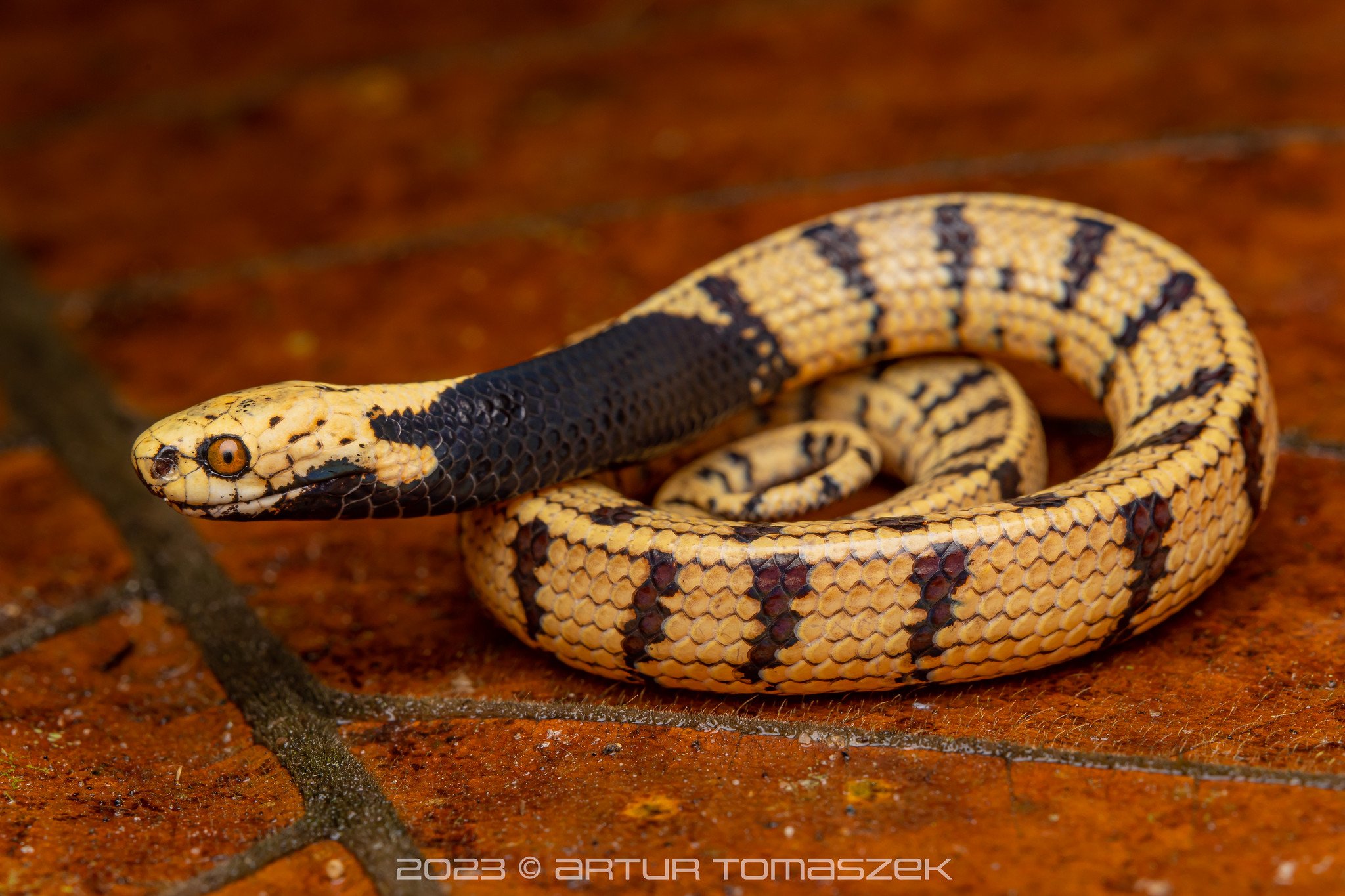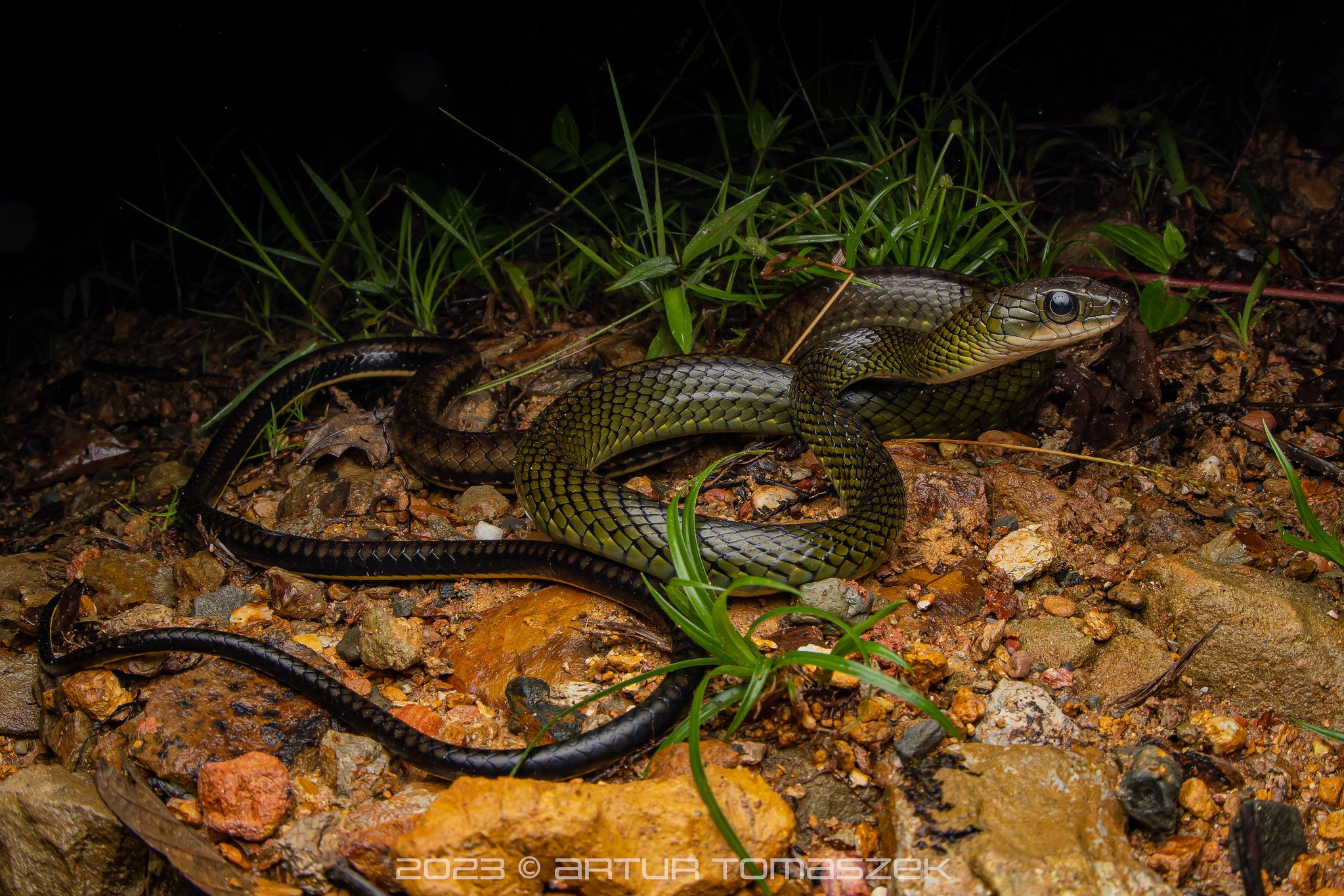Borneo (Jan - Feb 2023)
Camera gear and other equipment taken for the Borneo trip
Our 2 weeks in Borneo (Sabah) began with a 1-day exploration of a park in Kota Kinabalu. At first it was rather promising as we found a Phrynarachne ceylonica among other invertebrates and we spotted a couple of monitor lizards casually swimming in a nearby pond. Sadly, about an hour into the walk, it started raining cats and dogs. The rain was incessant and just kept getting heavier and heavier so we had to find a shelter and call it a day. This was just the beginning of a never-ending weather battle we had to fight for the rest of our stay.
Phrynarachne ceylonica. It both smells like and resembles bird faeces, hence it’s known as bird dung spider (read more)
Piranthus bakau (jumping spider) from Kota Kinabalu
In the evening, now a team of 4, we jumped into a rented car and ventured - in heavy rain and complete darkness - on a 2-hour bumpy (the quality of roads was, unsurprisingly, not great) journey towards Kinabalu Park. On the following days we explored a few highland and lowland areas and trails of the park; the rain was our constant enemy at that point as most creatures aren’t particularly fond of being literally splashed with buckets of water right in their face, or drowned in huge raindrops in case of insects. The short intervals between downpours allowed us to spot some fabulous animals though, including the first snake of the trip, Ptyas fusca (white-bellied rat snake) followed by Asthenodipsas borneensis (Bornean dark-necked slug snake) to Karolina’s delight as slug snakes are her favourite.
Ready to explore!
The habitat differences between the highland and lowland areas of the park were quite significant. The highlands made us work harder for insects, especially during rain which usually also brought cooler winds, but once we found something it was quite exciting!
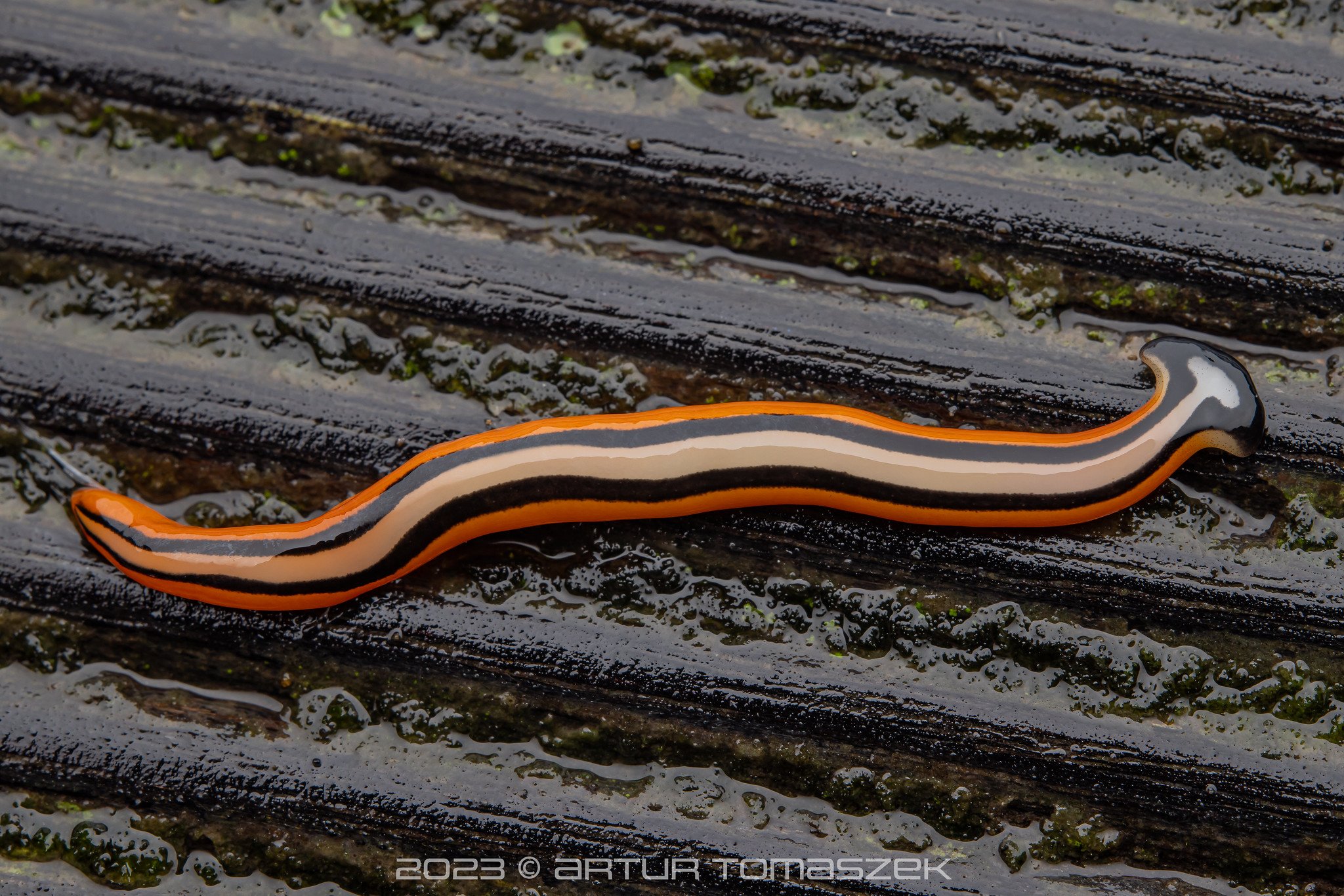
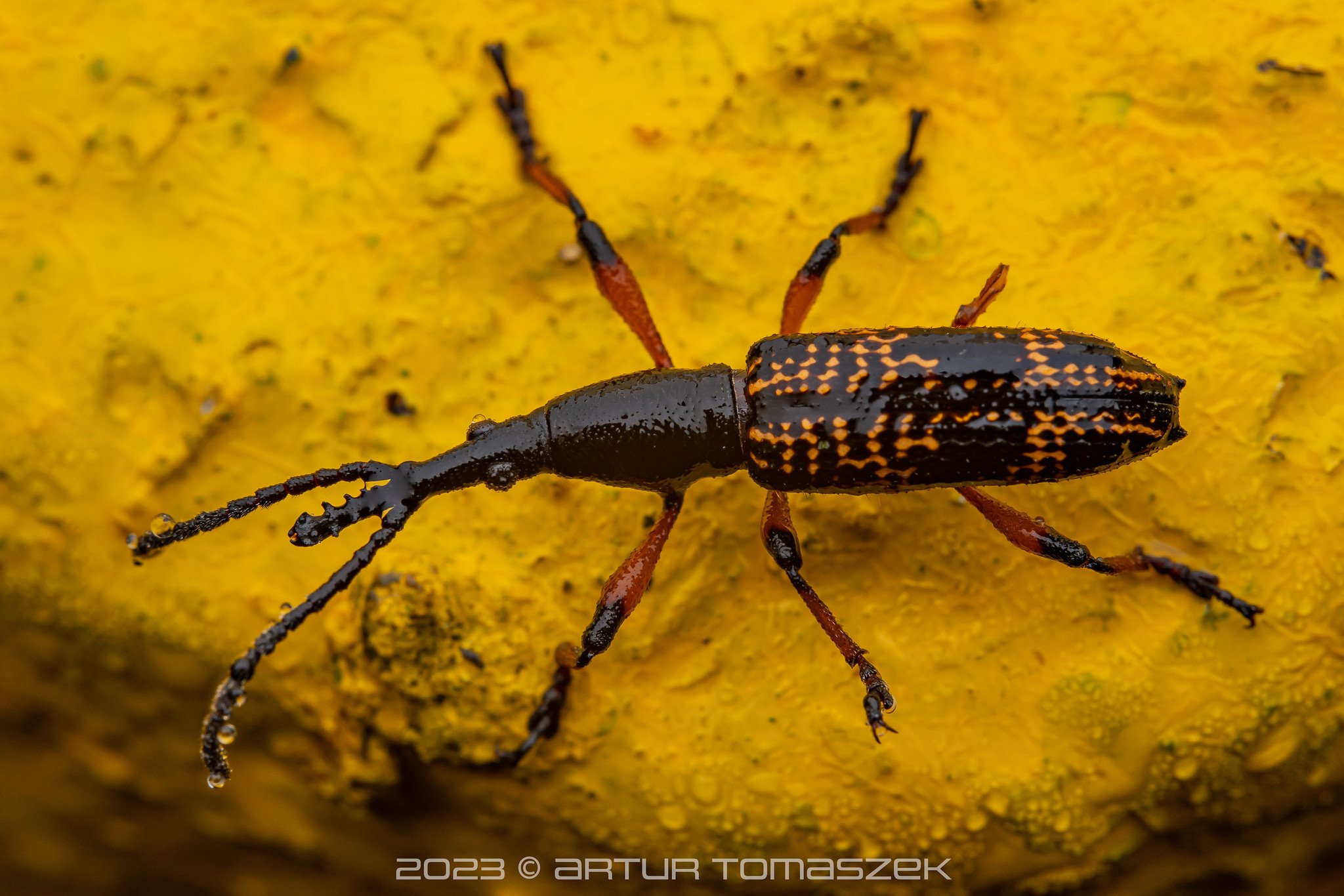
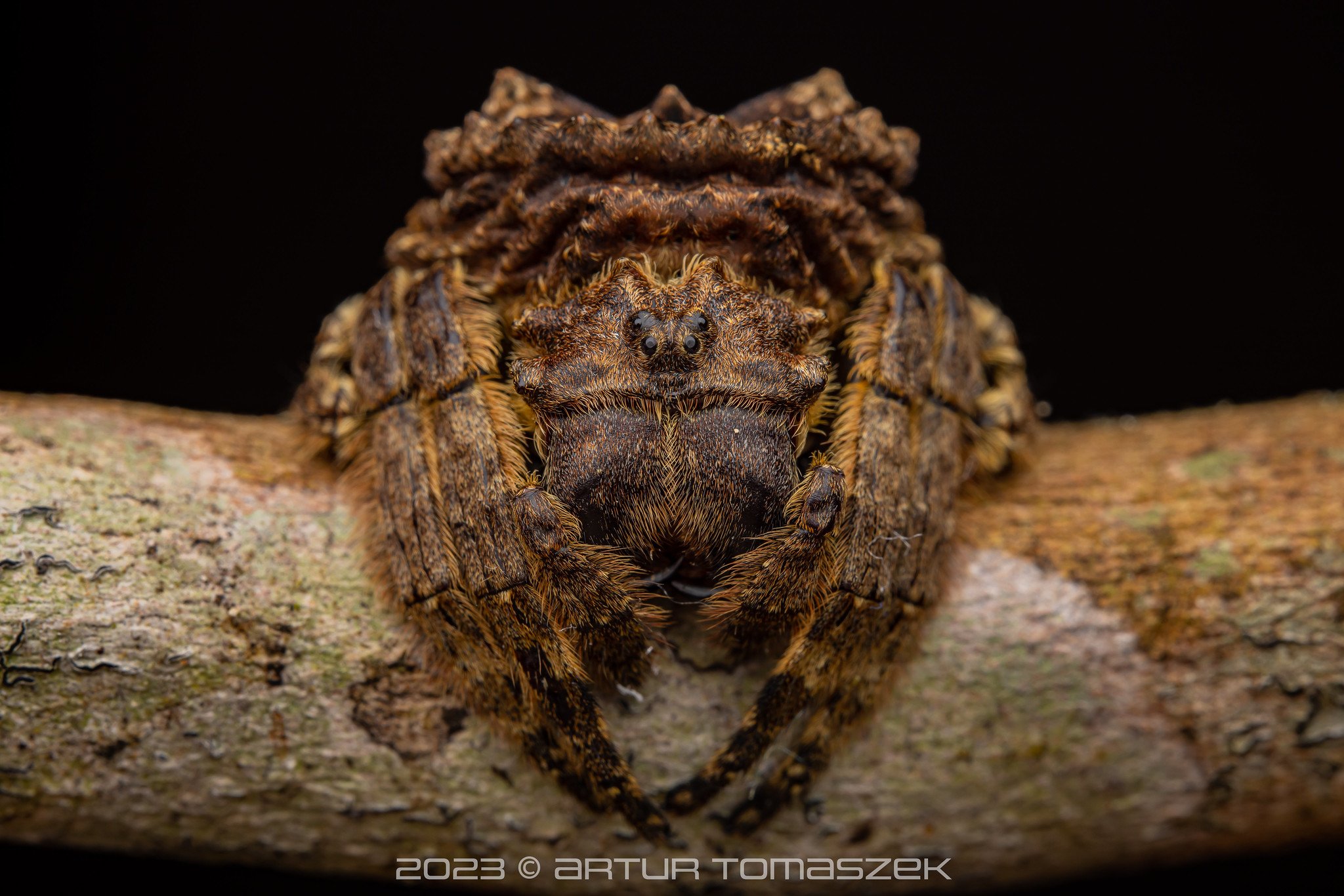
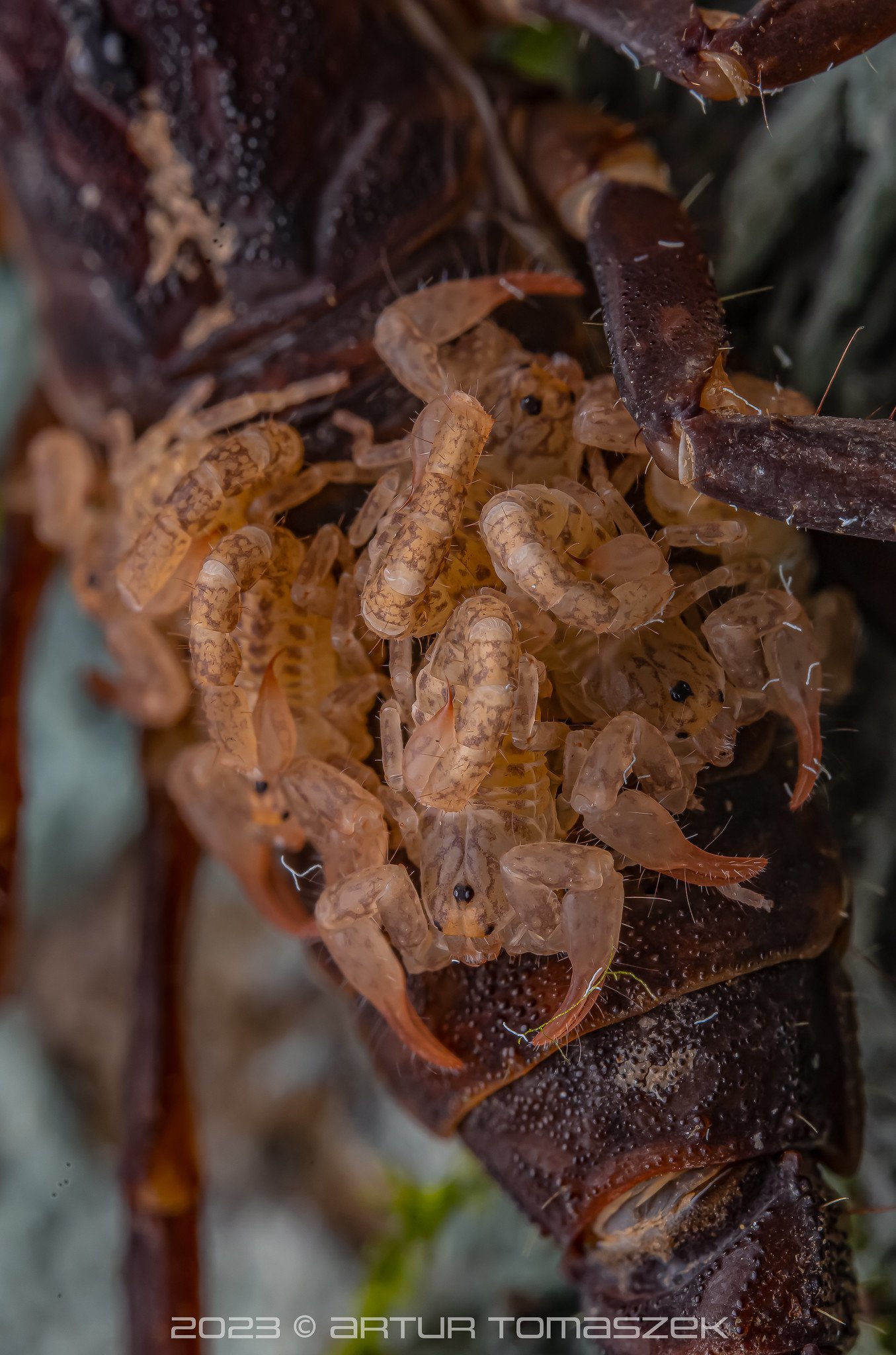
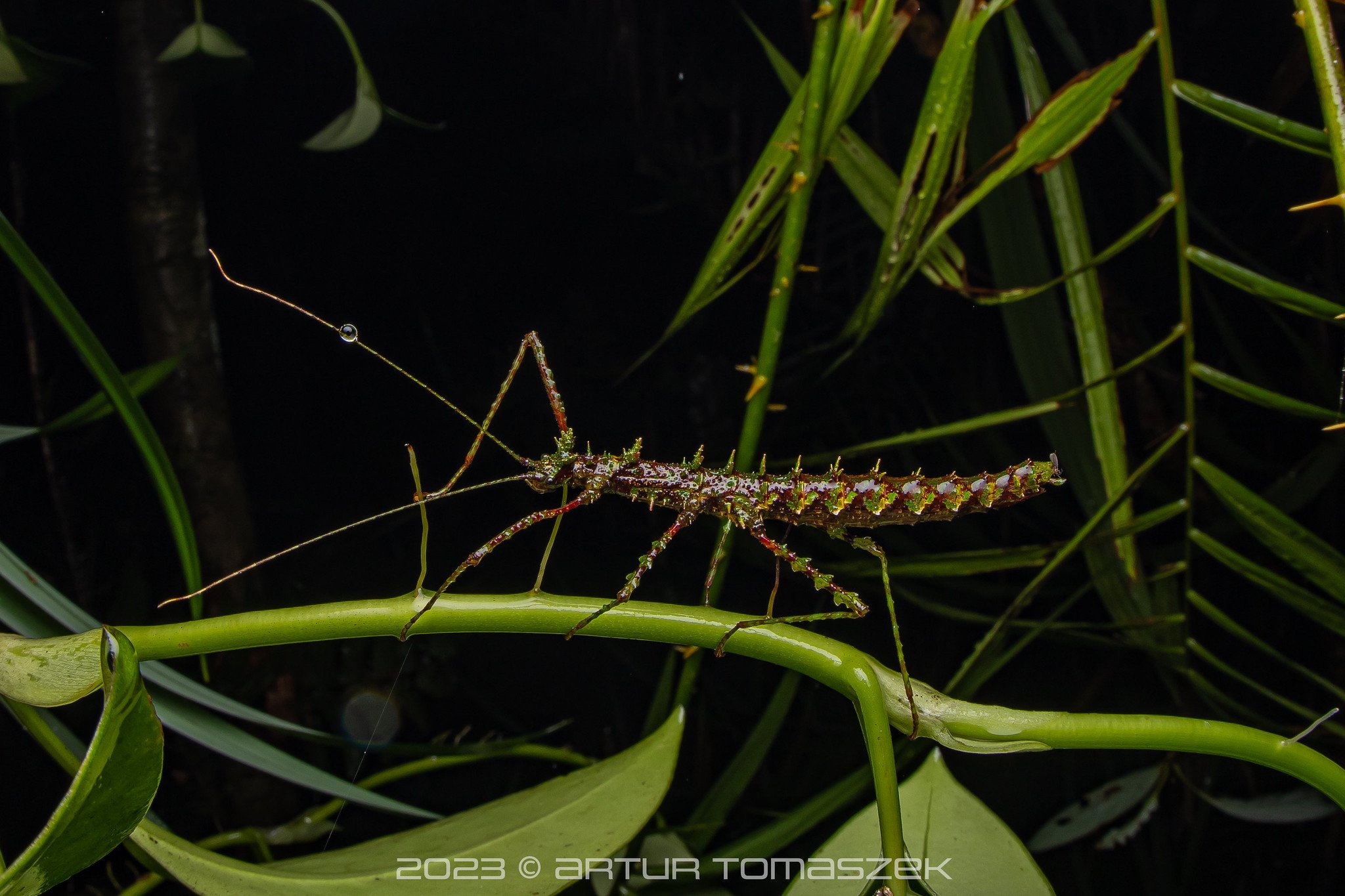
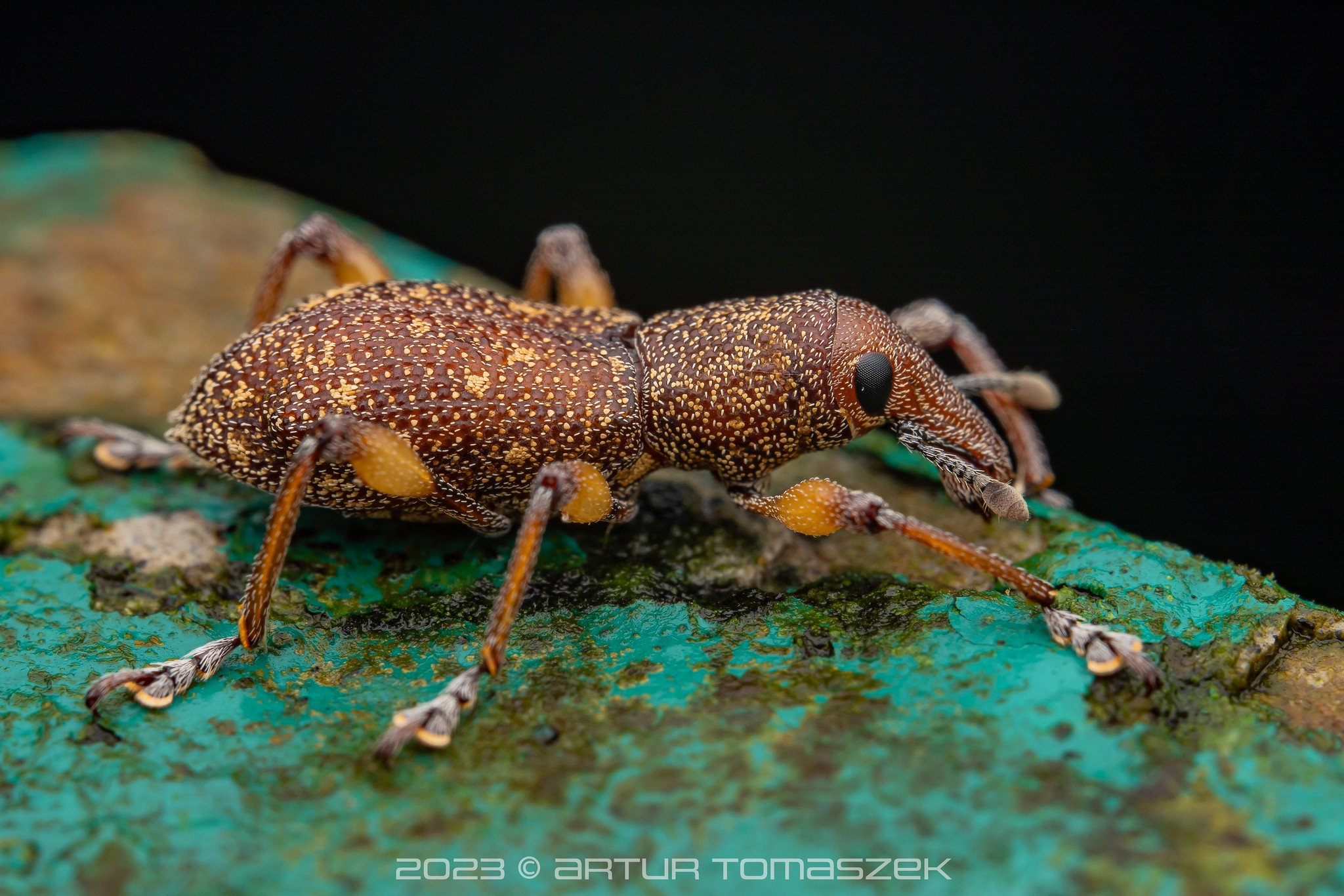
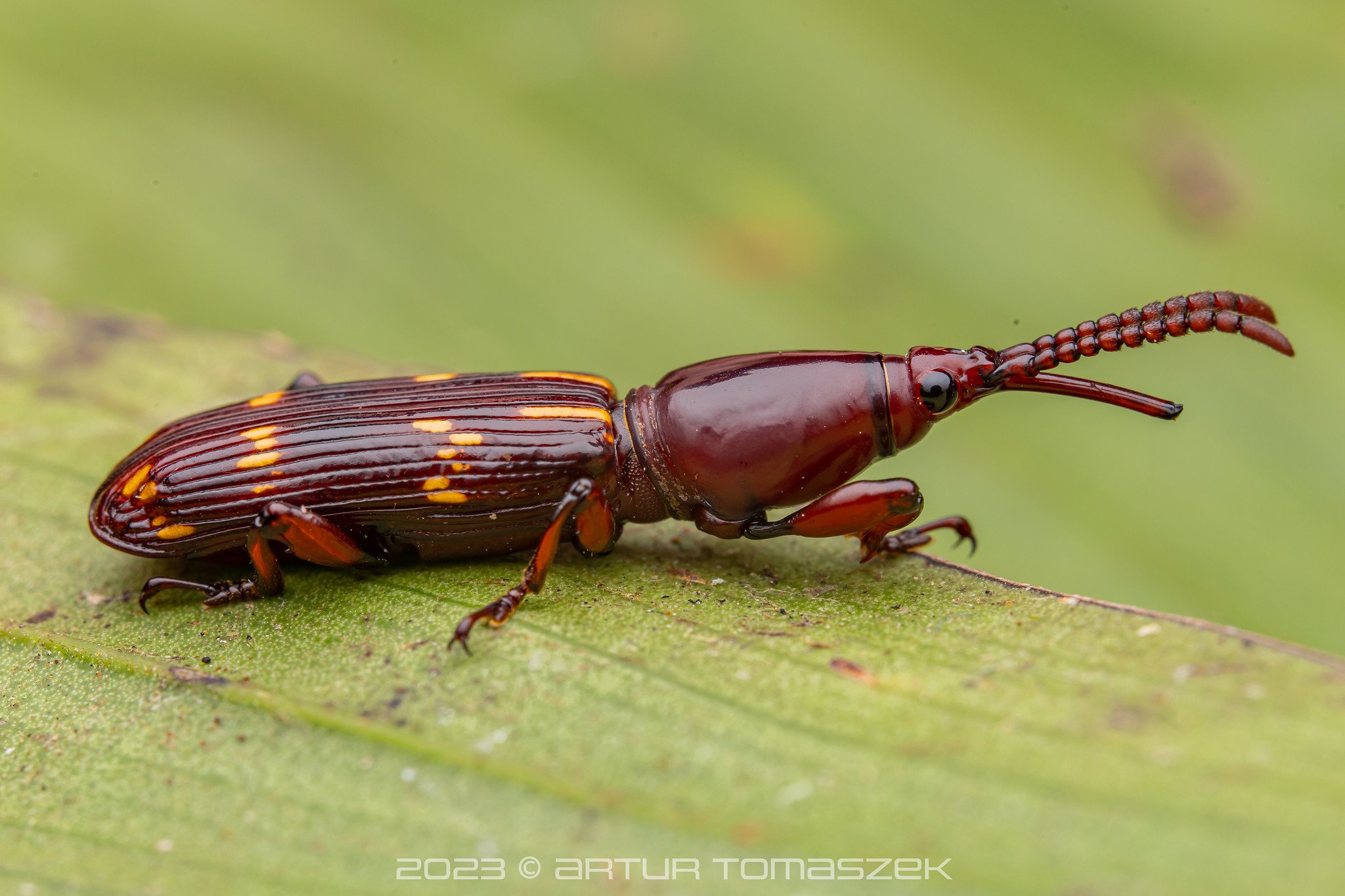
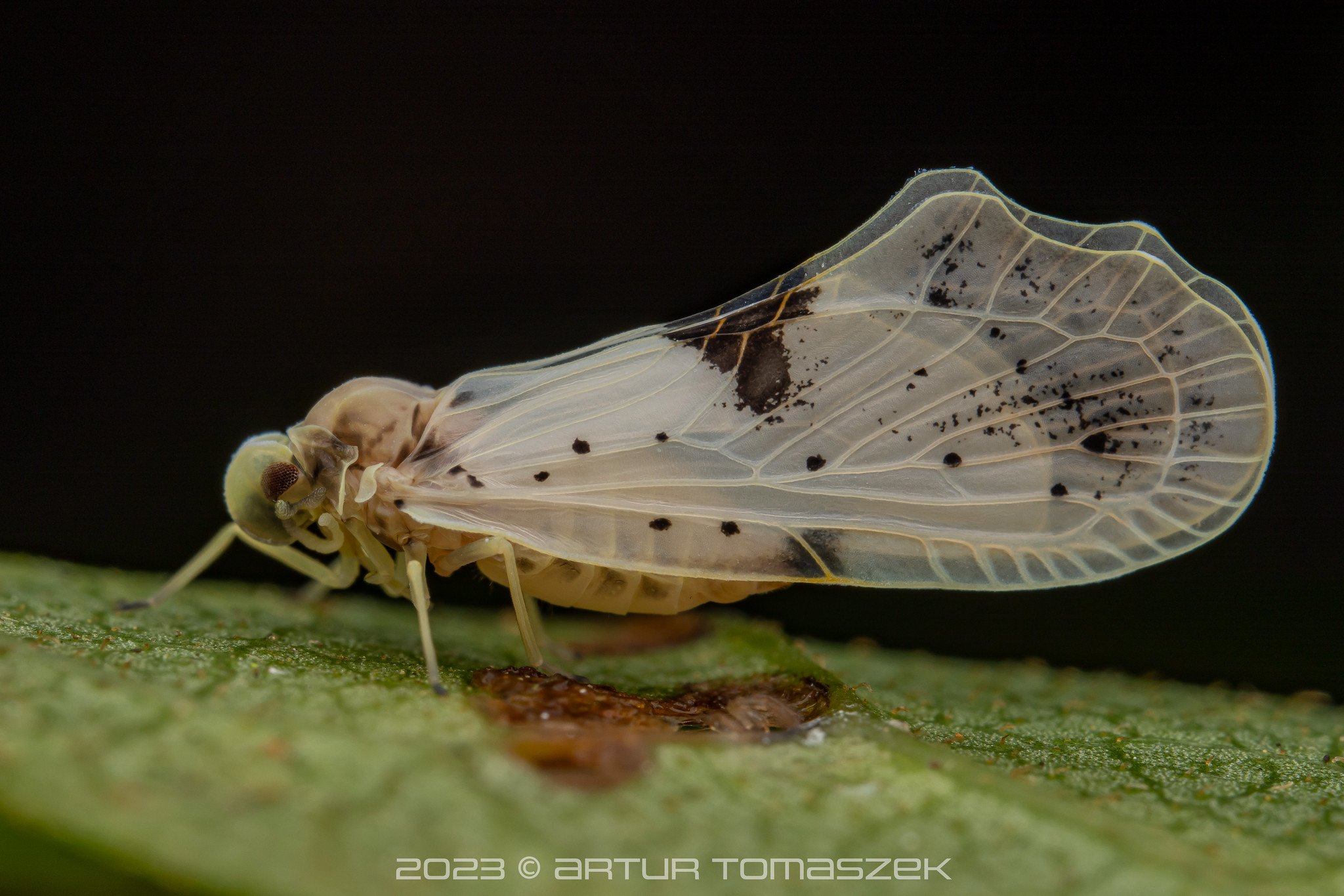
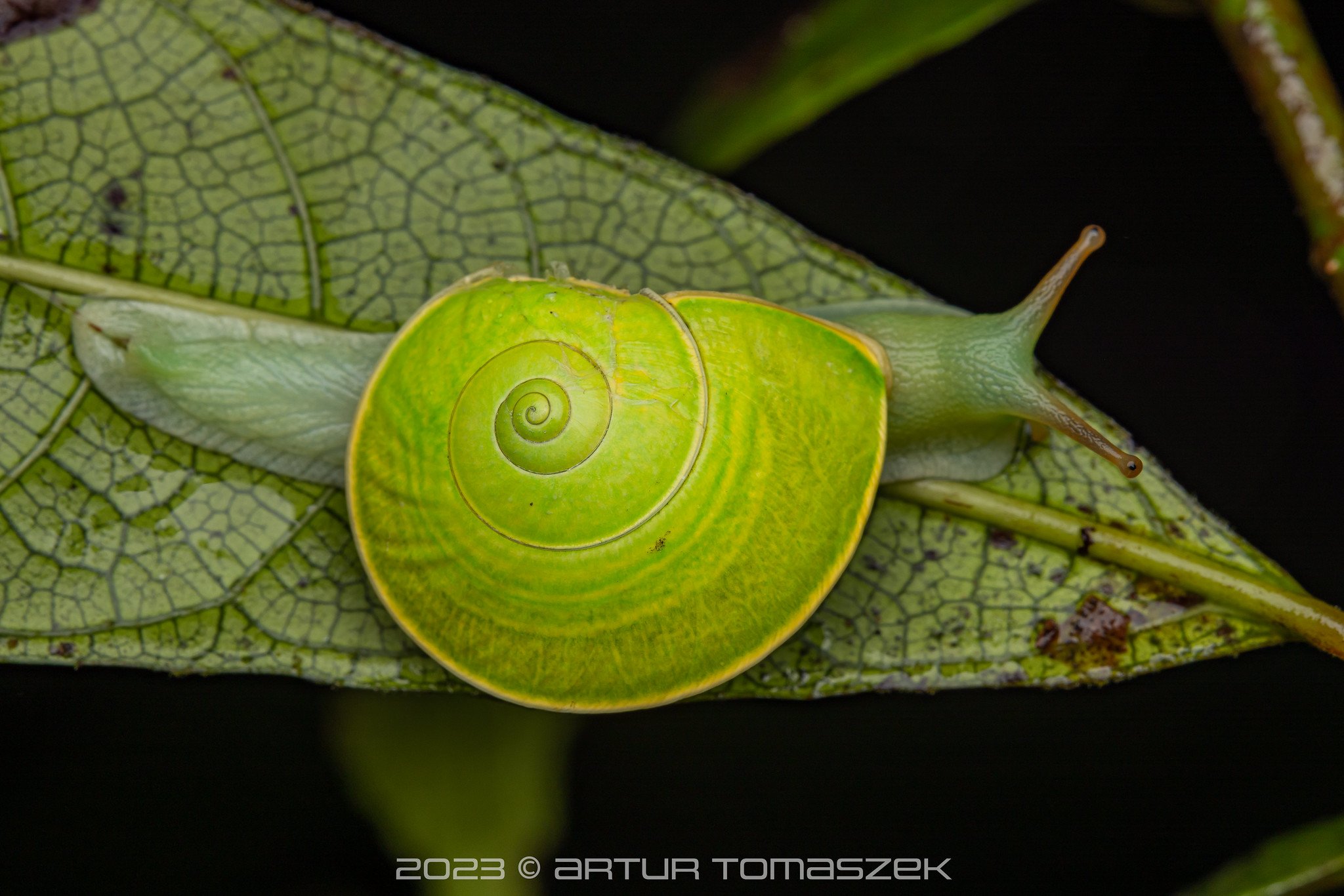
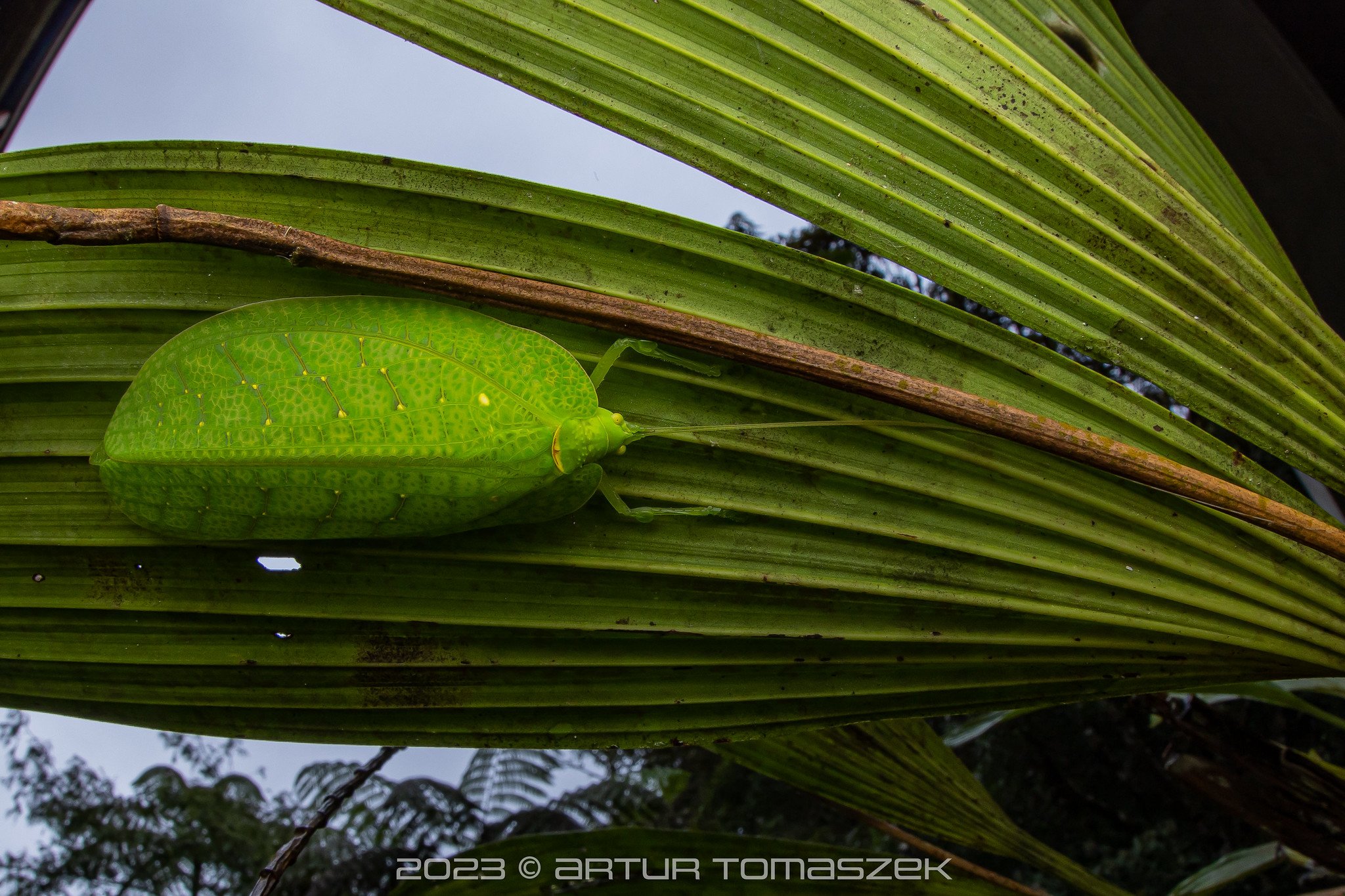
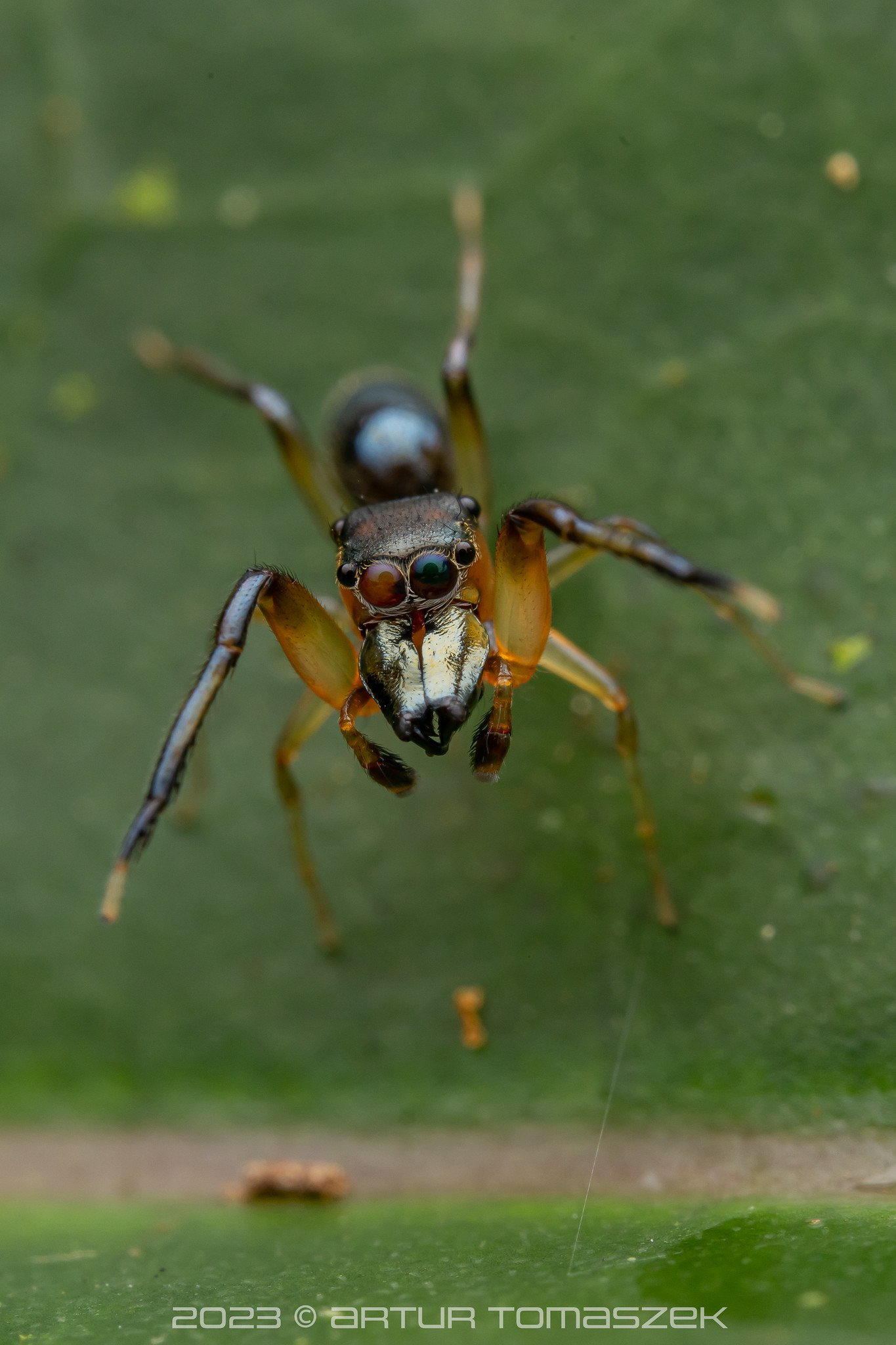
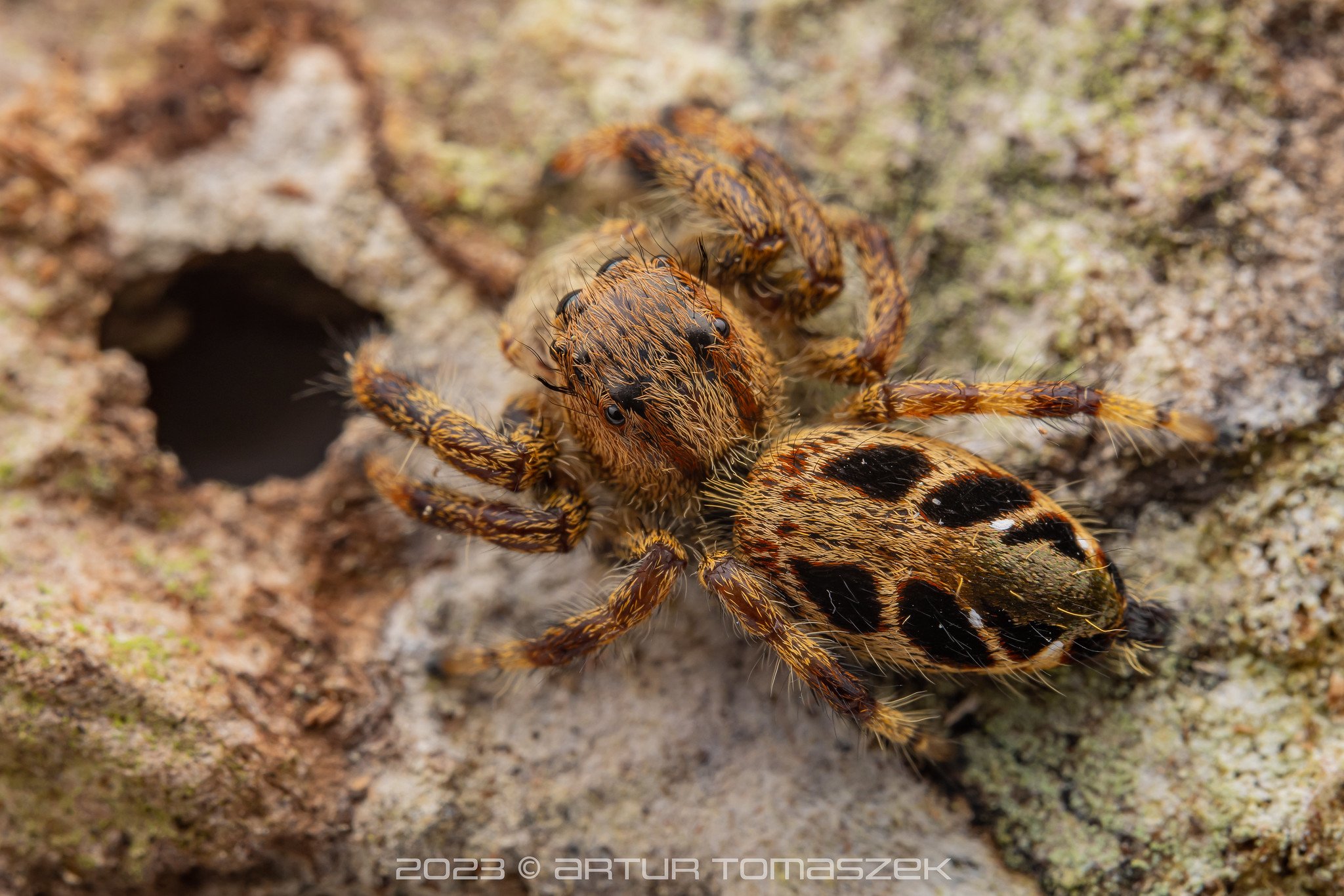
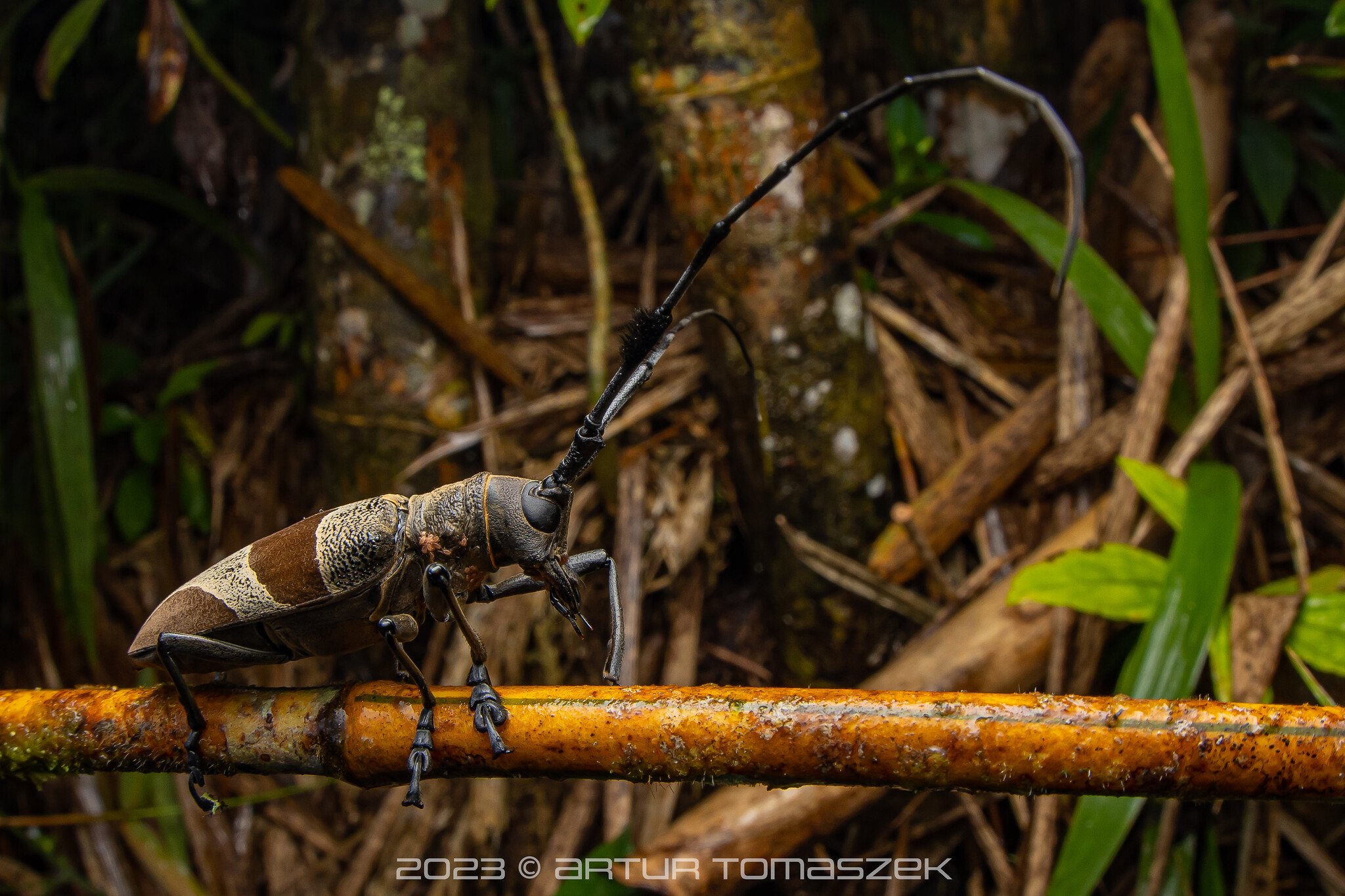
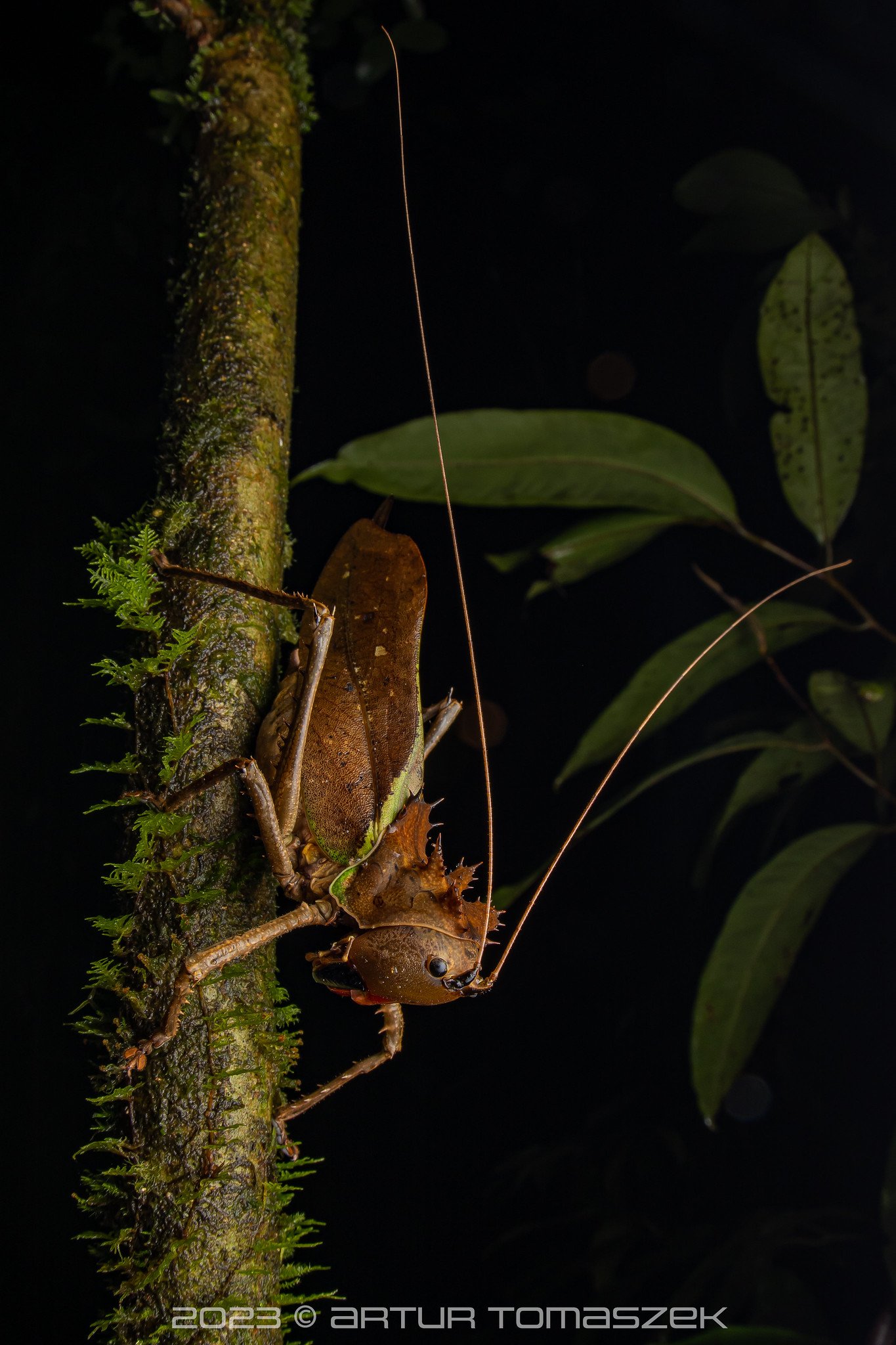
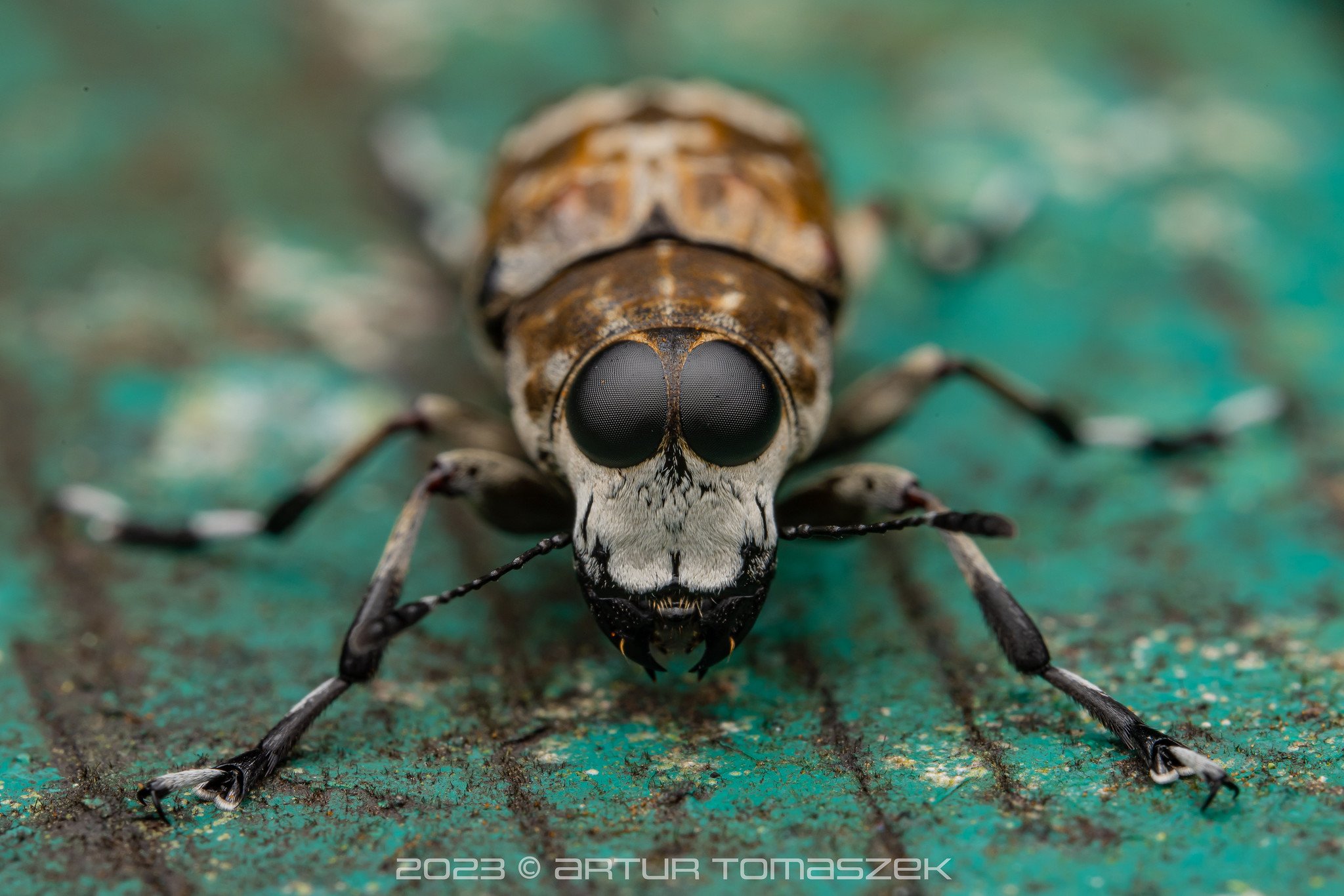
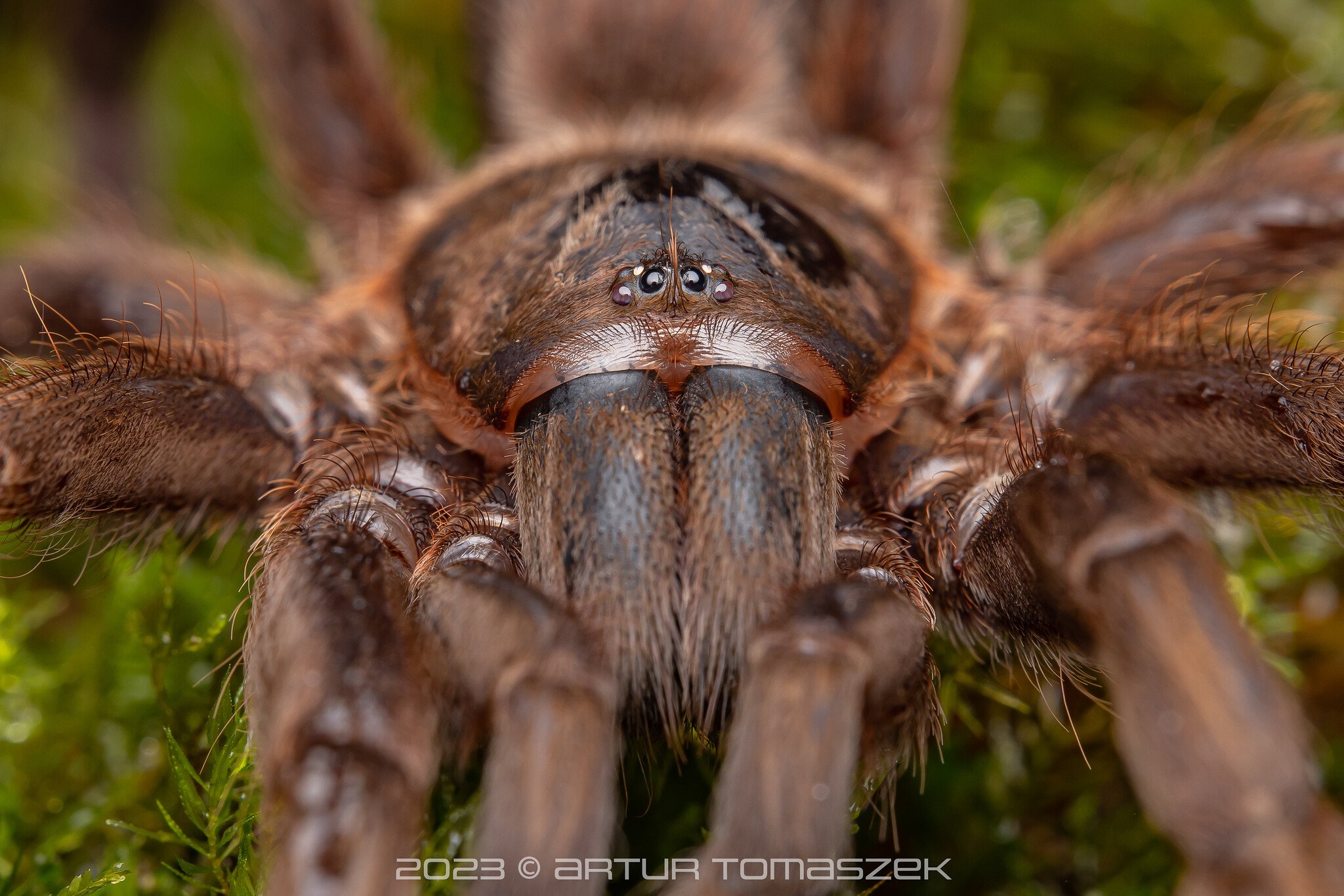
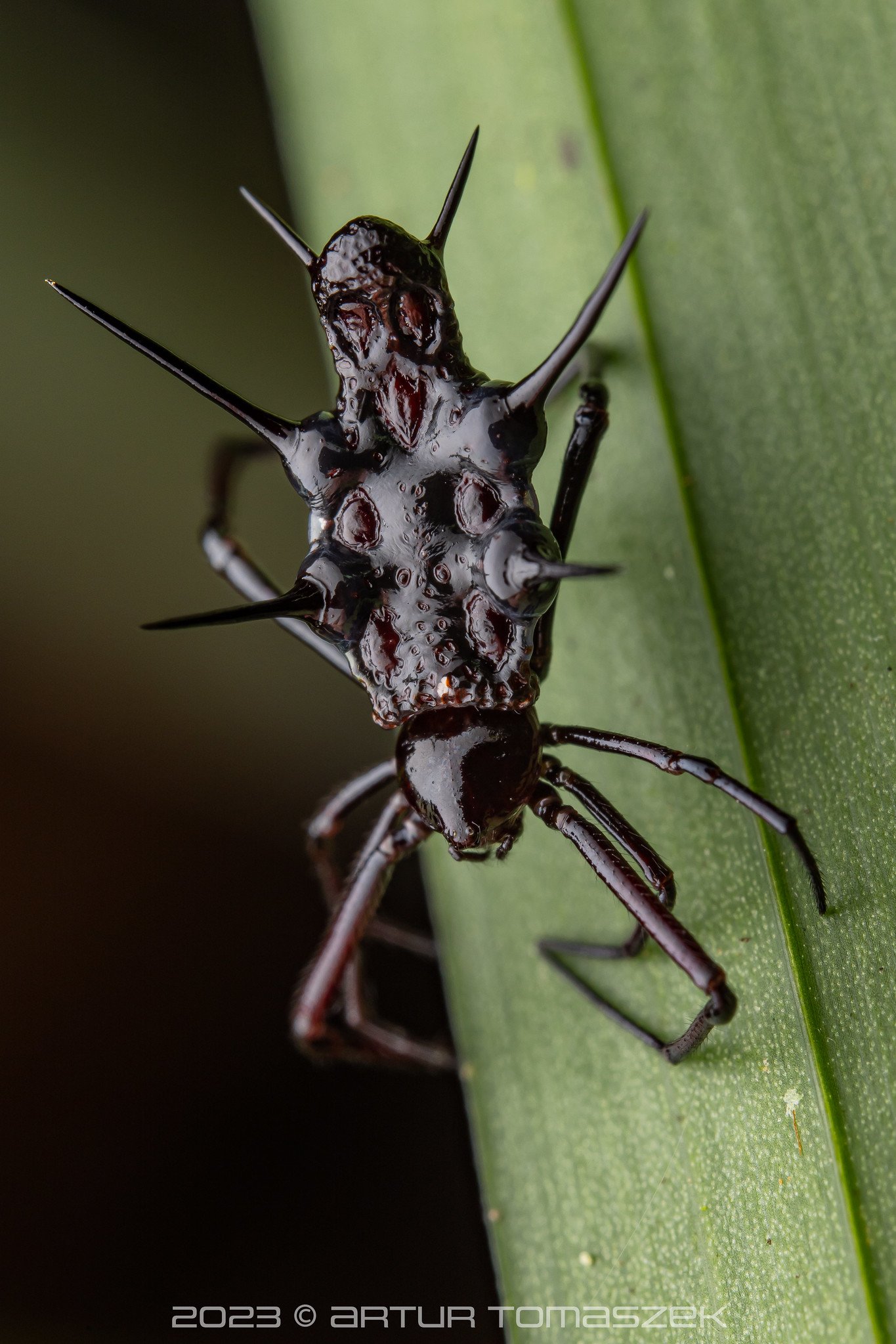
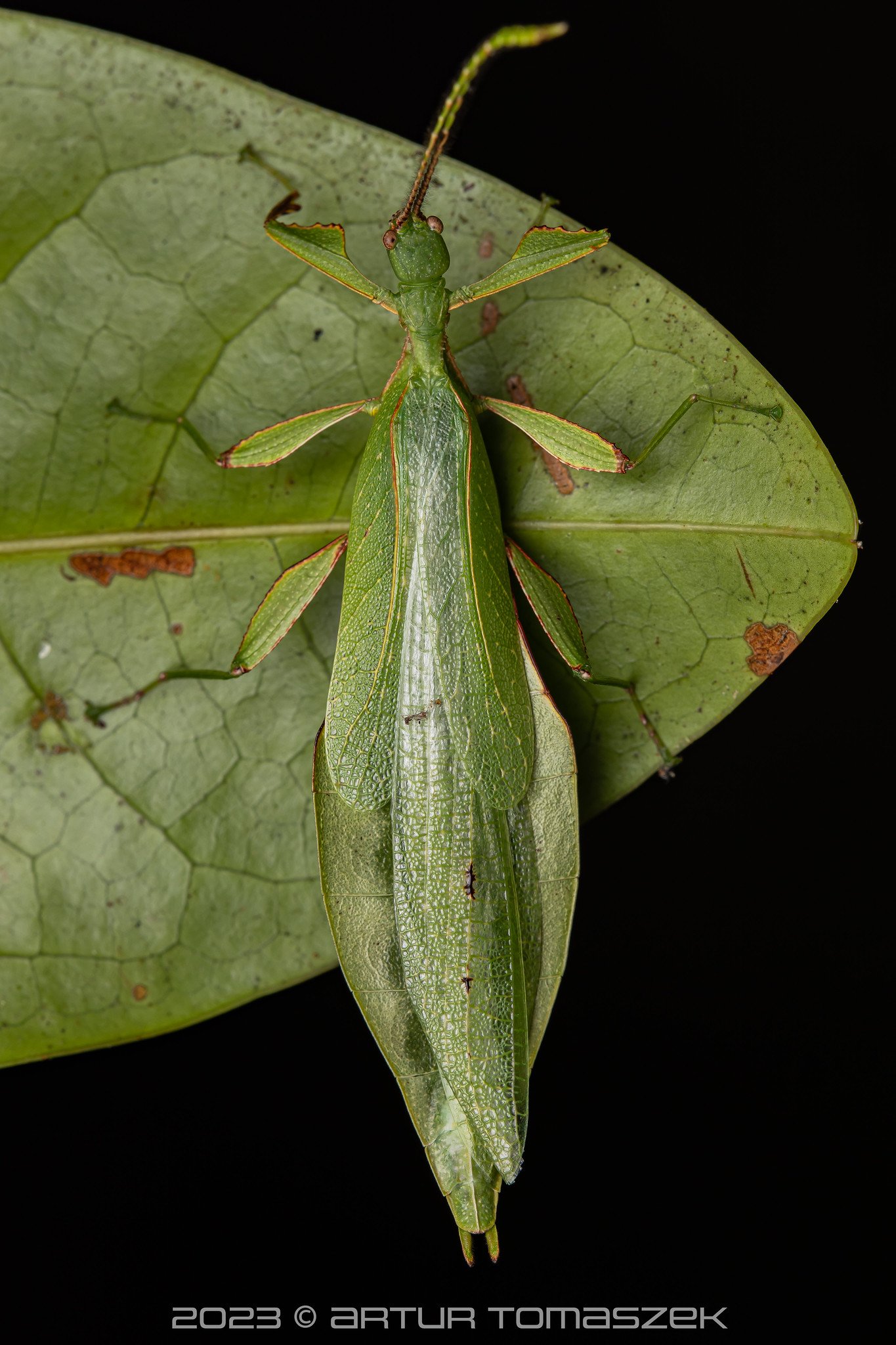
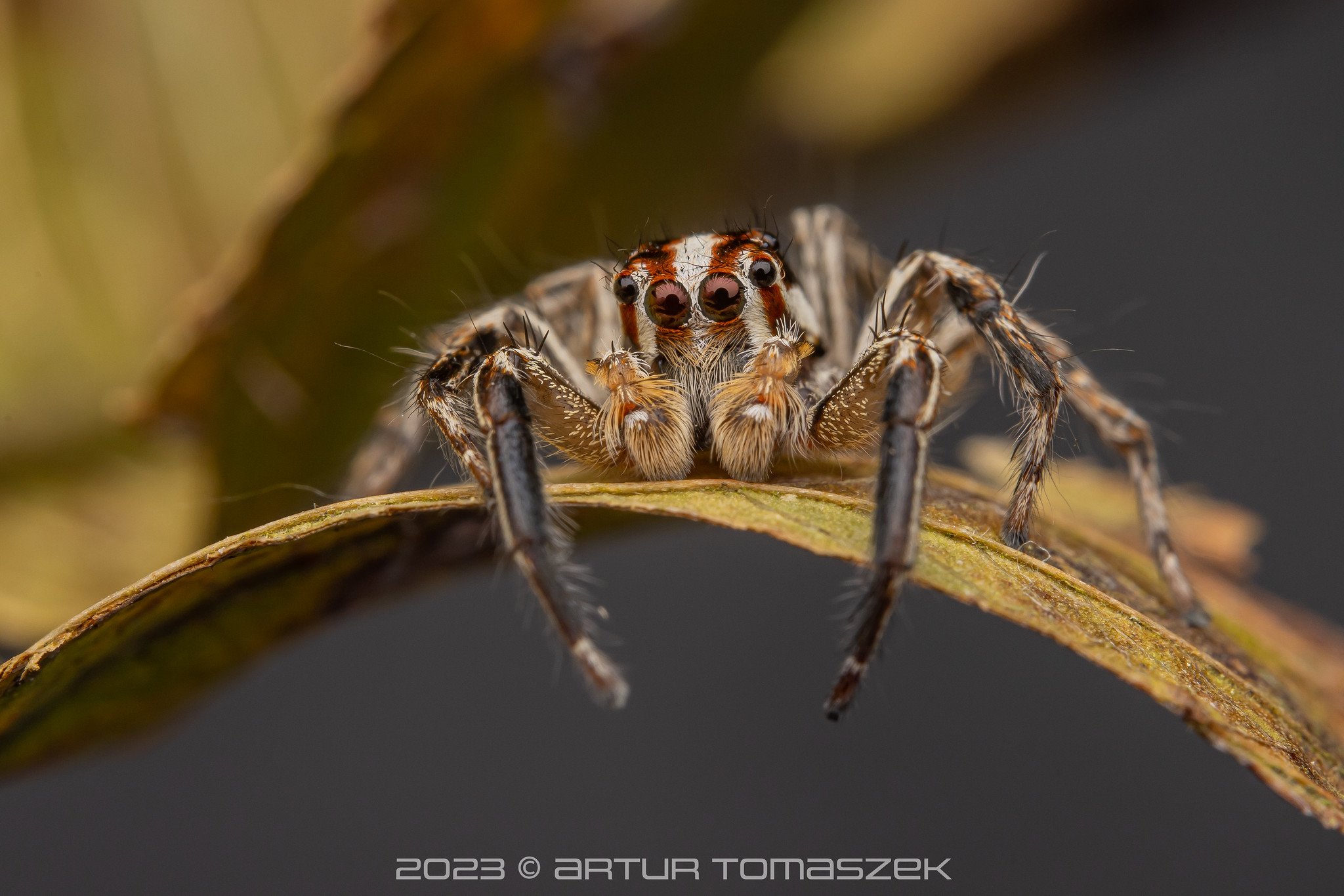
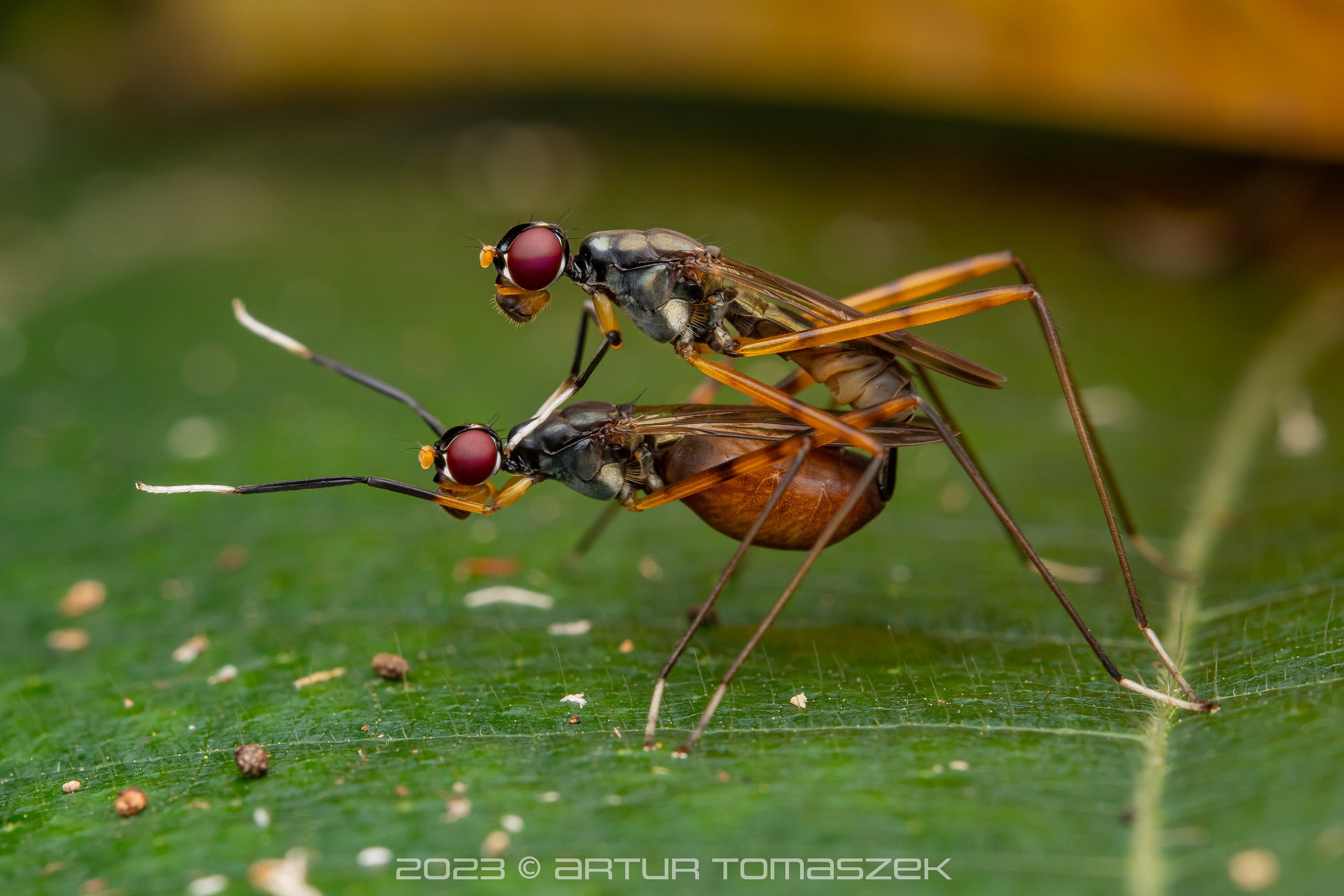
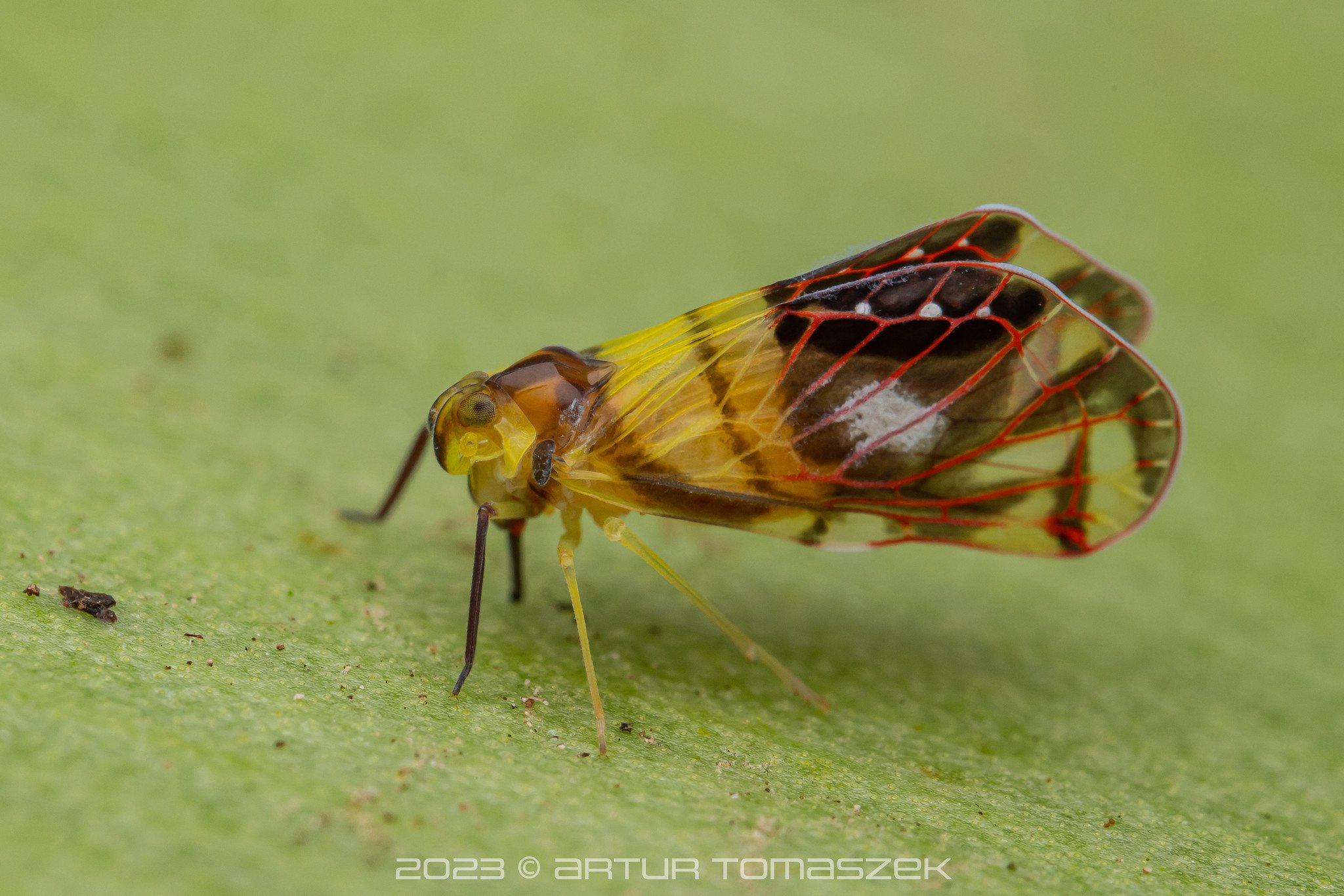
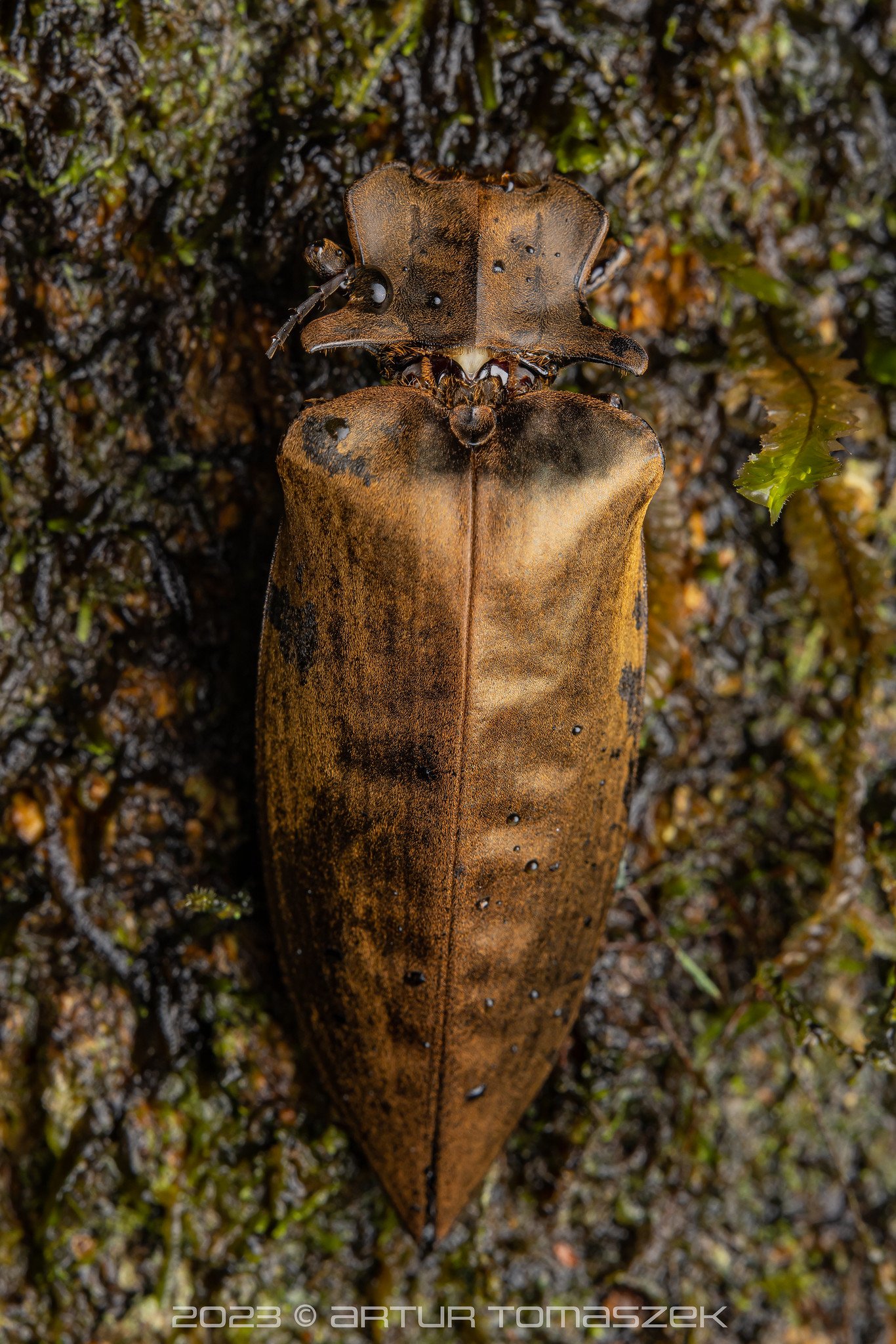
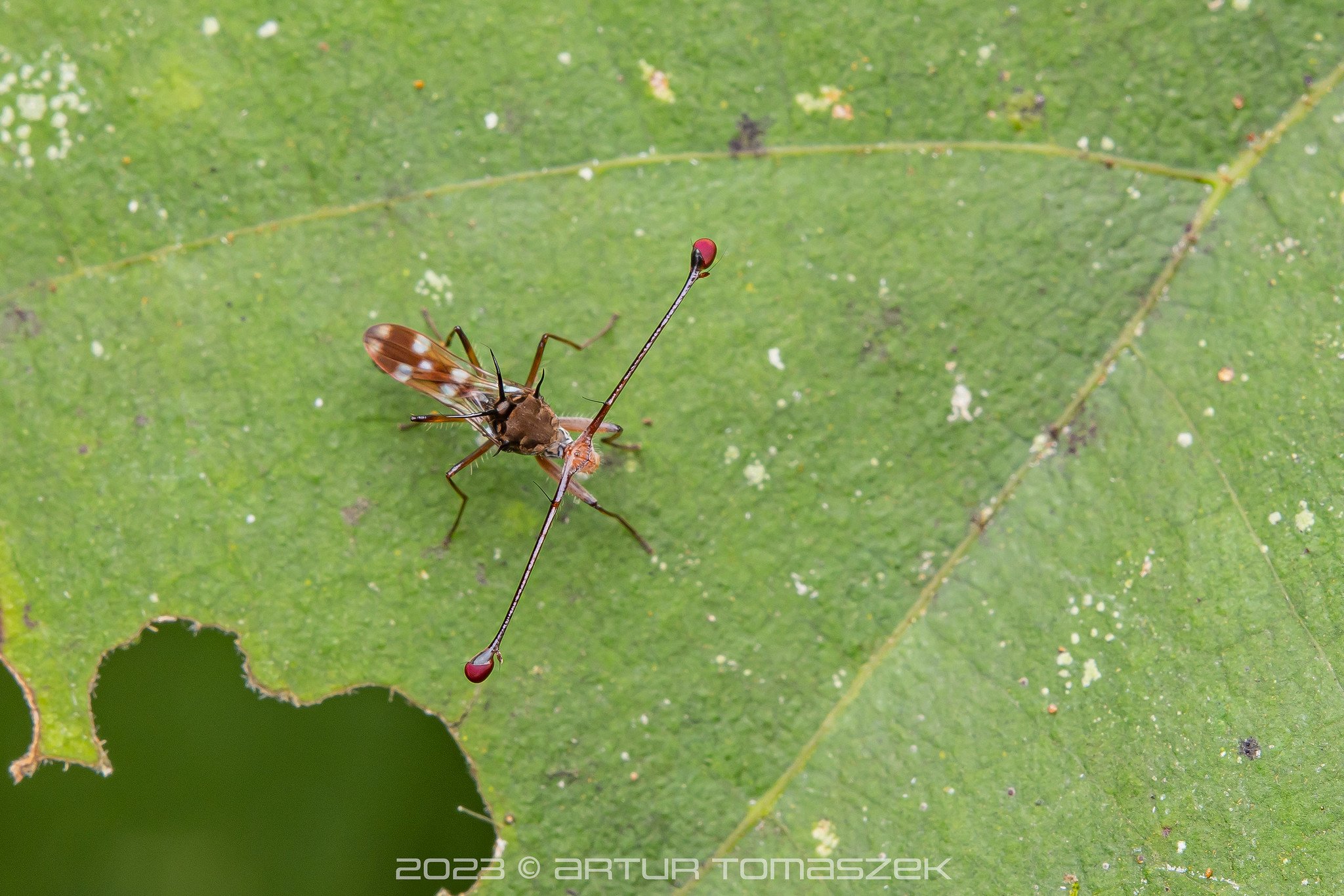
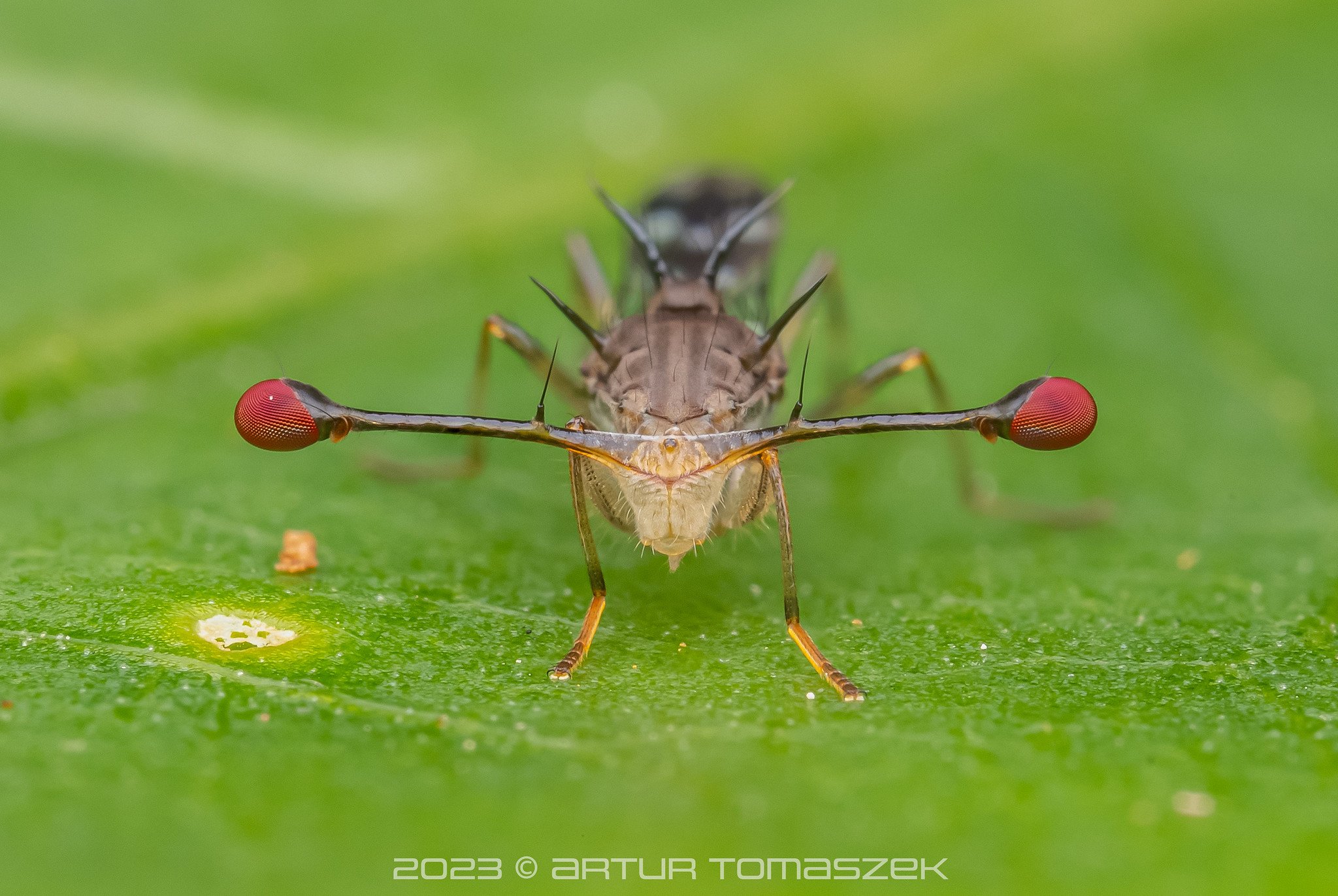
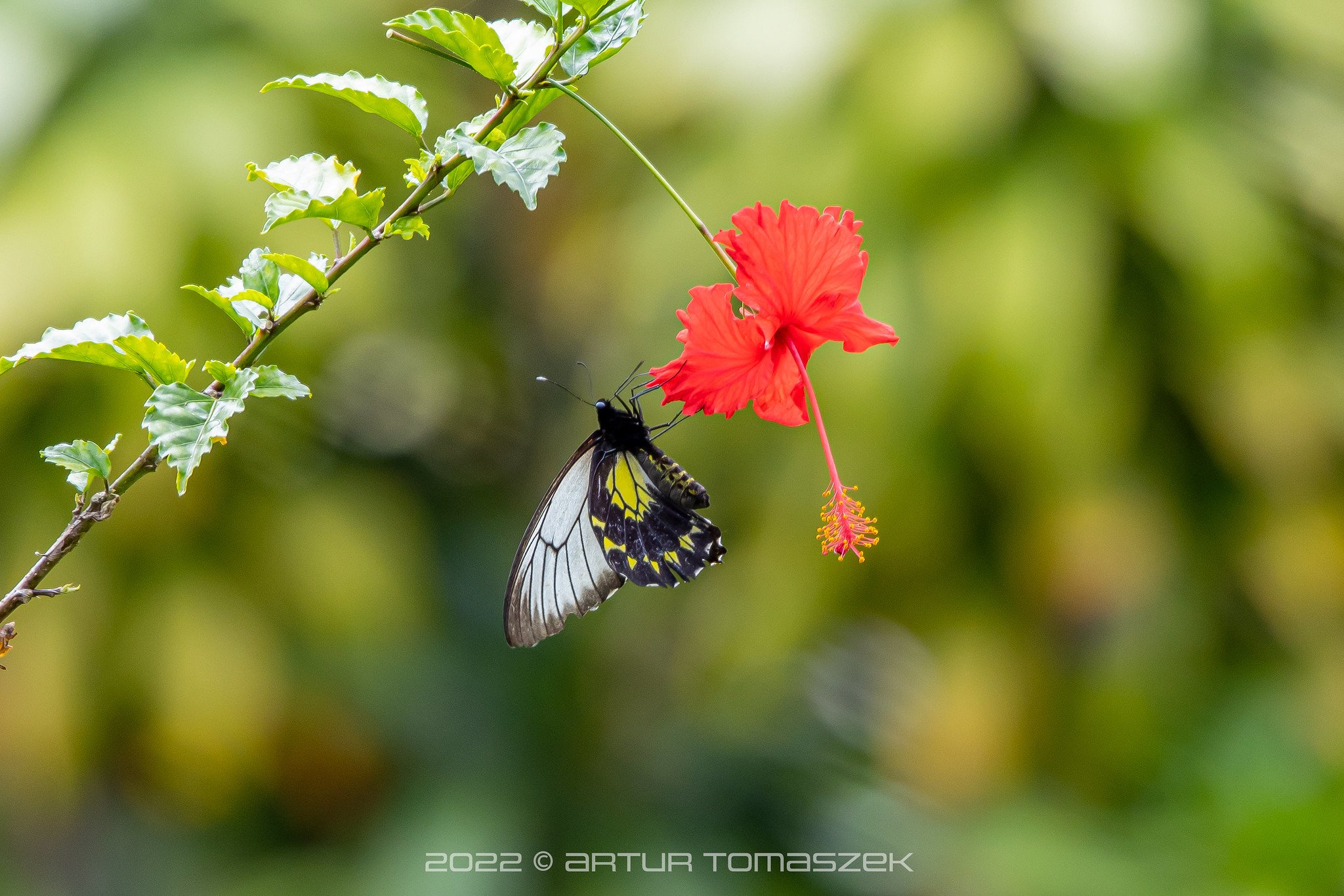
The lowland with higher temperatures also proved pretty successful in the invertebrate department and presented us with a very diverse set of creepy crawlies.
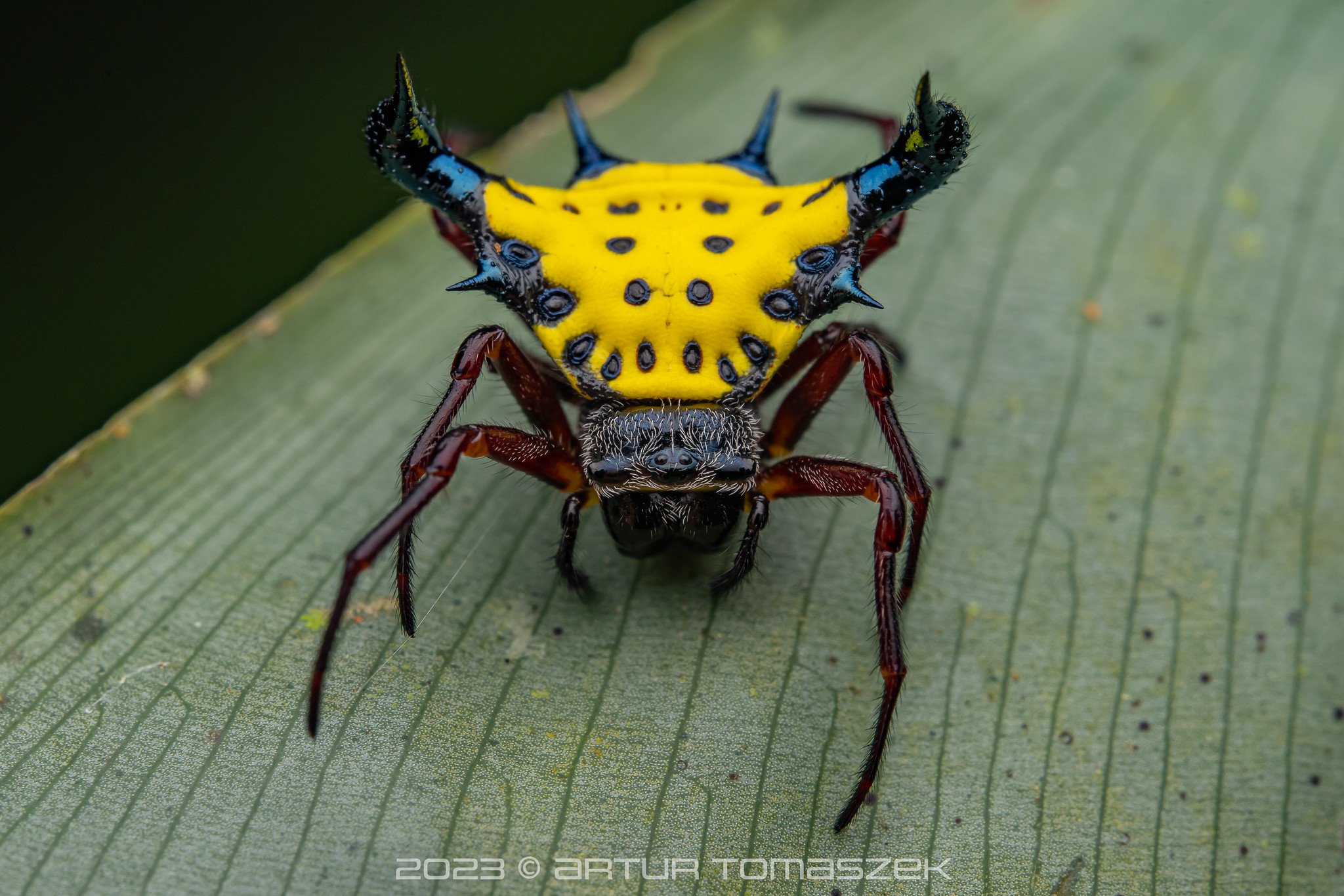
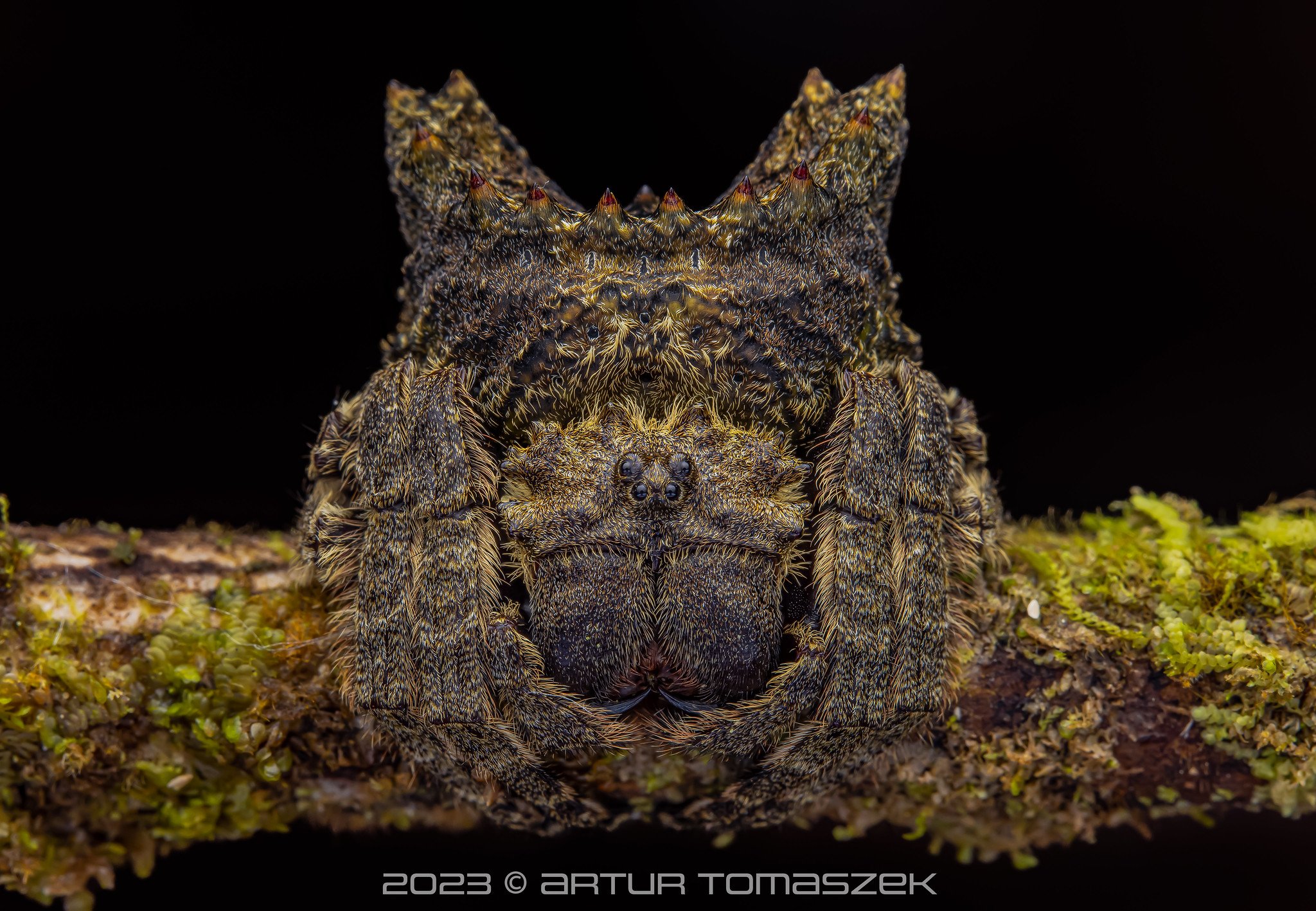
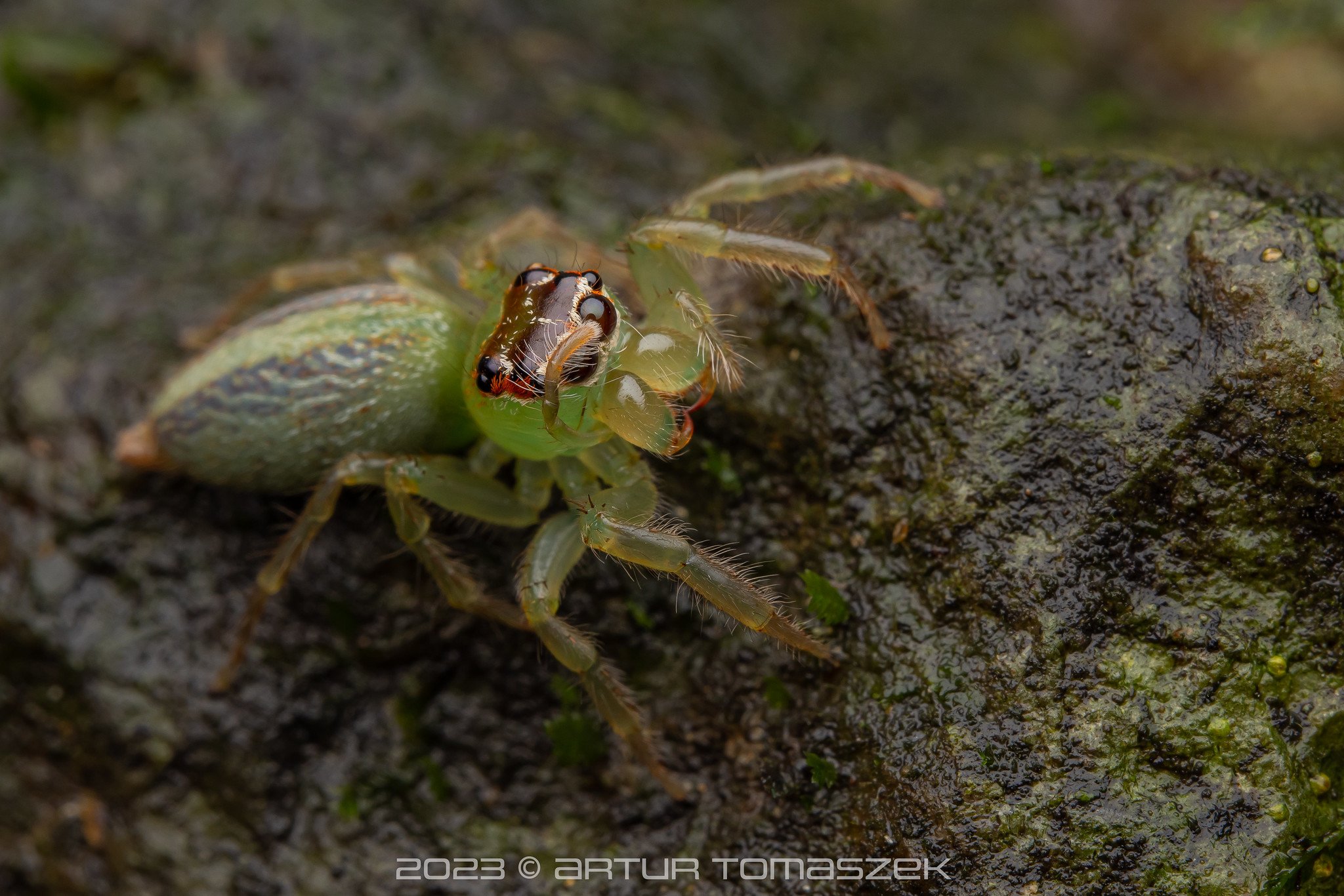
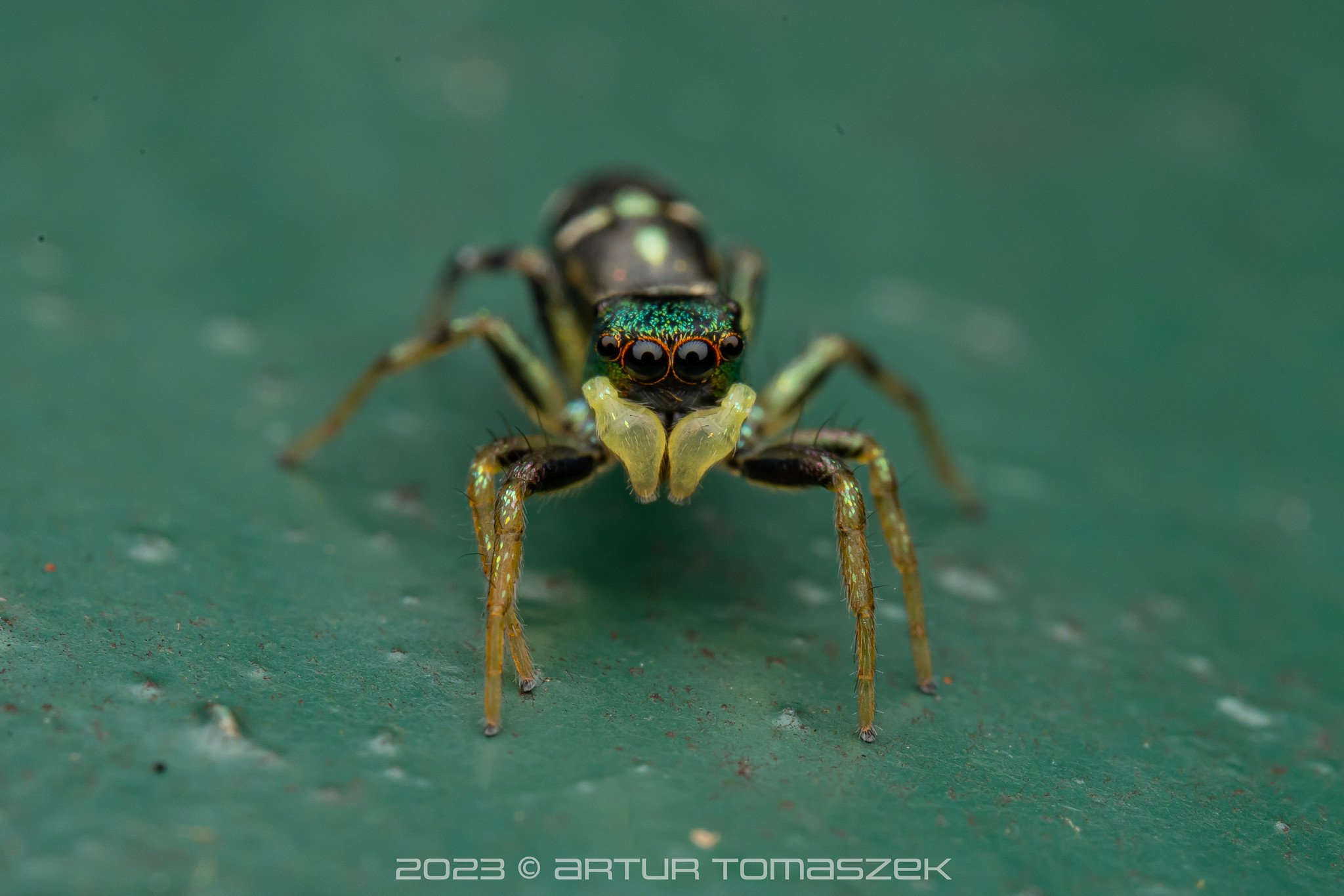
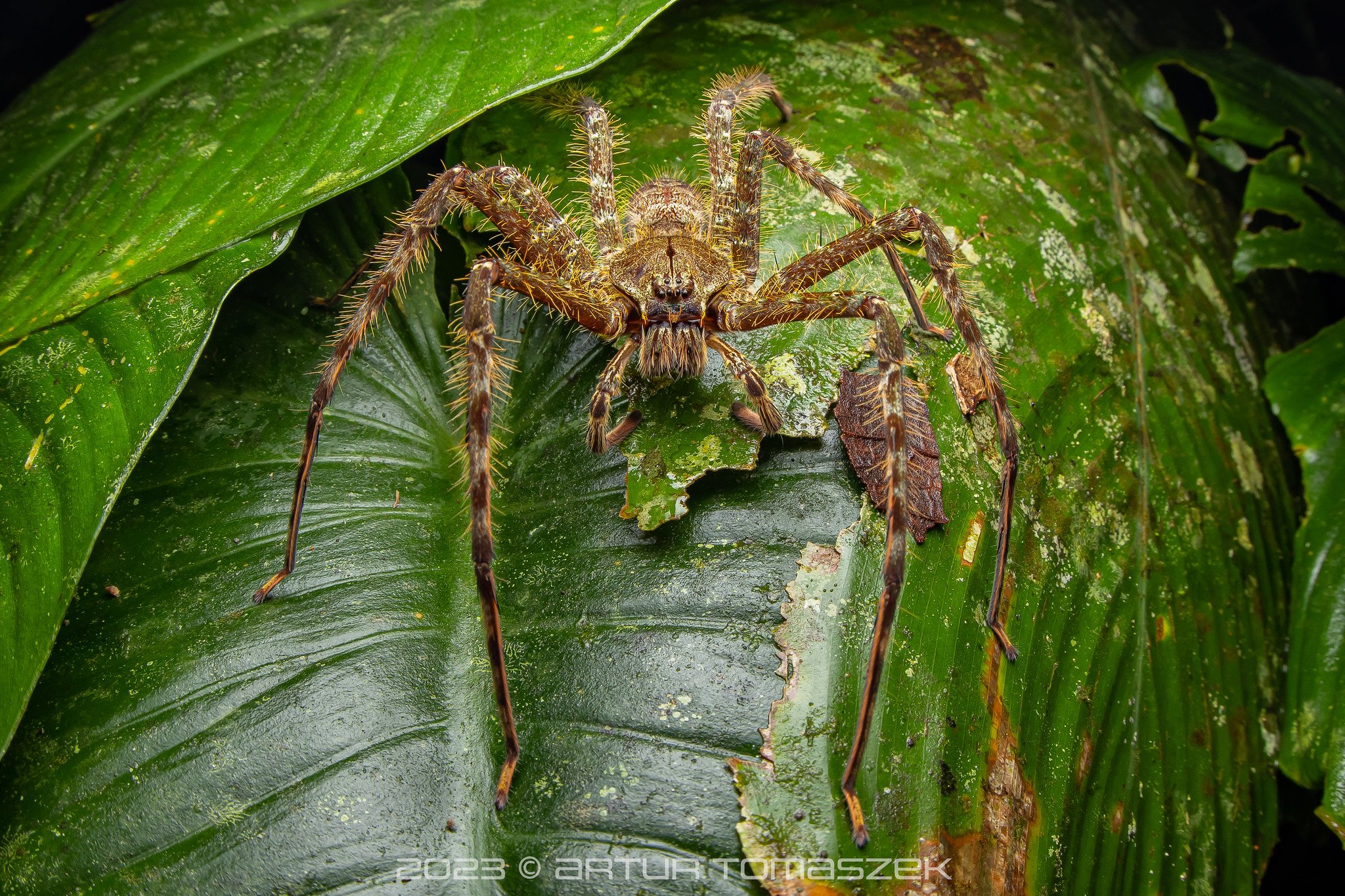
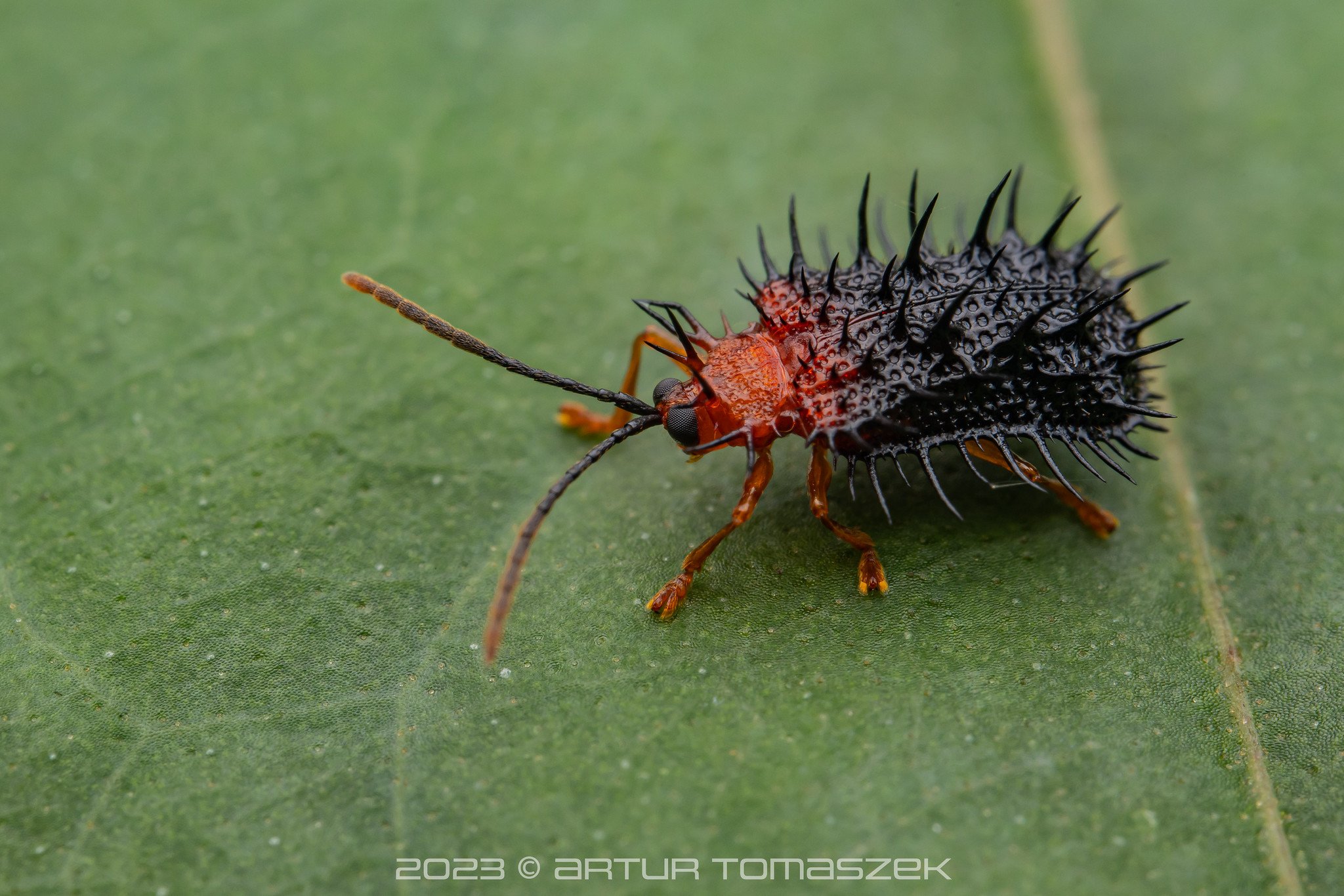
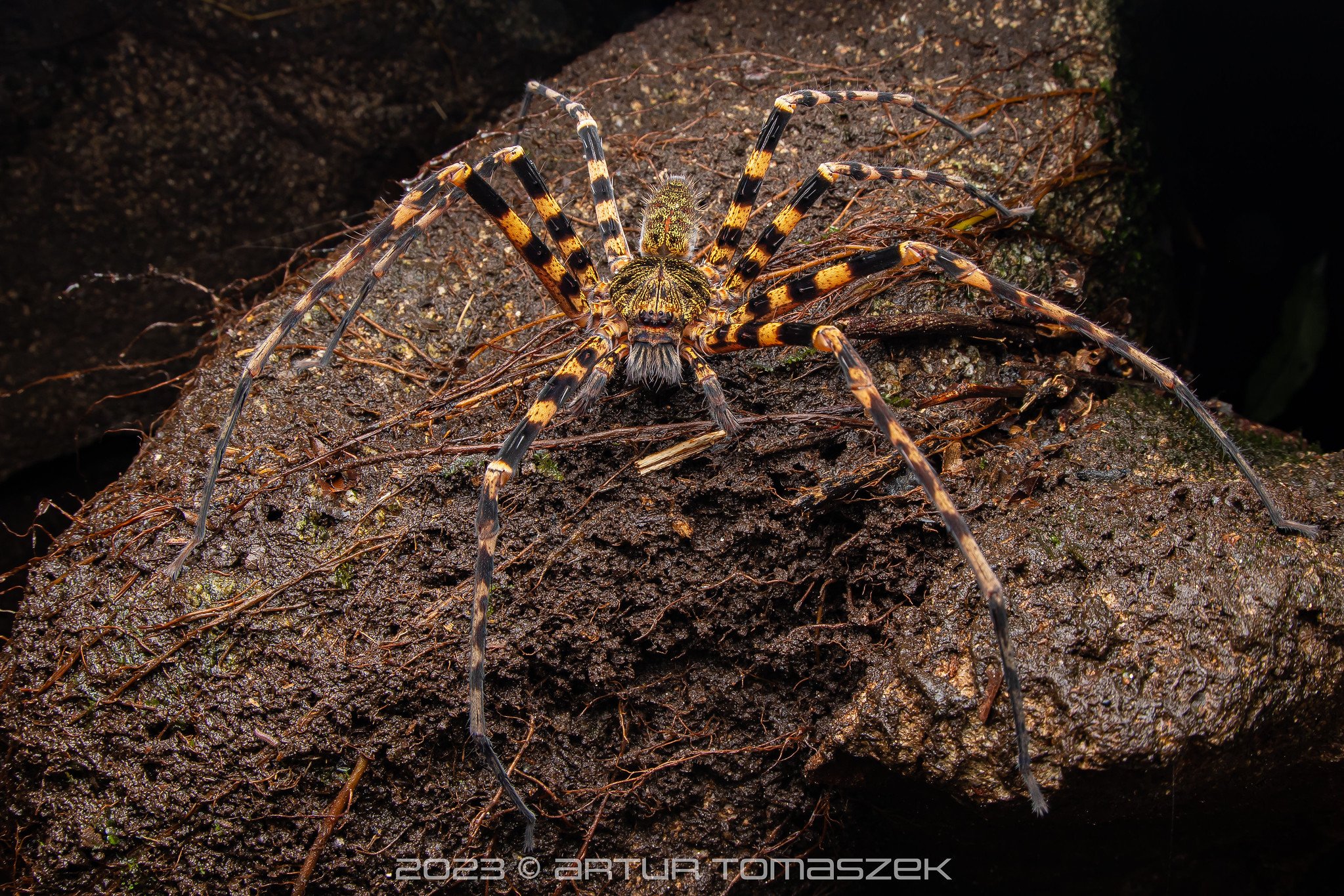
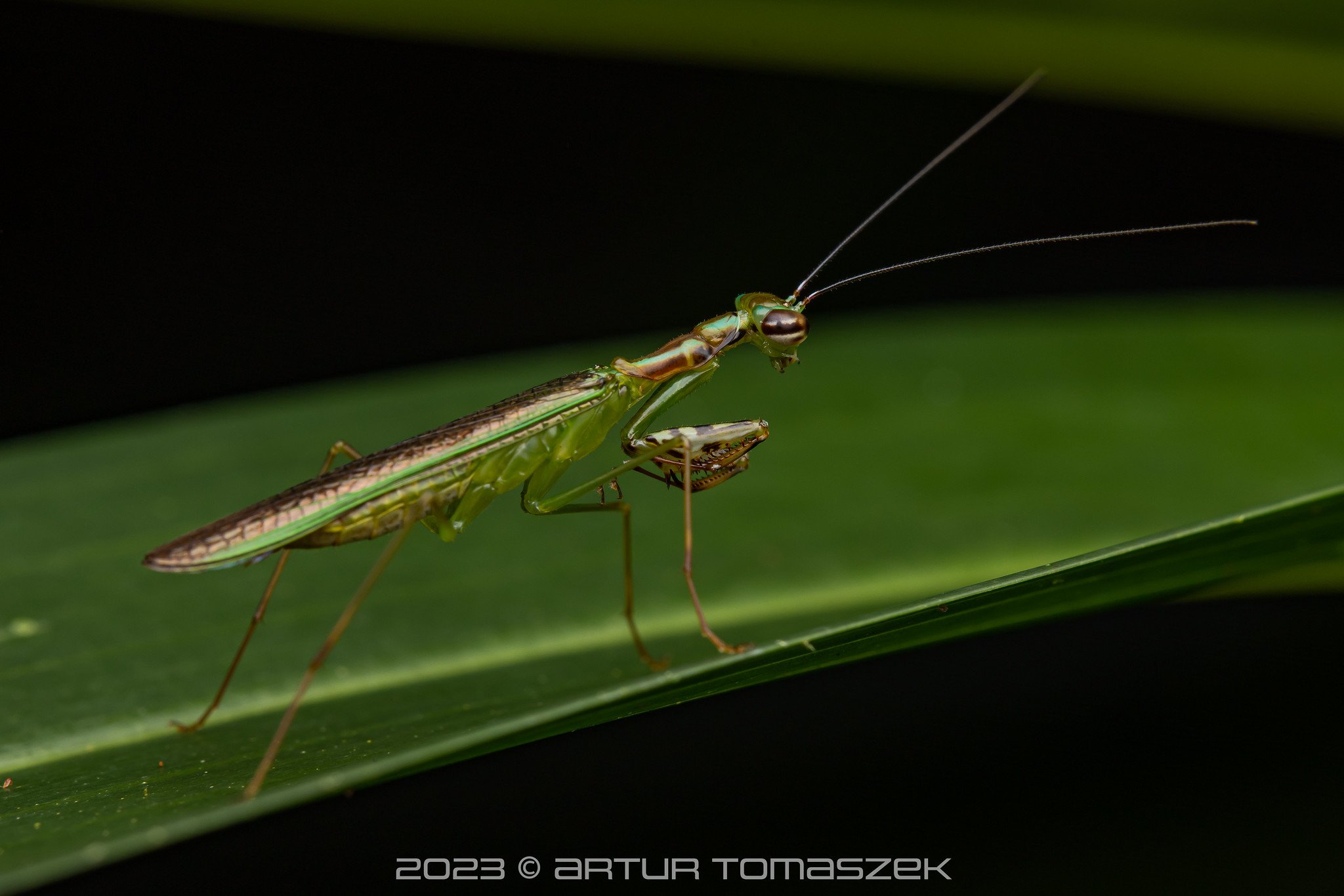
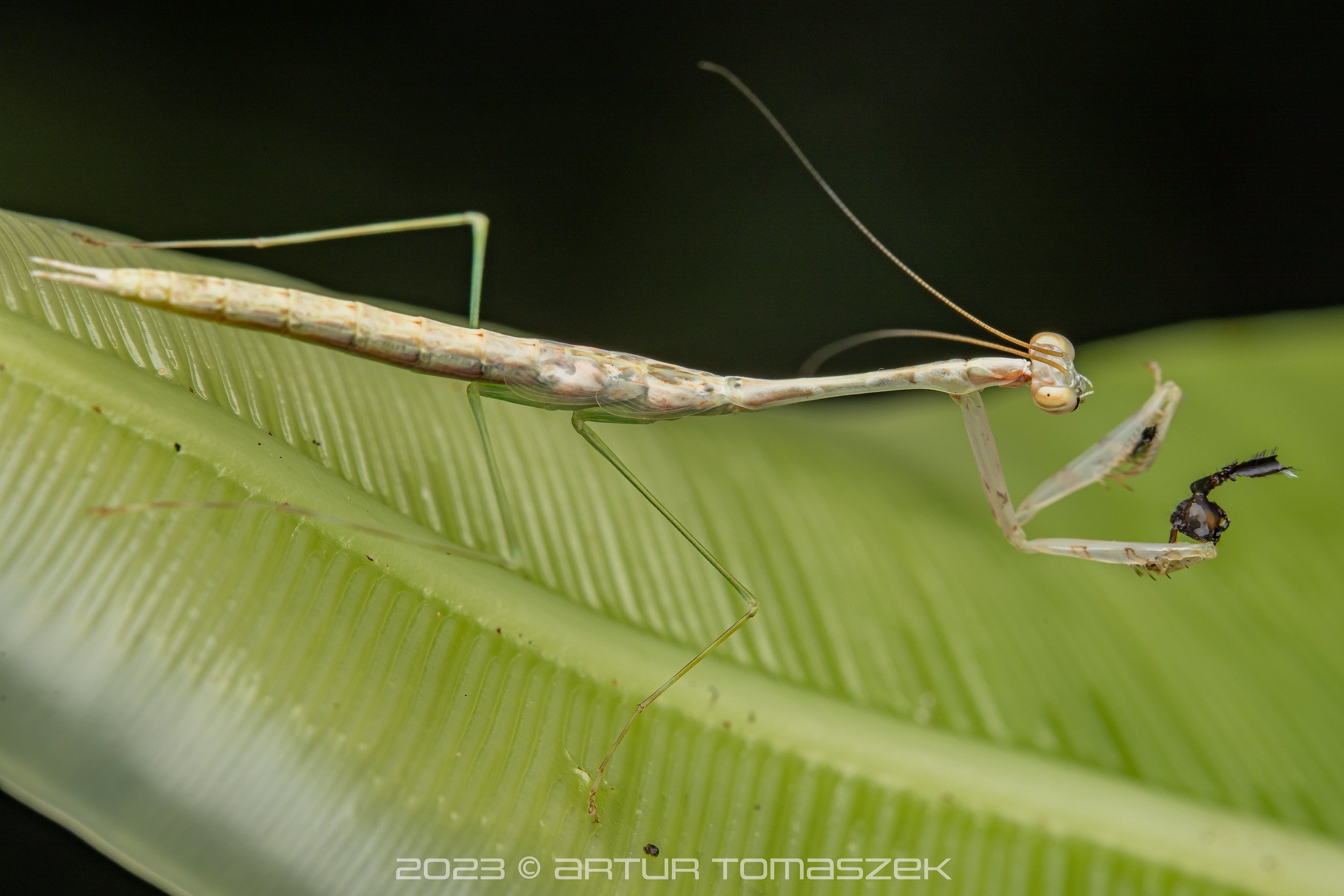
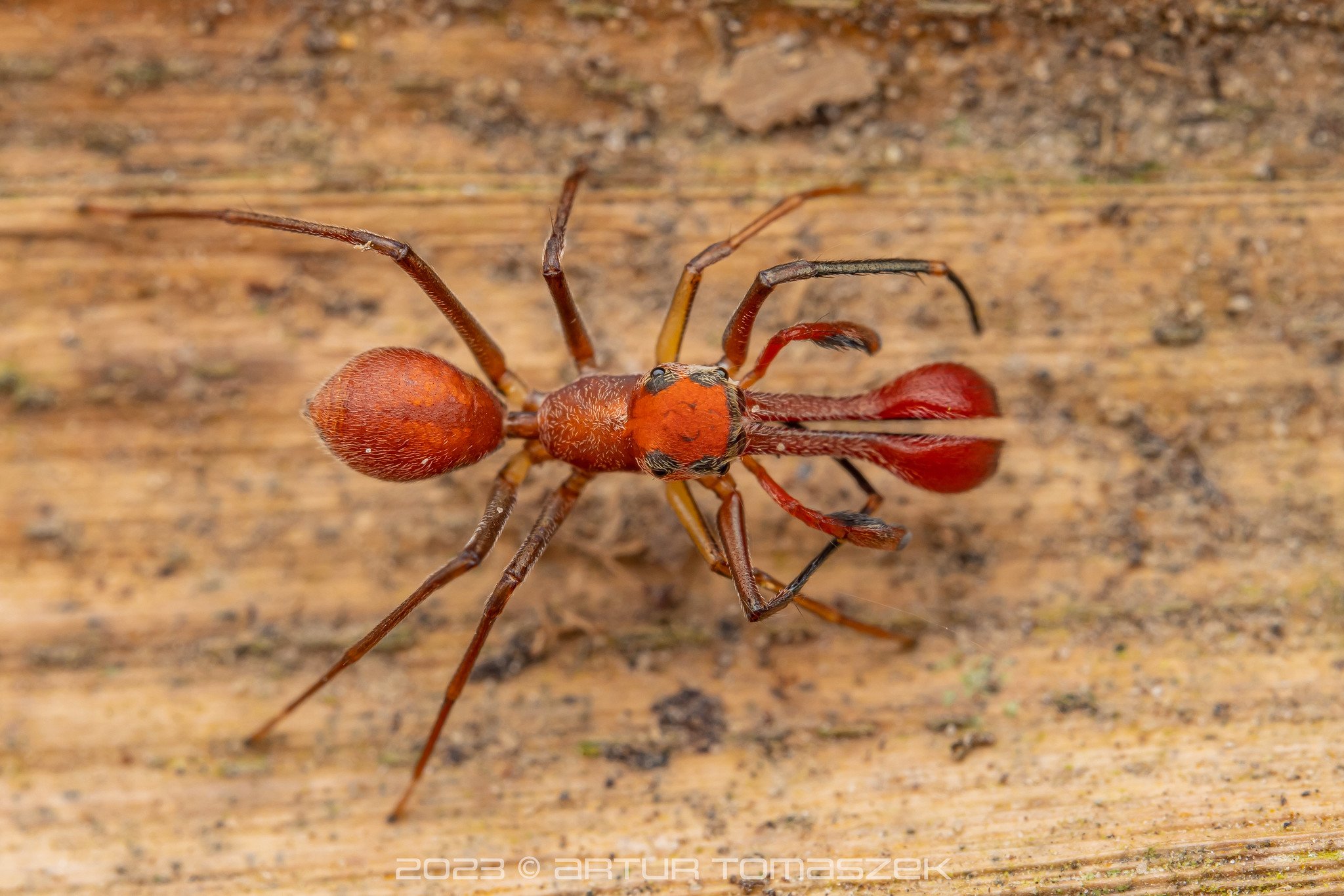
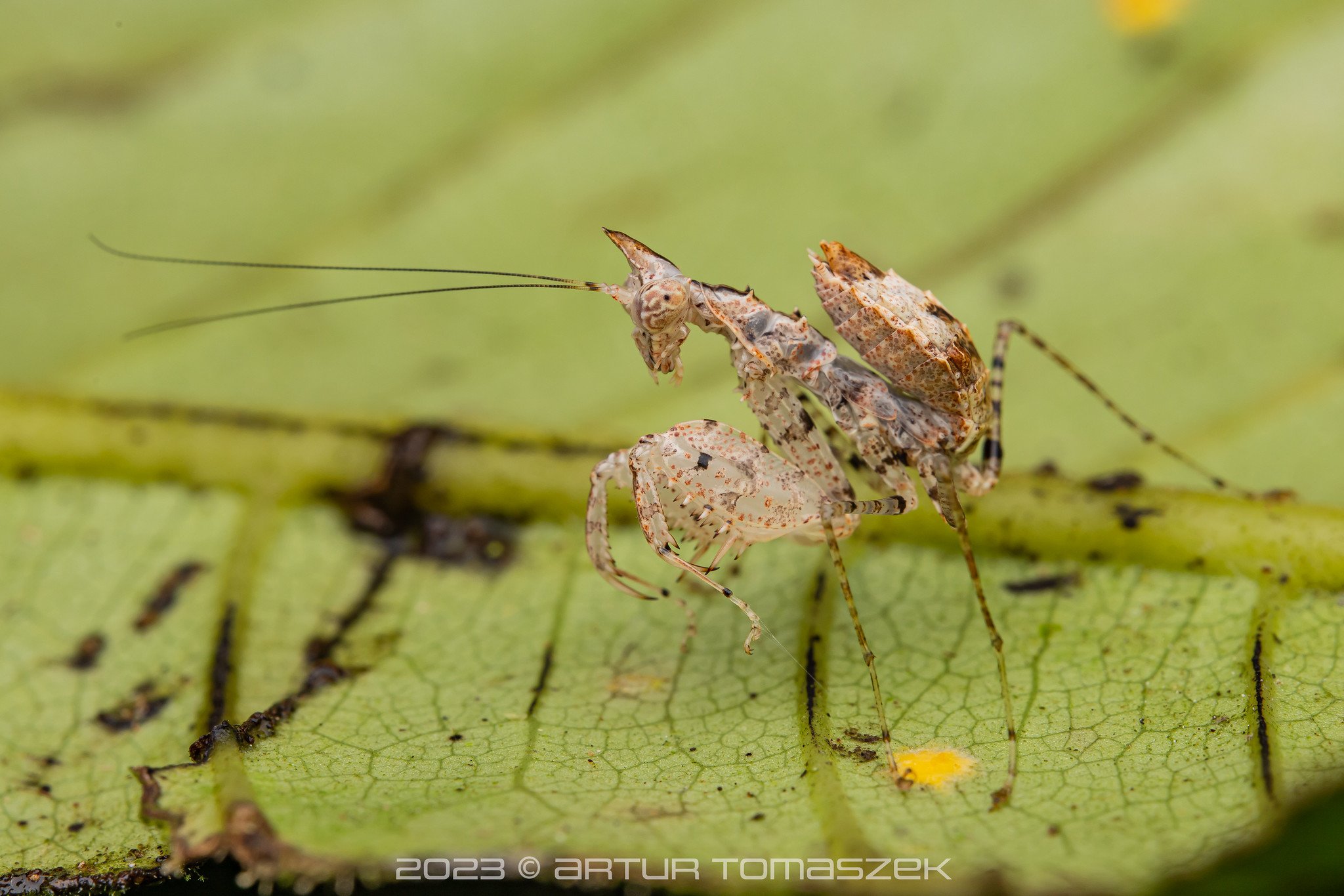
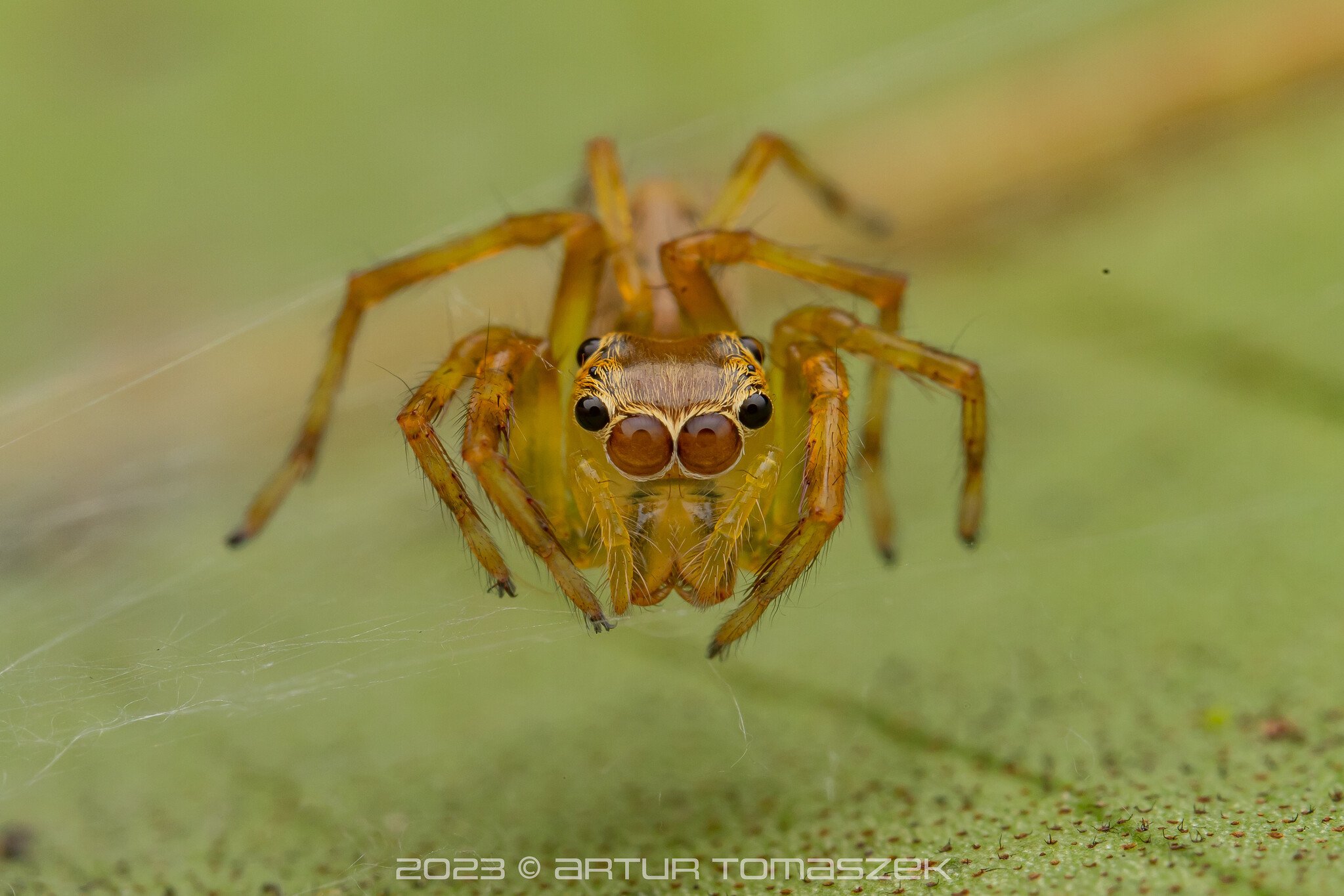
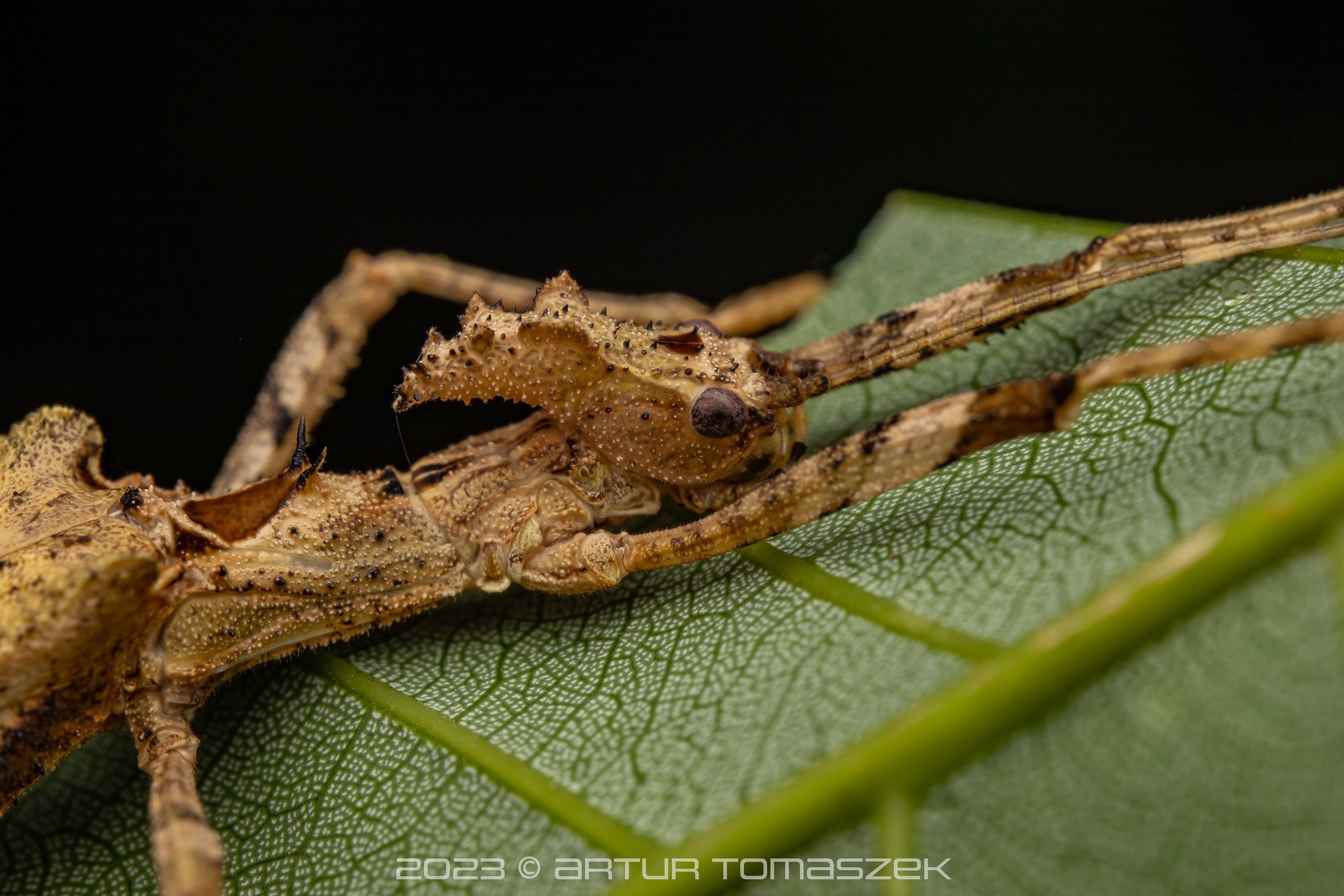
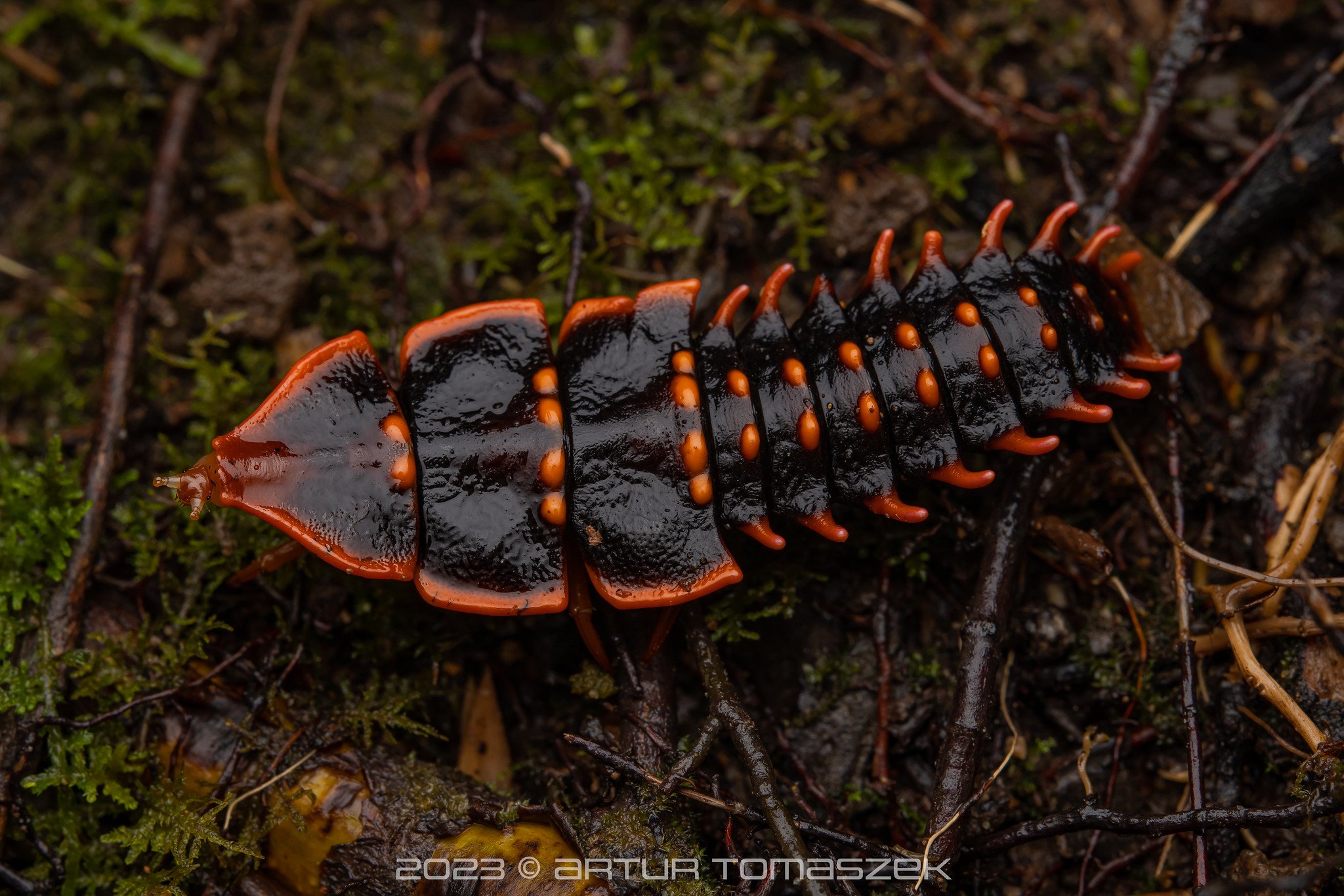

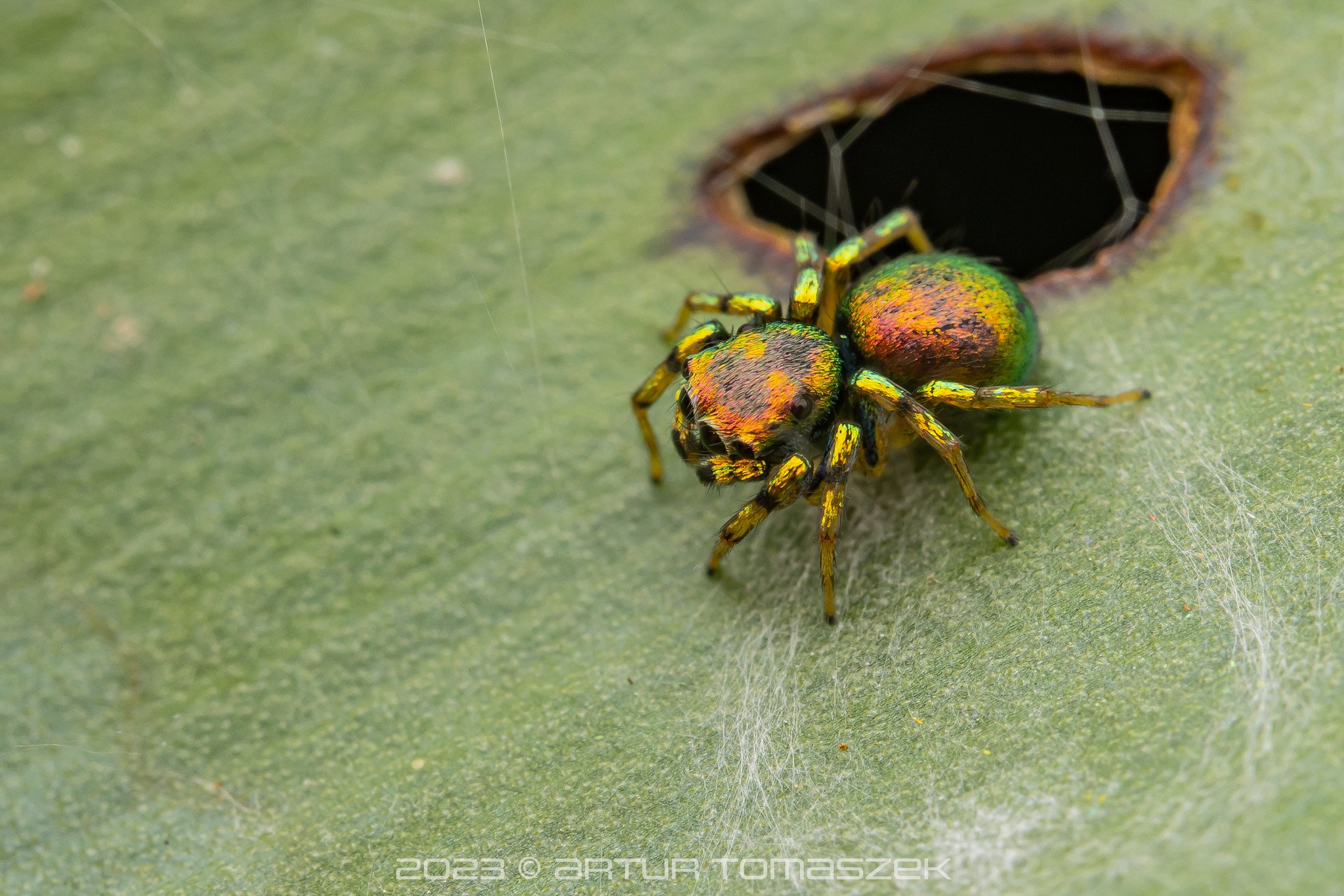
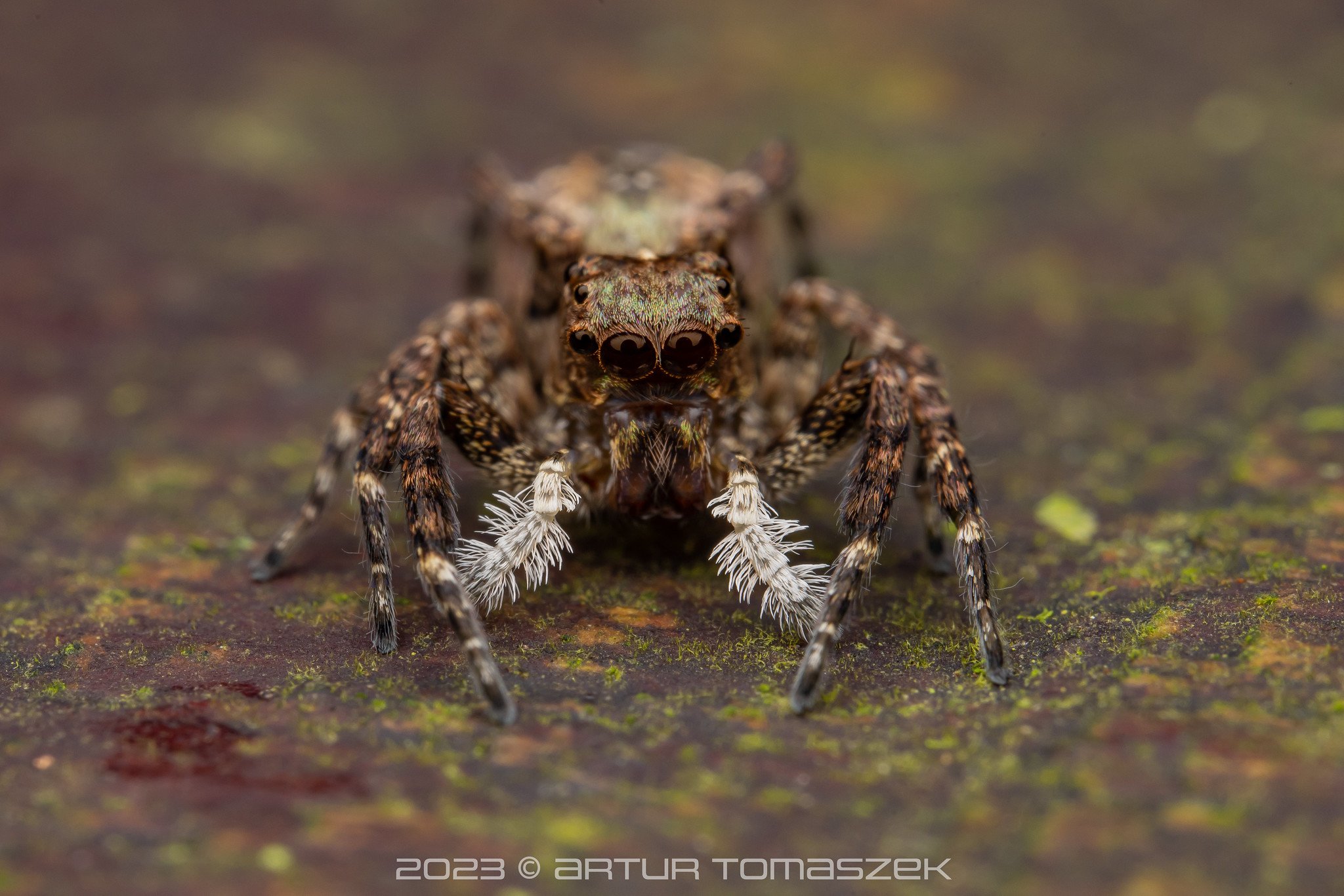
One of the most common invertebrates, both in the highland and lowland, were… leeches. No matter how well some of us protected themselves, they got us all. One might say leeches are less troublesome than ticks or mosquitos as they are less likely to be disease vectors, however… the incessant bleeding and the pain when they were getting attached - which was surprising to us, leeches in Sri Lanka and Kuala Lumpur never caused us any pain - were rather frustrating. And some of them were HUGE!
Haemadipsa sp. feeding off Artur
Back to reptiles! A week into our stay near Mount Kinabalu, we joined forces with other herpers (Explore Herpetology team and Steven Wong), who also happened to bring the first relatively rainless night to us. One of their main targets was to find the iconic pit viper species - Trimeresurus malcolmi (Malcolm’s pitviper) - and the efforts paid off. Two individuals were found, including the stunning female below.
Trimeresurus malcolmi (Malcolm’s pitviper)
Over all our nights in the highlands, we also spotted a few other reptile species, including Trimeresurus sabahi (Sabah bamboo pitviper), Stegonotus caligocephalus (dark-headed Sabah groundsnake), Calamaria griswoldi (lined reed snake), Calamaria schmidti (Schmidt's reed snake), Pseudorabdion collaris (common collared snake) or Pelturagonia borneensis (Sabah eyebrow lizard). You can see on most, if not all, photos how humid it was. A very challenging time for the camera gear (and our clothing too). Imagine rain so heavy that even a quality poncho and a big umbrella did not protect you from being completely soaked. Everything had to be dried up daily which proved tricky with no or very little sun on most days and very humid rooms in which we stayed. Drawers packed with reusable silica gel packets worked wonders for the camera, a hair dryer/covered outdoor breezy areas did the trick for our clothes and once hiking shoes were replaced by wellies, we were good to go. Mind you, on some days we had to be very choosy about the models we were photographing to protect the camera gear from humidity, hence some of our encounters had to be left undocumented.
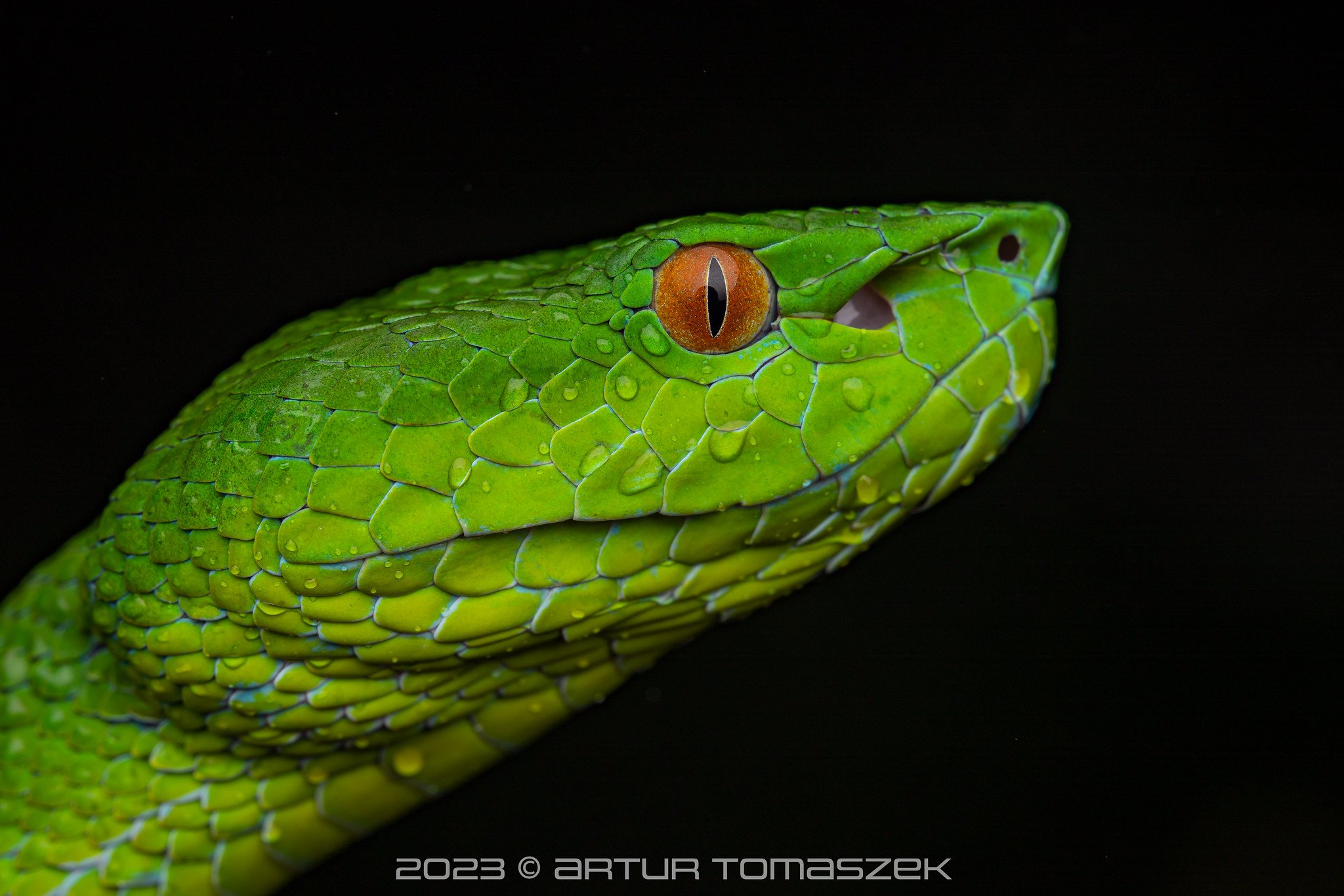
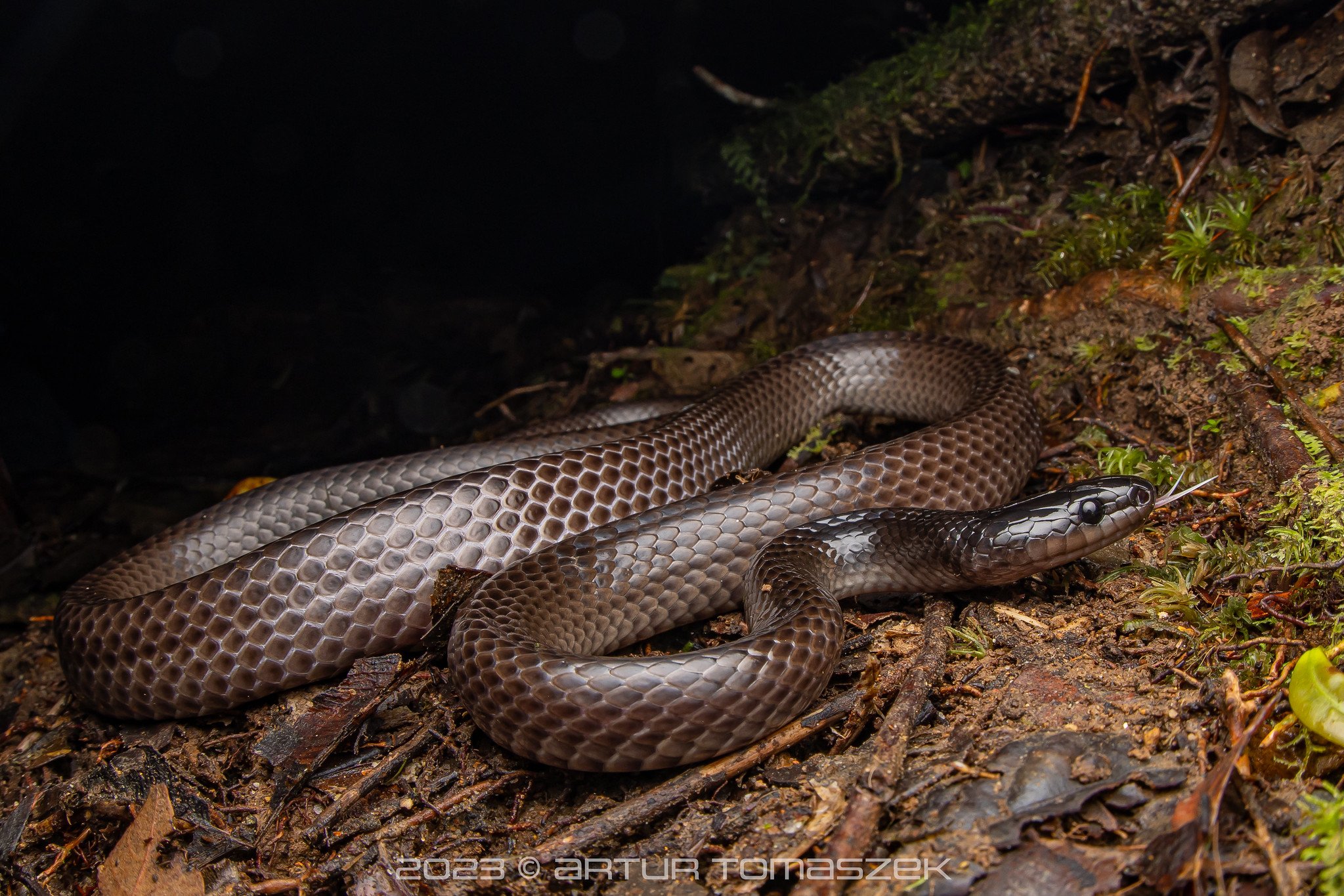
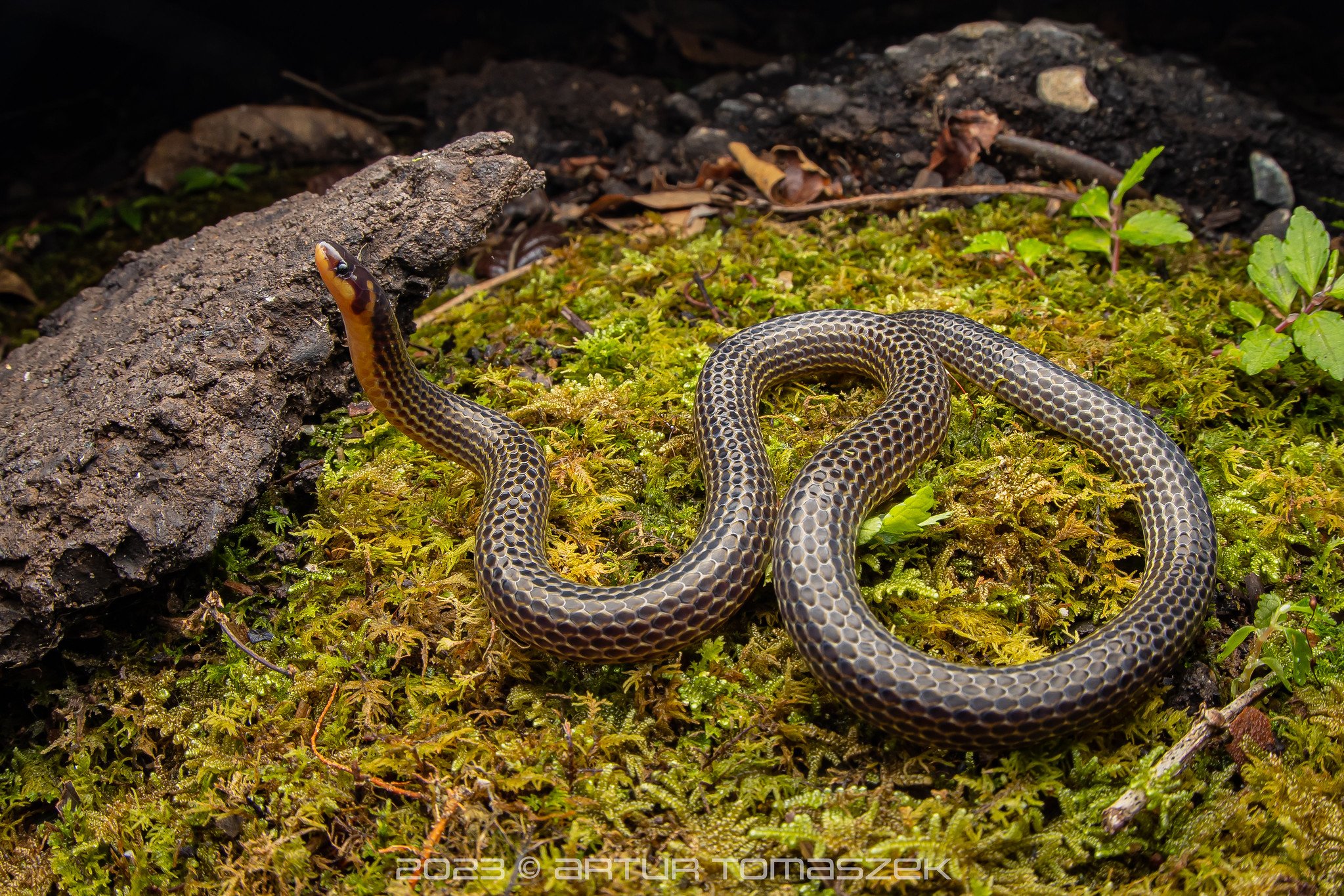
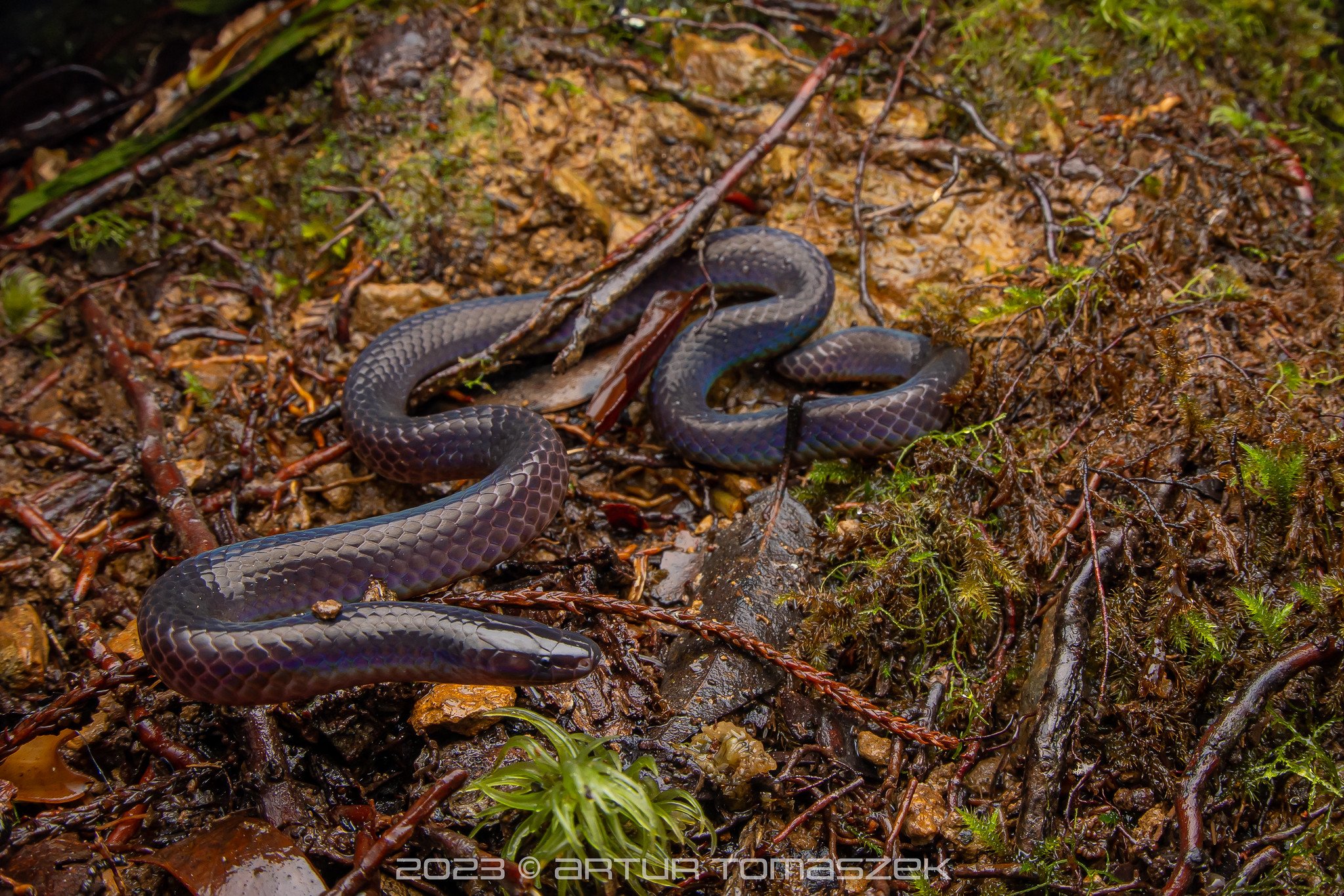
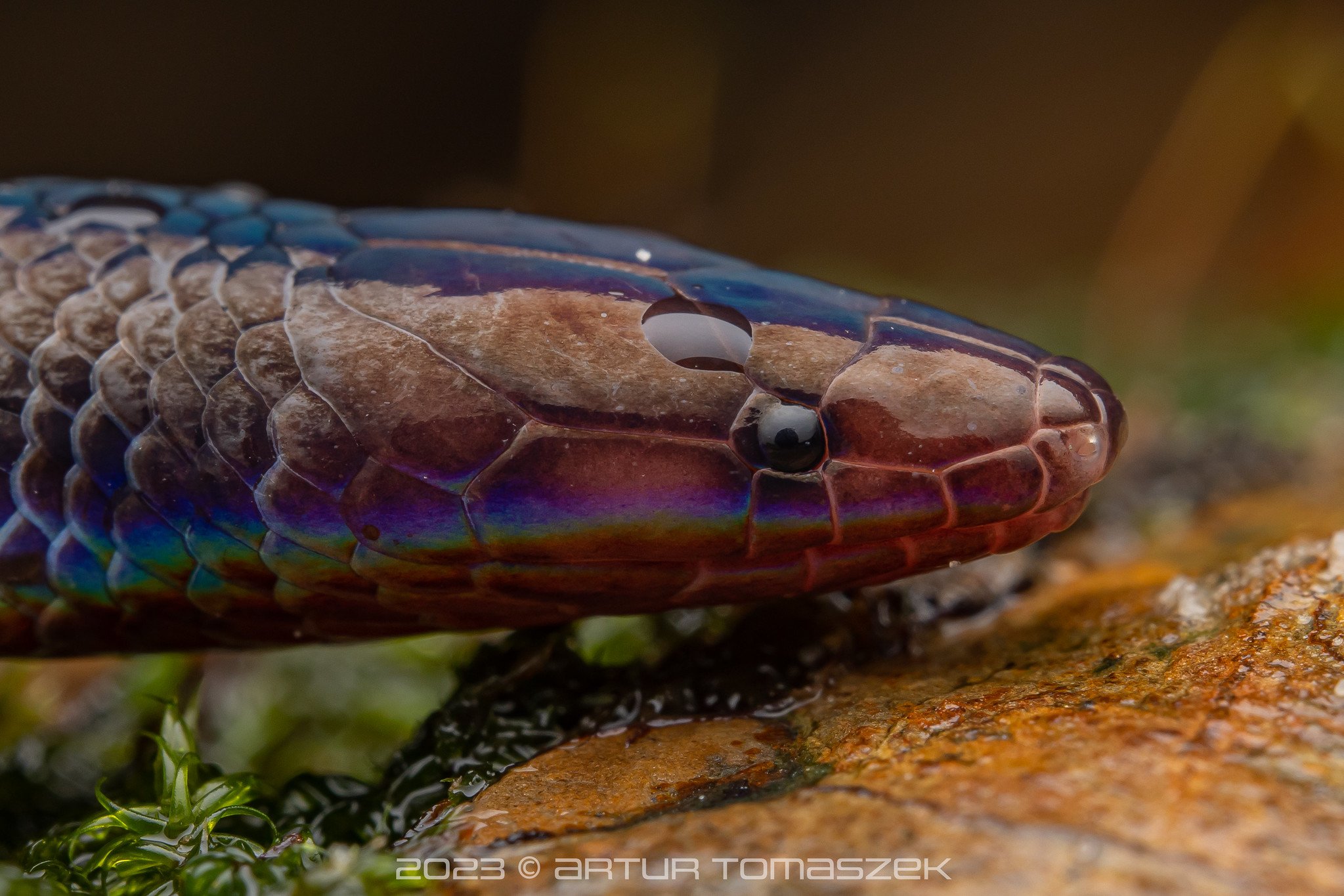
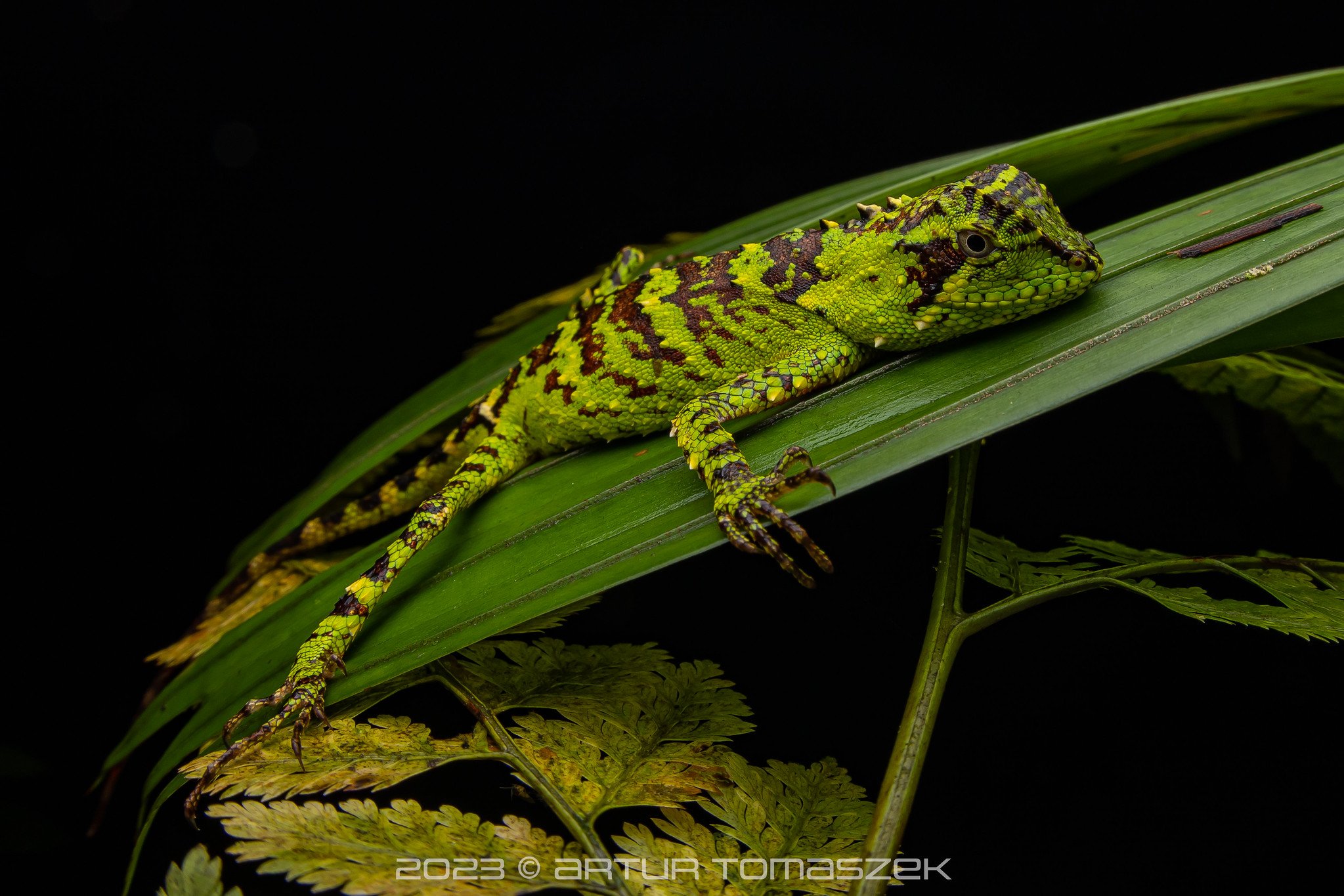
We also spotted a huge Garthius chaseni (Chasen’s mountain pit viper) on a particularly rainy night in the highland forest and a Gekko rhacophorus (Sabah flying gecko) on our very last night.
Garthius chaseni (Chasen’s mountain pit viper)
Gekko rhacophorus (Sabah flying gecko)
Another exciting species encountered in the highland forest during a rainy night was a lovely Bungarus flaviceps baluensis.
To find some of the lowland species, we had to drive for about an hour (depending on the flooding levels…) and, again, withstand the rain and extreme humidity. We were rather lucky to encounter most species we really wanted to see in the wild, including Aeluroscalabotes felinus (cat gecko), which we used to keep and breed as pets in the past. Some of the other species were Aplopeltura boa (blunt-headed slug snake) - a huge hit for Karolina, Bronchocela cristatella (green crested lizard), Craspedocephalus borneensis (Borneo pit viper), Cyrtodactylus sp. (bent-toed geckos), Dendrelaphis caudolineatus (striped bronzeback), Dendrelaphis formosus (elegant bronzeback), Gonocephalus bornensis (Borneo forest dragon), Opisthotropis typica (olive mountain keelback) and quite a few Tropidolaemus subannulatus (Bornean keeled green pit viper), including a gorgeous large female.
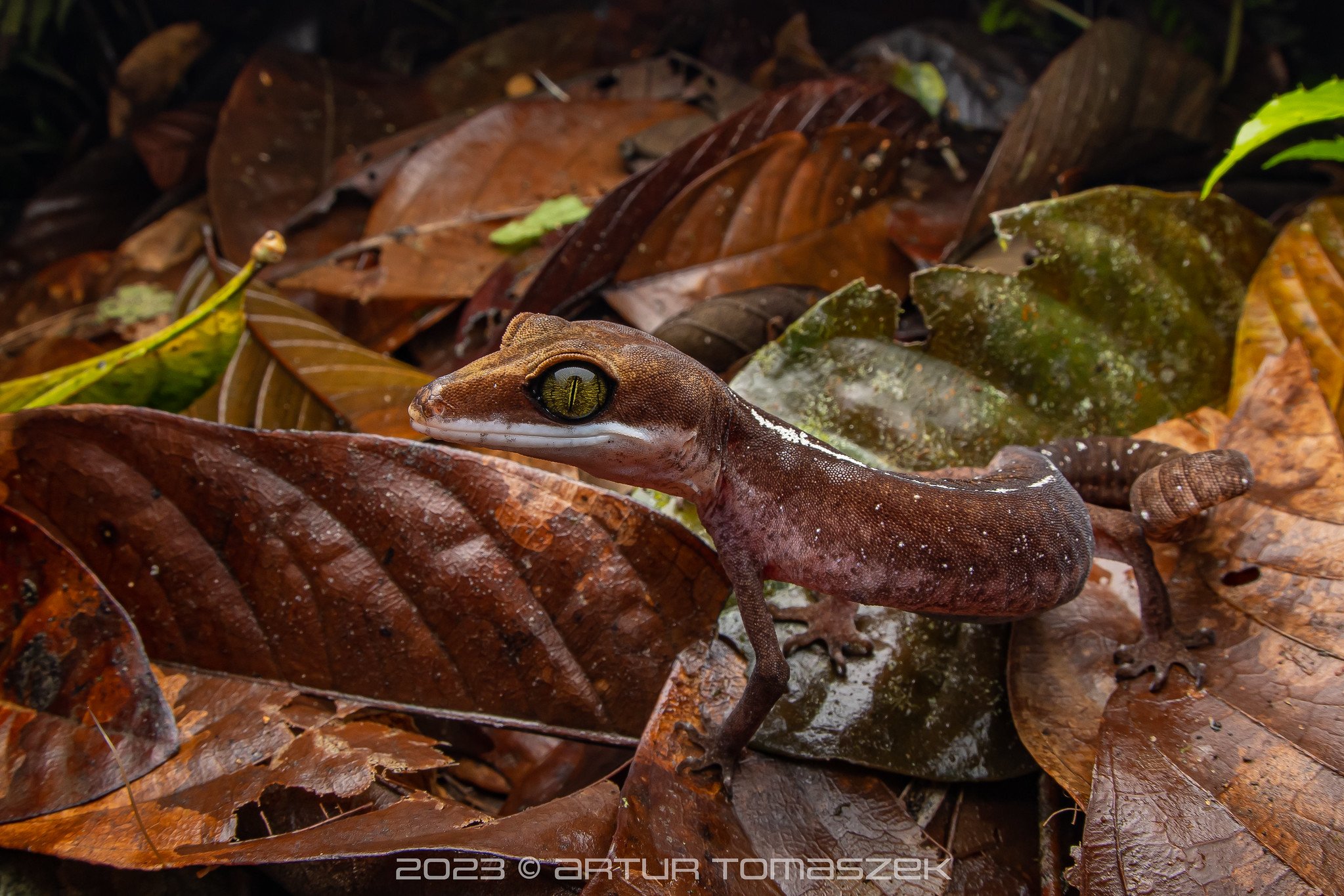
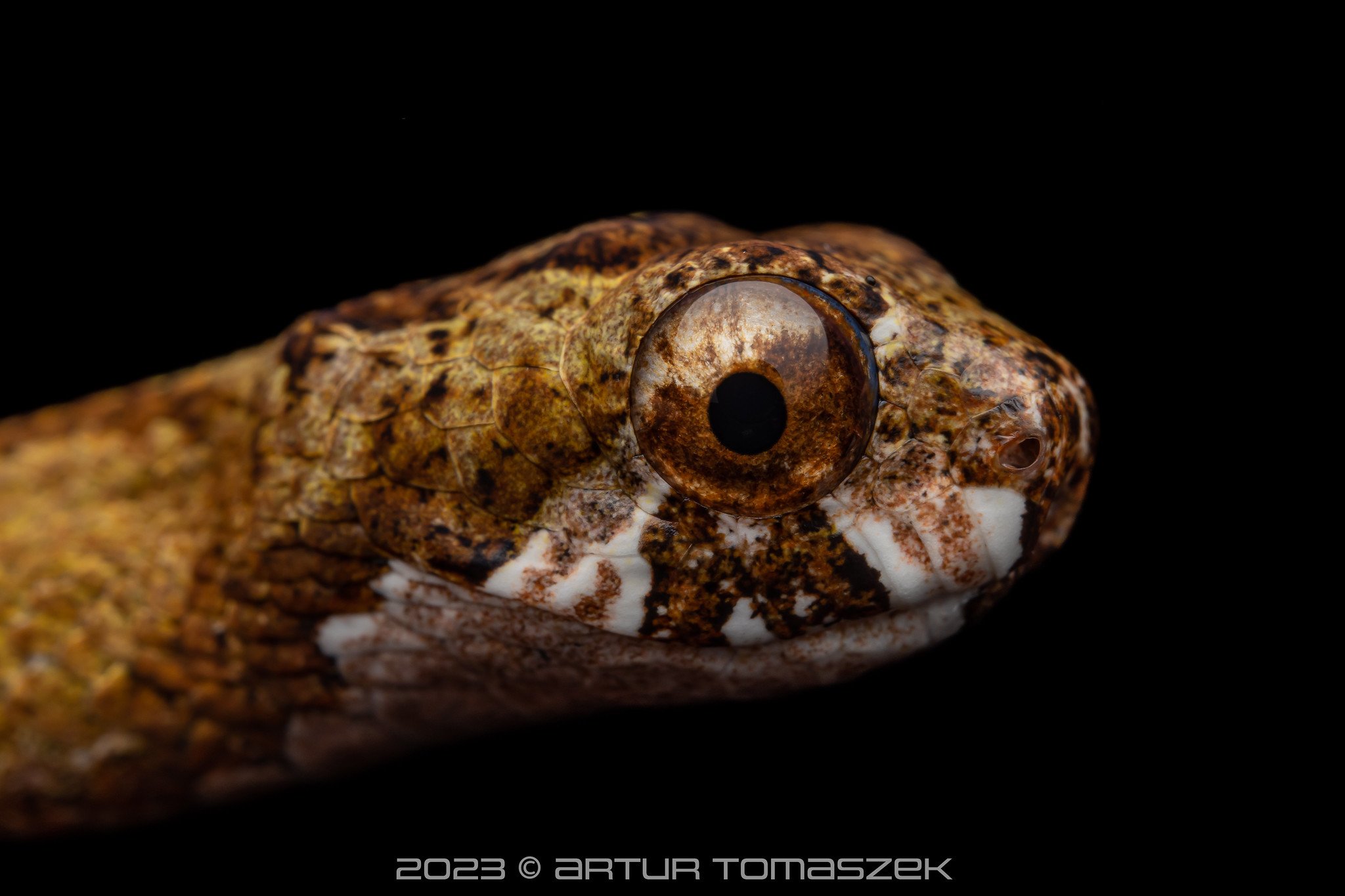
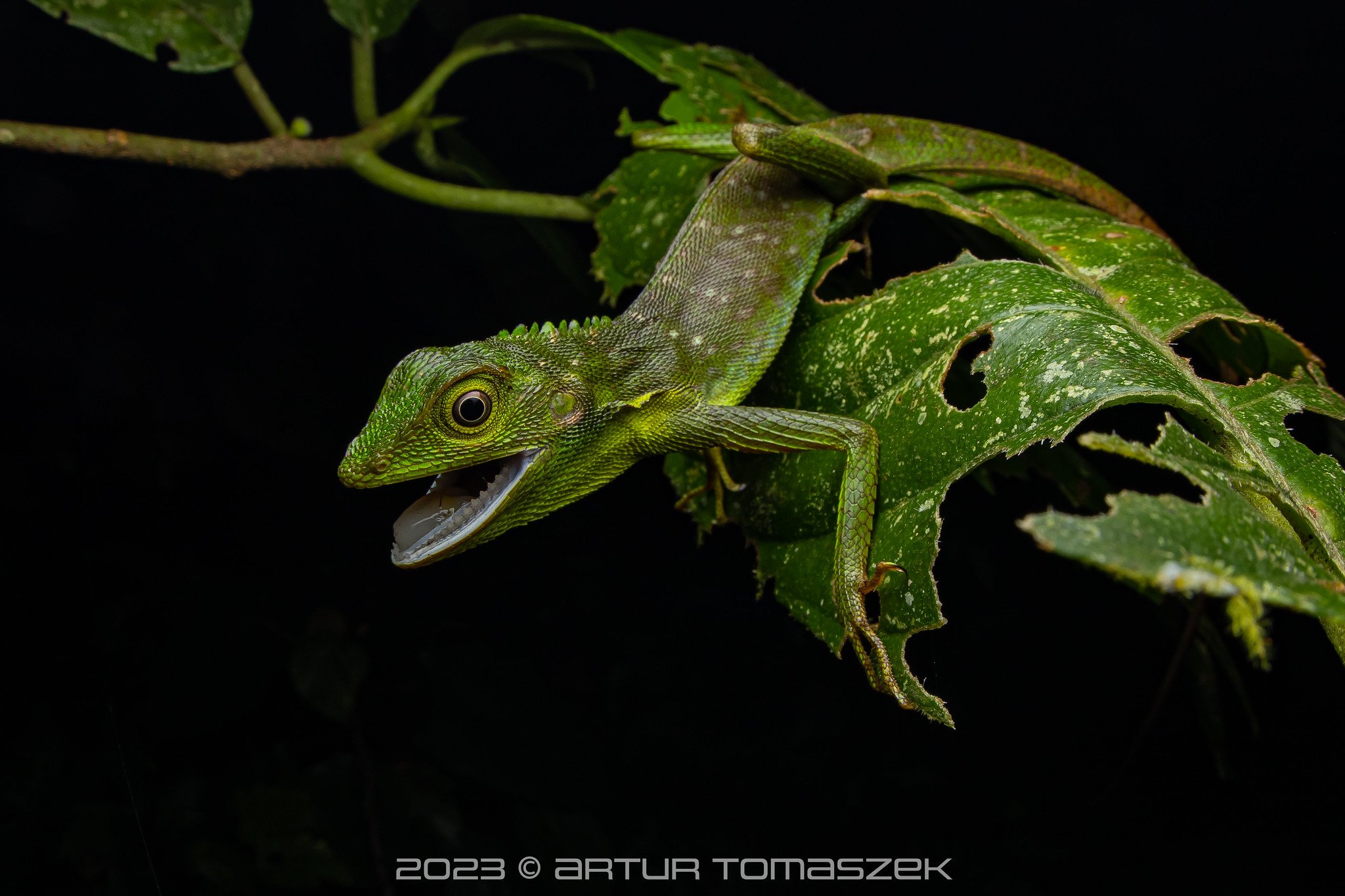
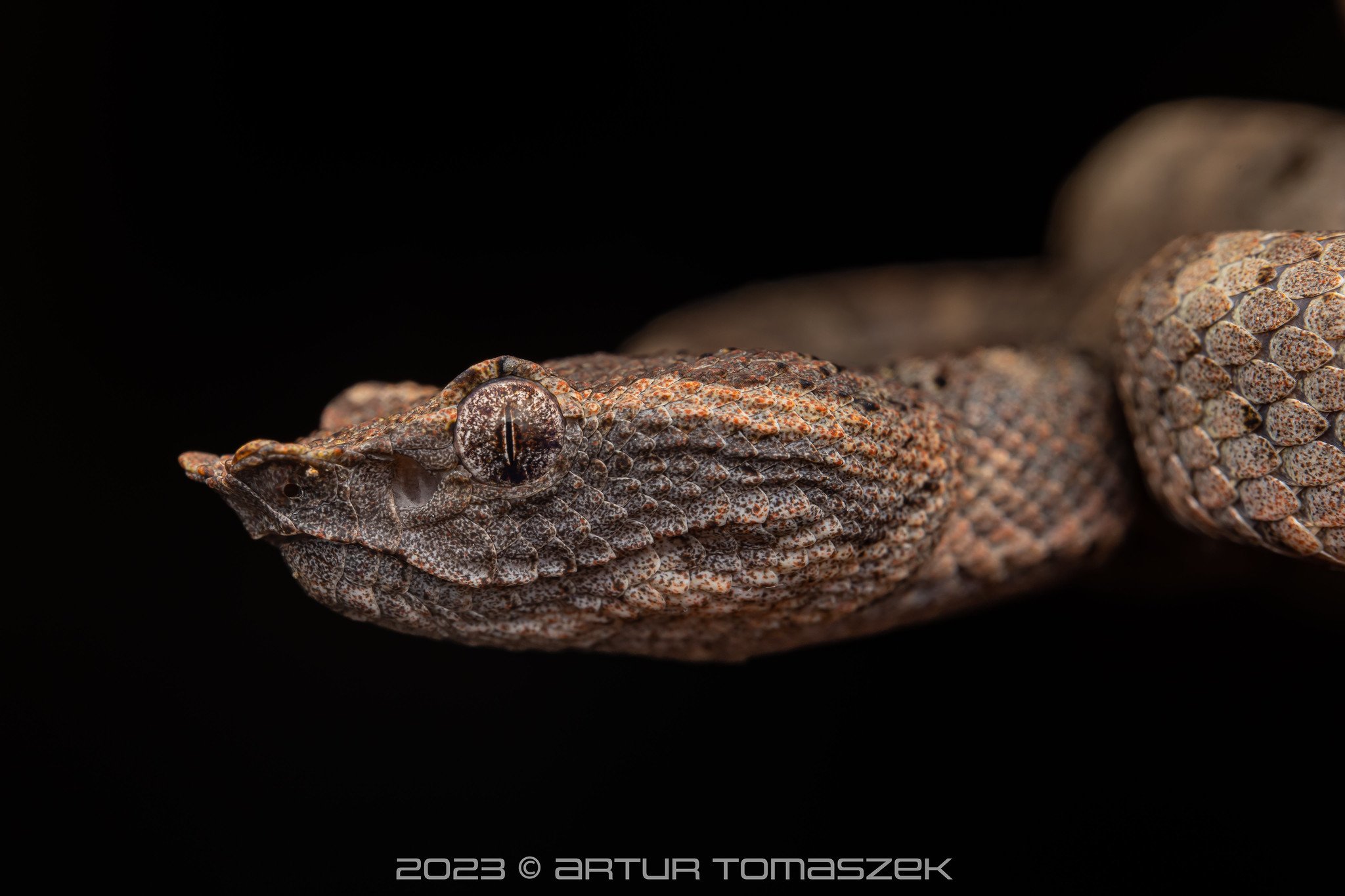
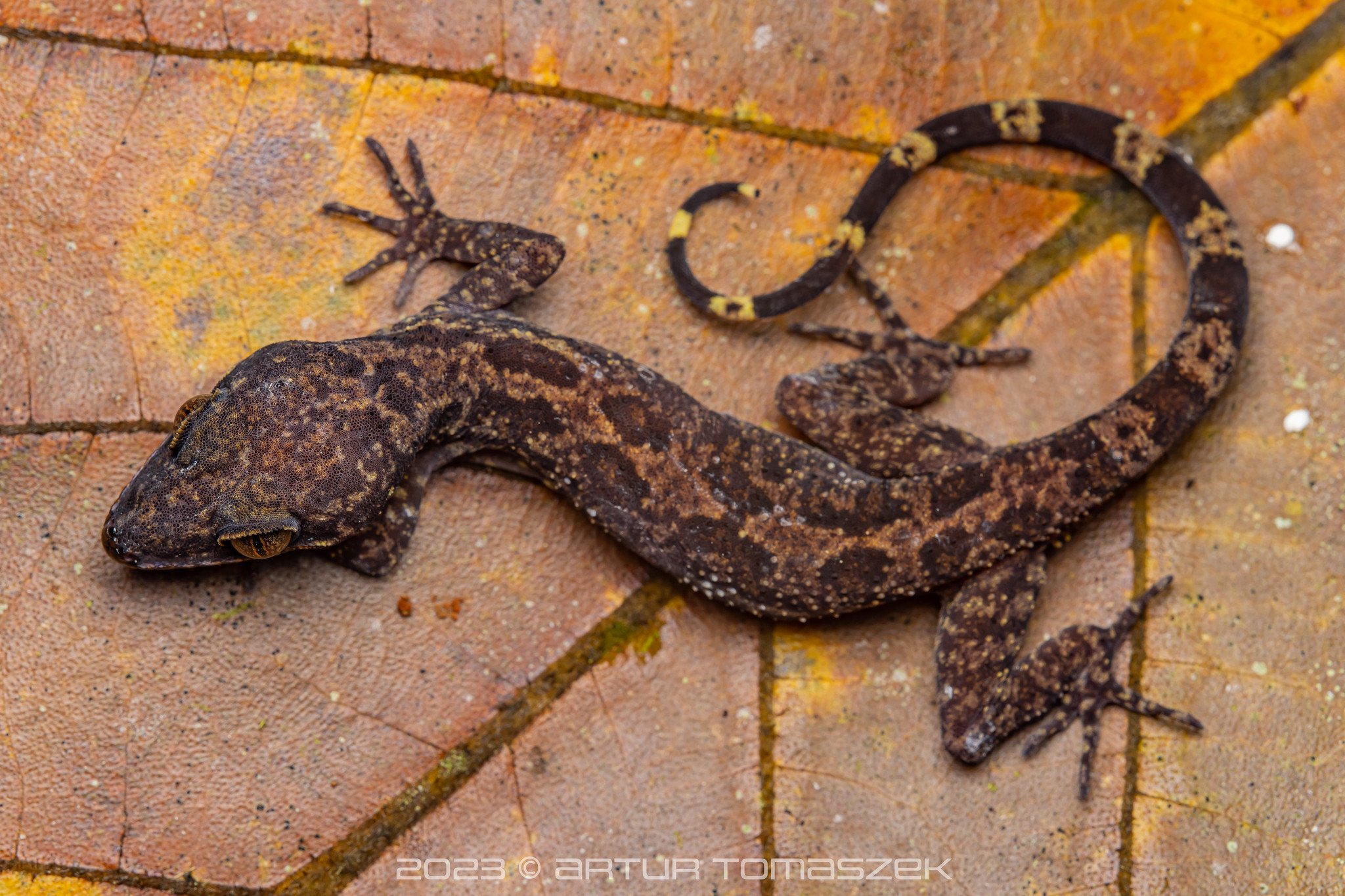
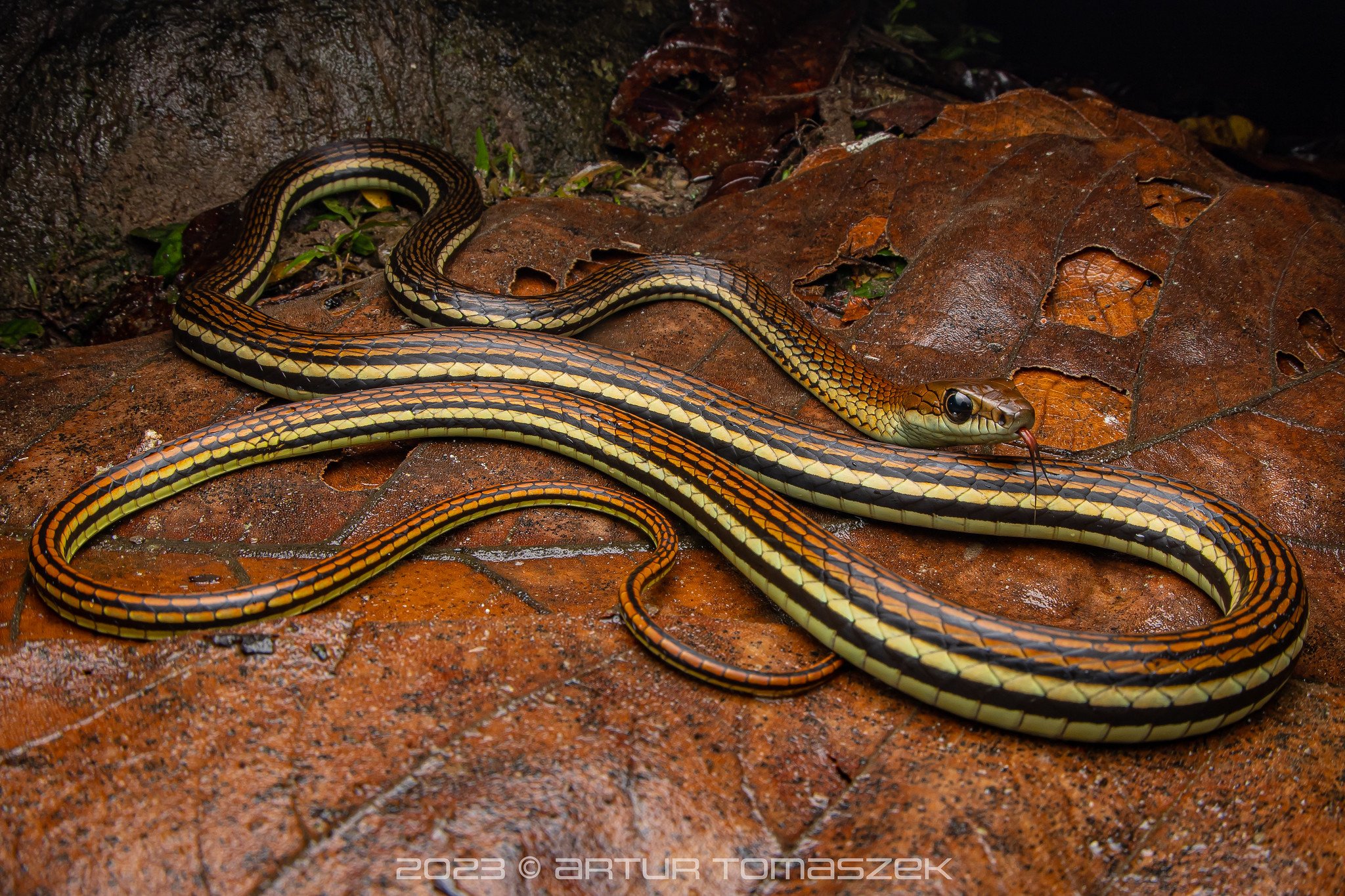
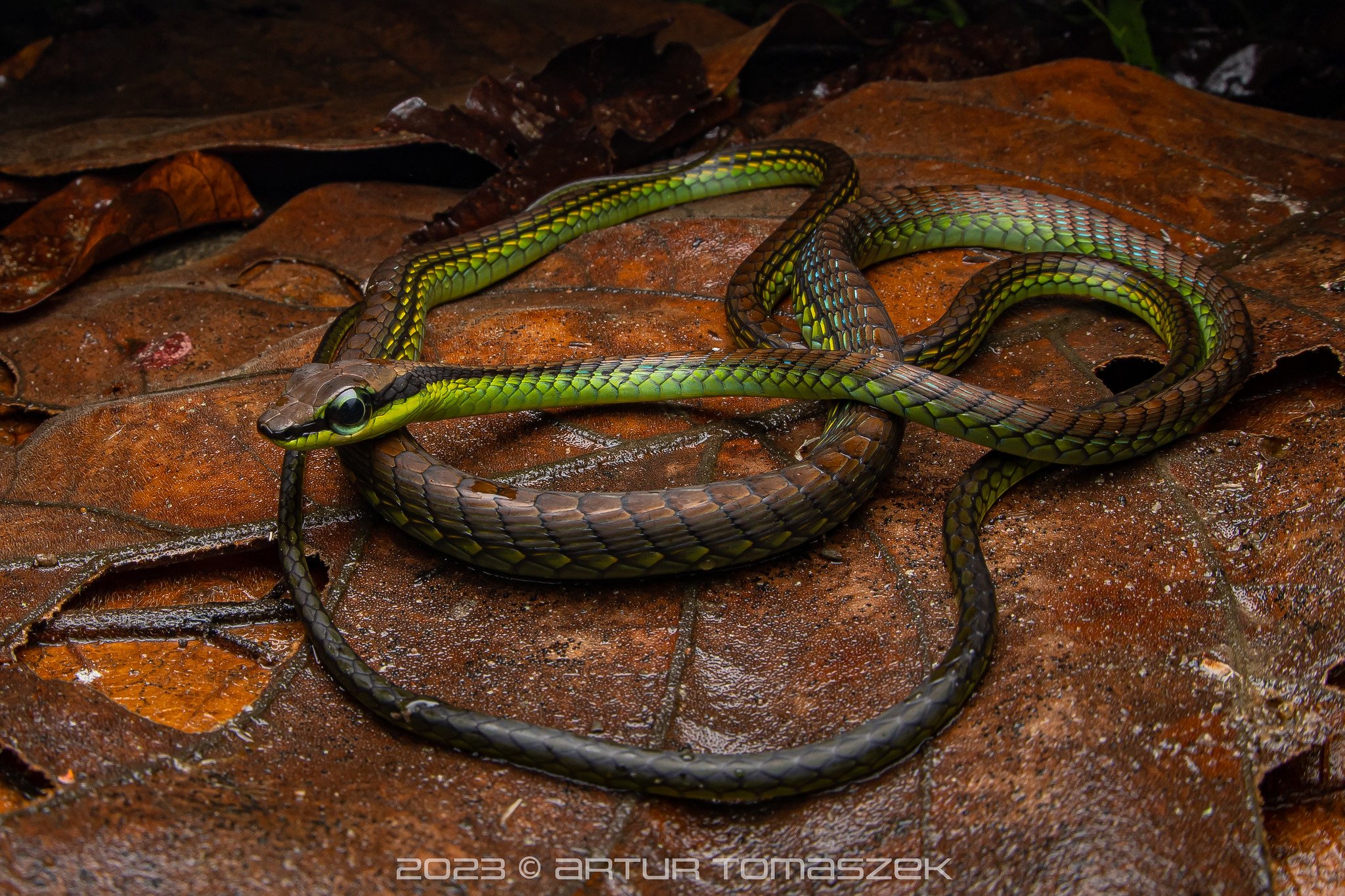
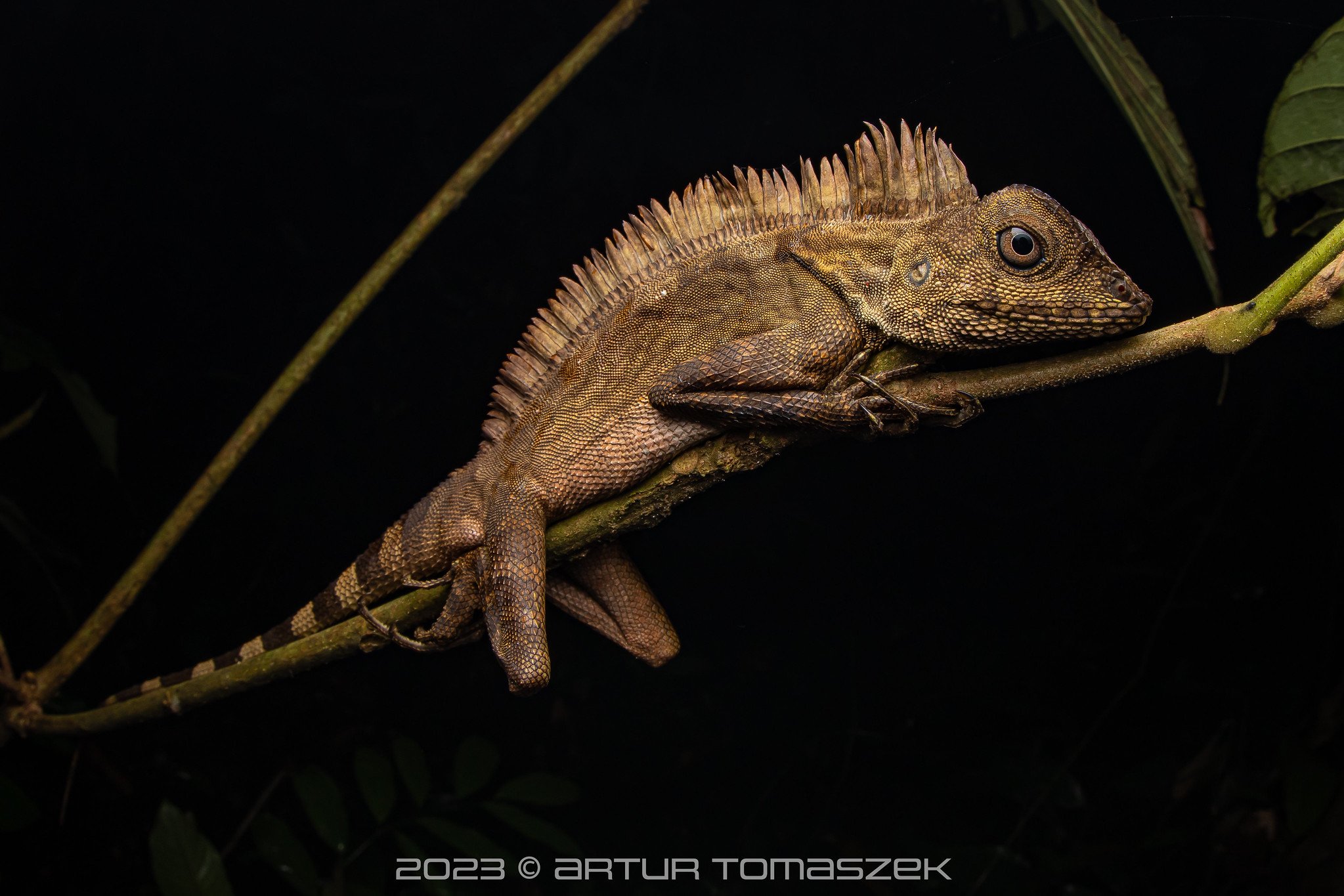
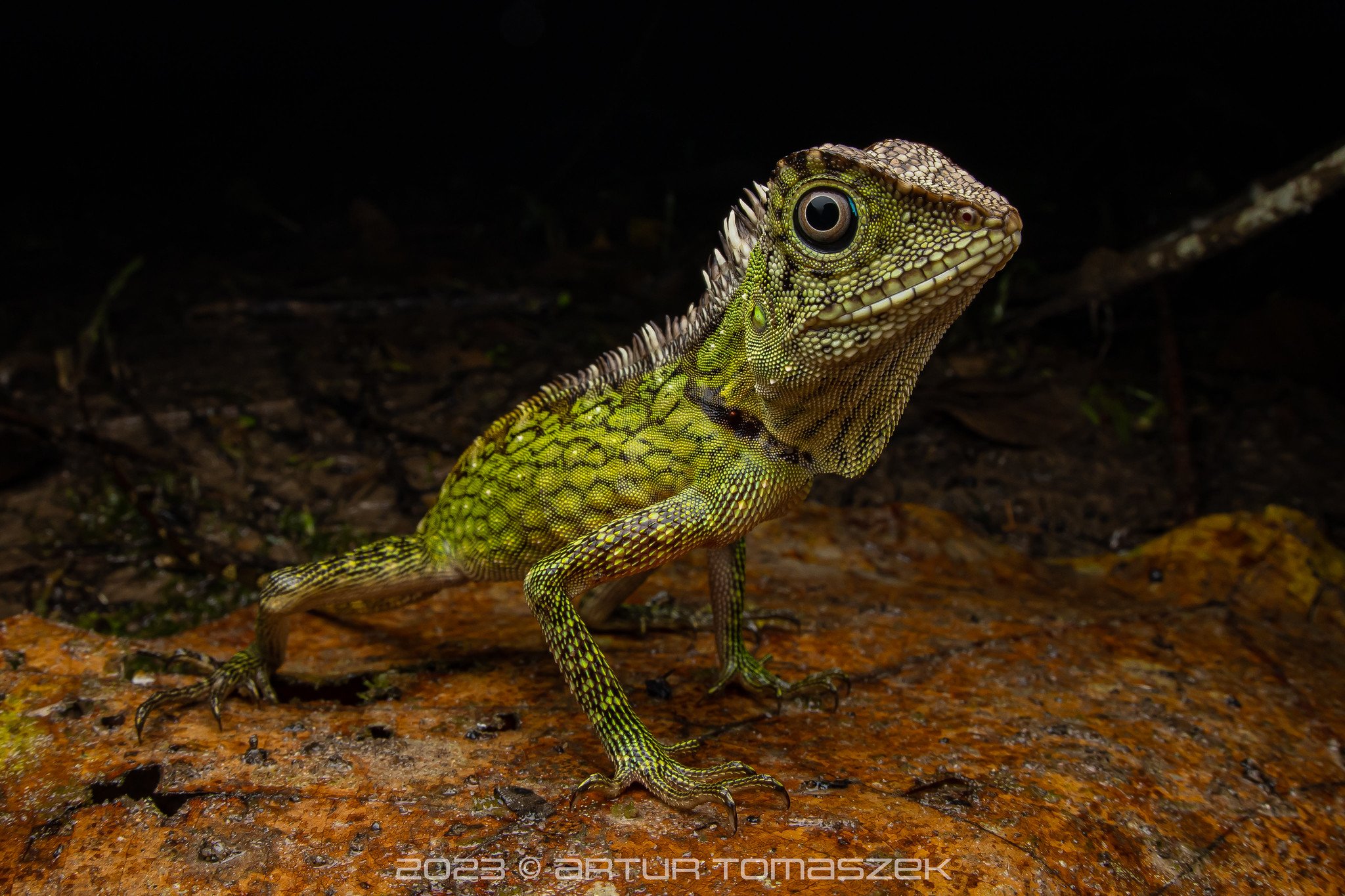
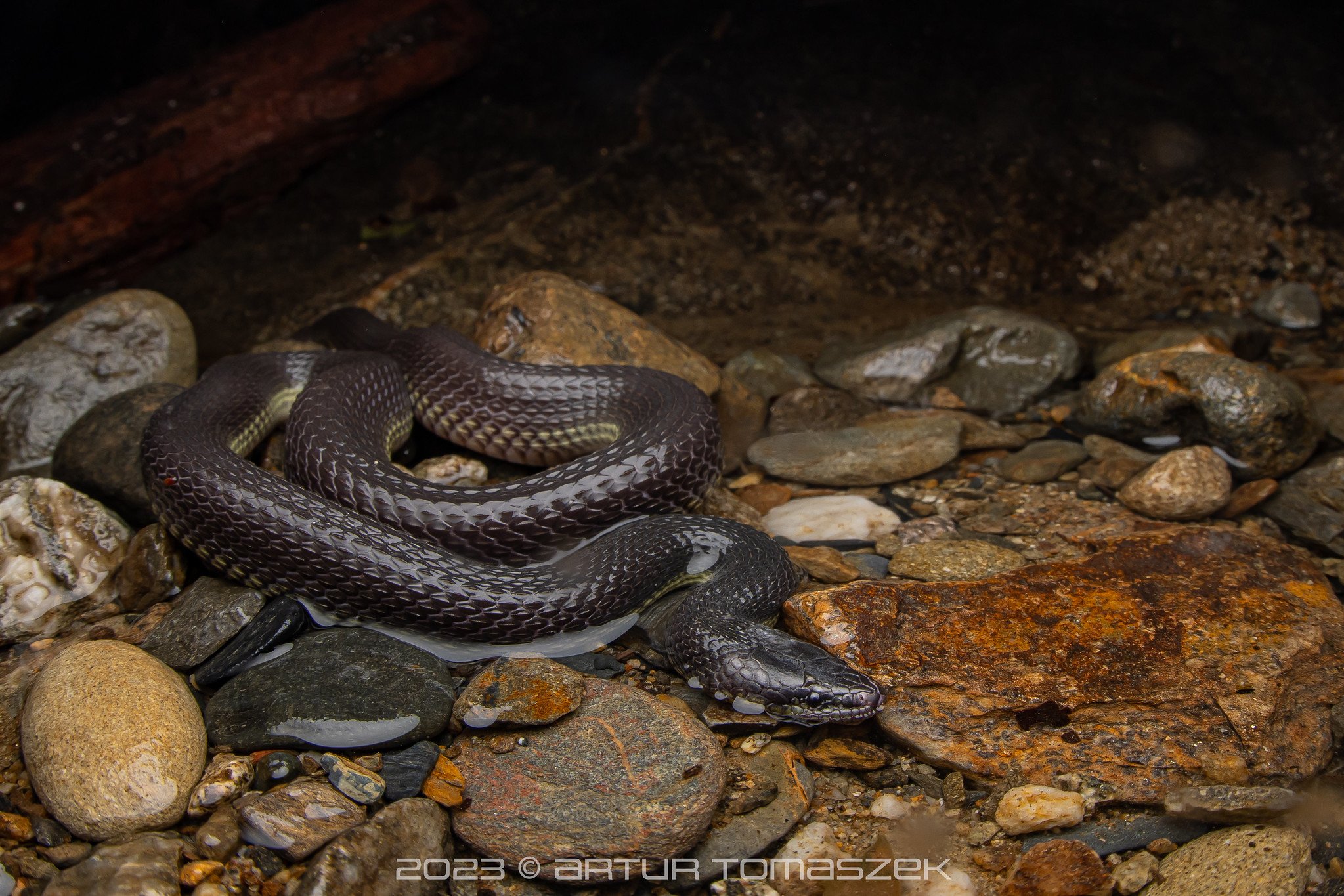
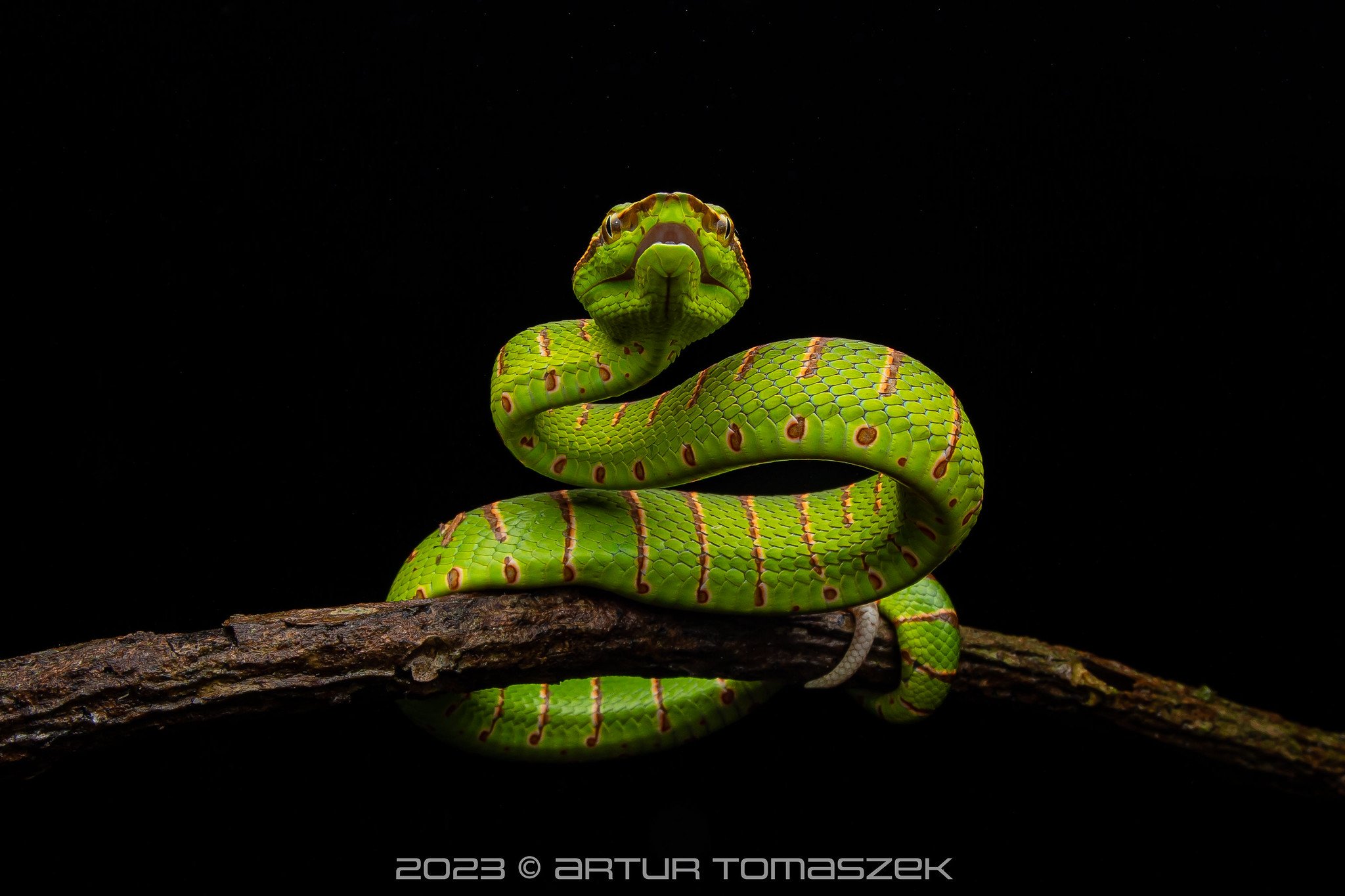
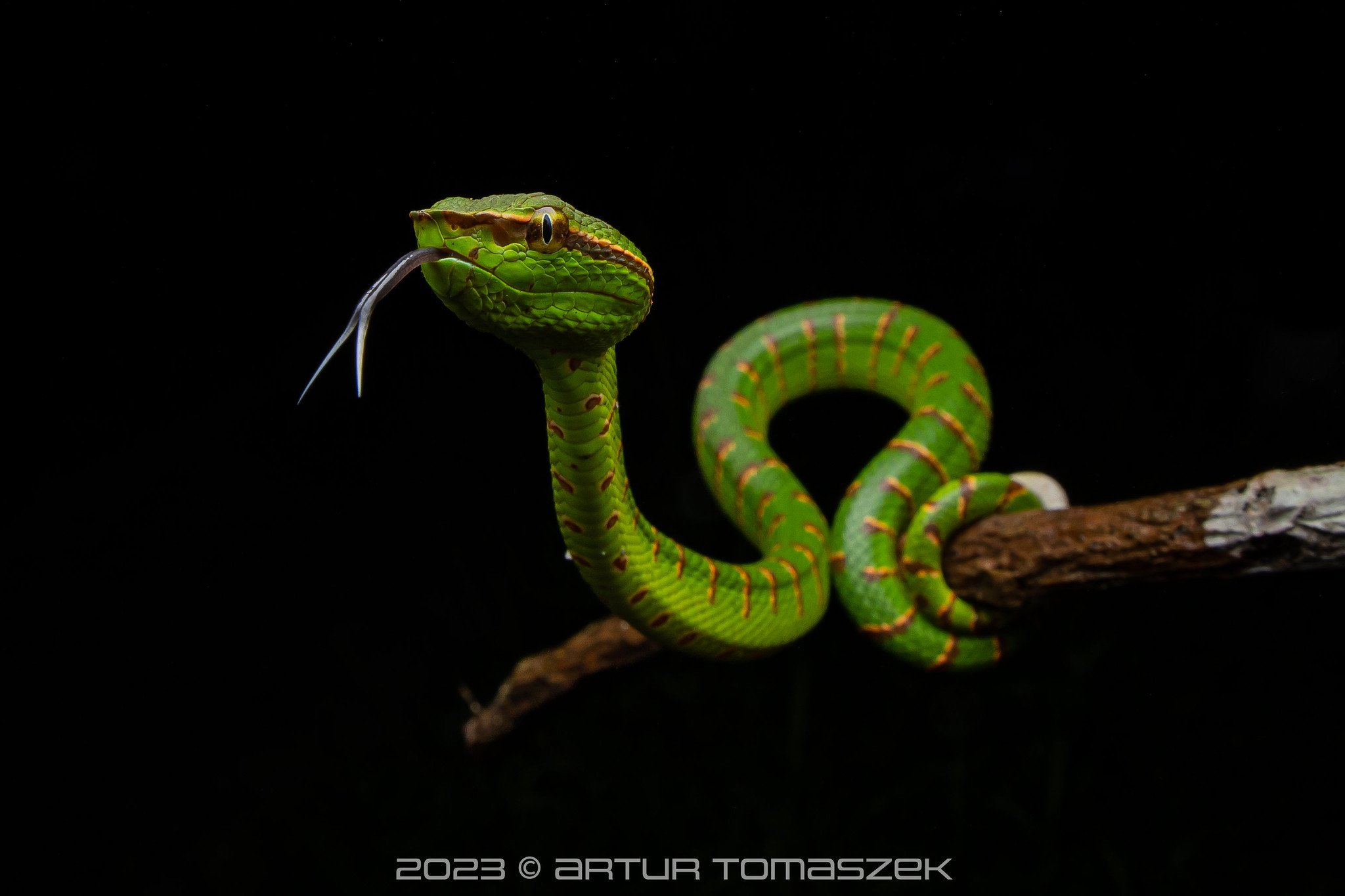
Tropidolaemus subannulatus (Bornean keeled green pit viper), large female
Flooding on the way to the lowland forest
Although rain can be frustrating and make things tough, it does bring amphibians out. Bornean frogs were clearly ecstatic about the weather and came out in great numbers. We saw more than 30 amphibian species, some absolutely mind-blowing. The ones pictured below are: Ansonia spinulifer (spiny slender toad), Kalophrynus baluensis (Kinabalu sticky frog), Kalophrynus meizon (Bornean sticky frog), Leptobrachium montanum (montane large-eyed litter frog) and another Leptobrachium sp., Leptomantis angulirostris (masked tree frog) and another Leptomantis sp., Microhylidae spp. (narrowmouth toads), Pelobatrachus baluensis (Kinabalu horned frog), the iconic Pelobatrachus nasutus (long-nosed horned frog), Philautus macroscelis (mossy bush frog), Rhacophorus baluensis (Balu flying frog) and an absolute monster Phrynoidis juxtasper (giant river toad).
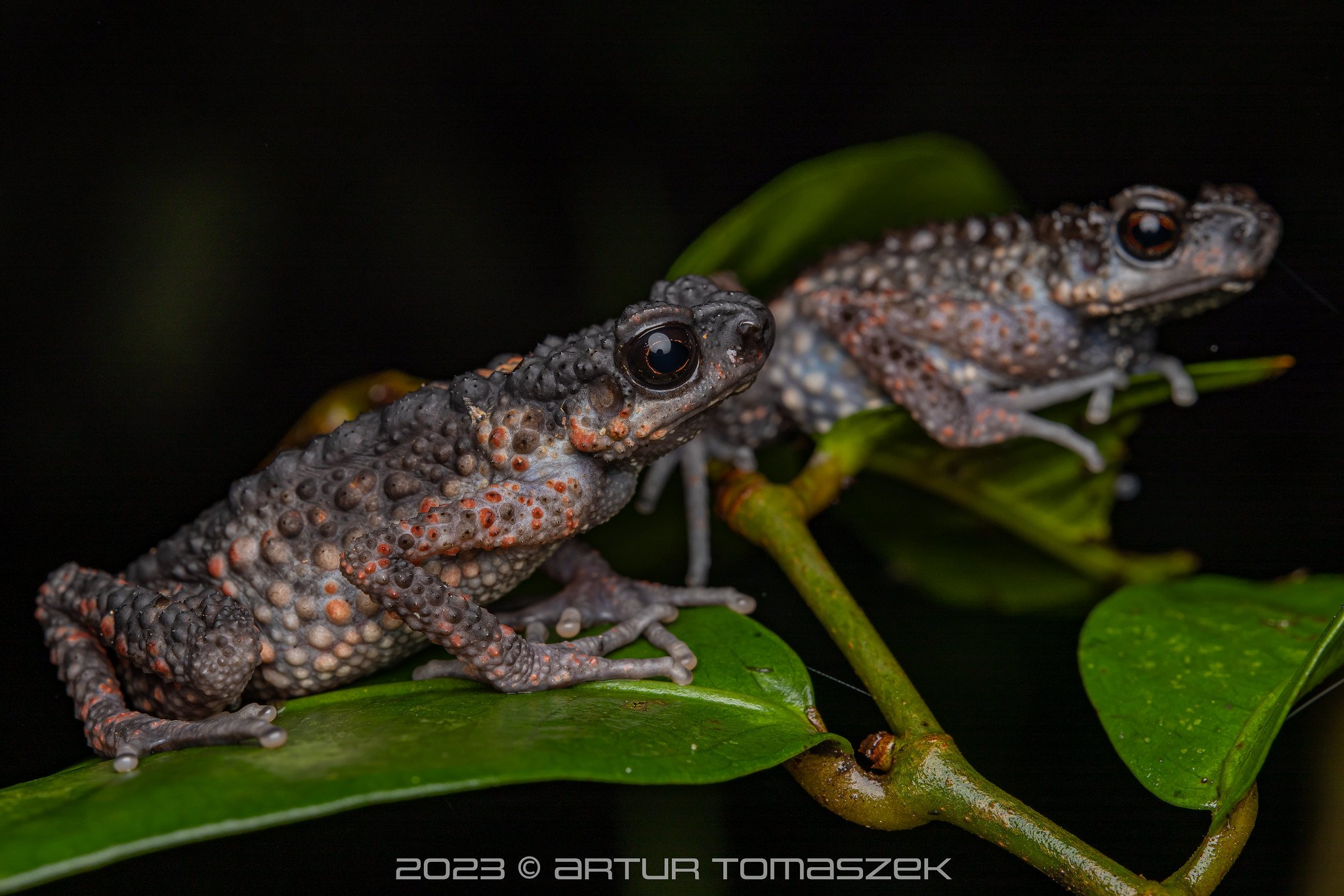
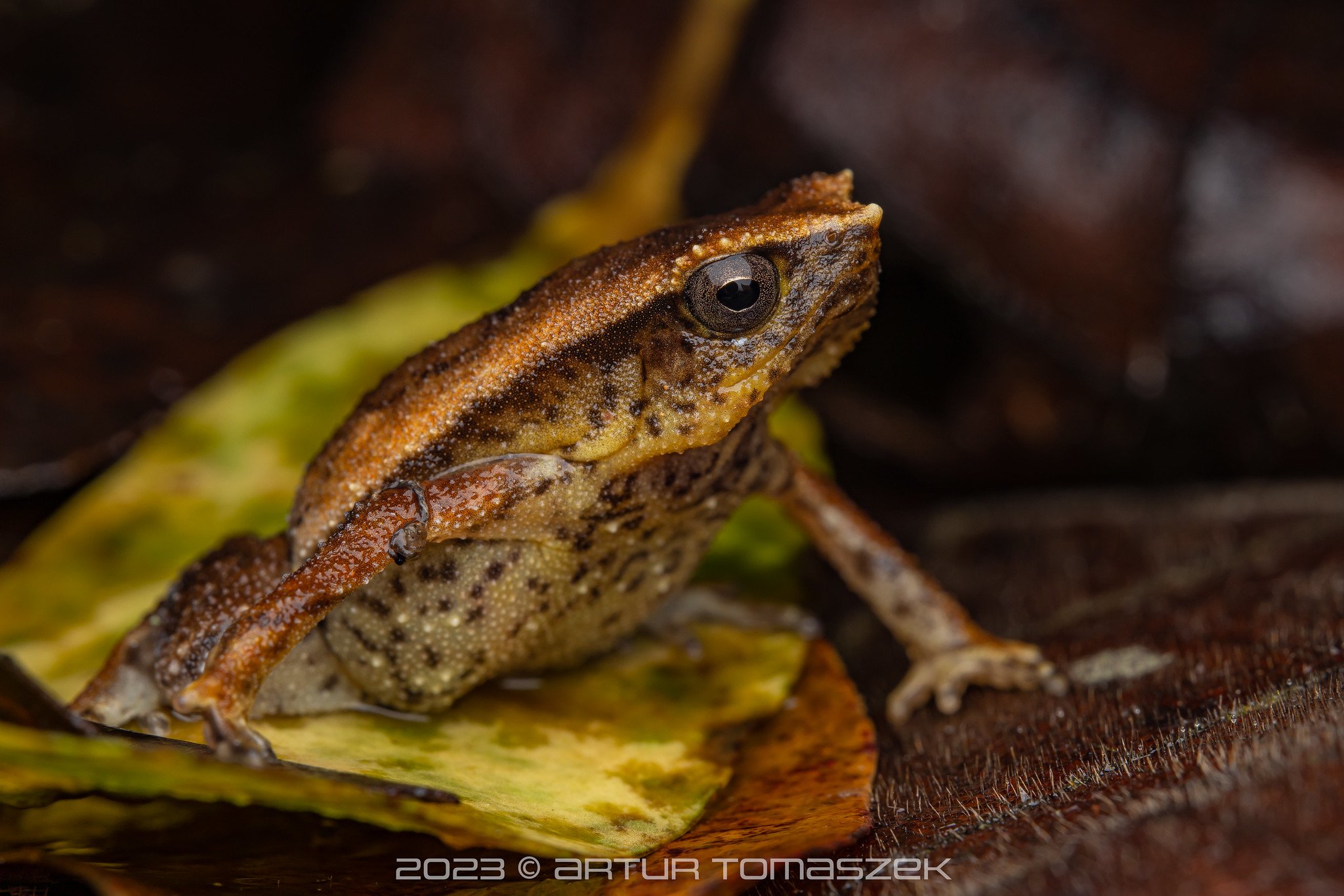

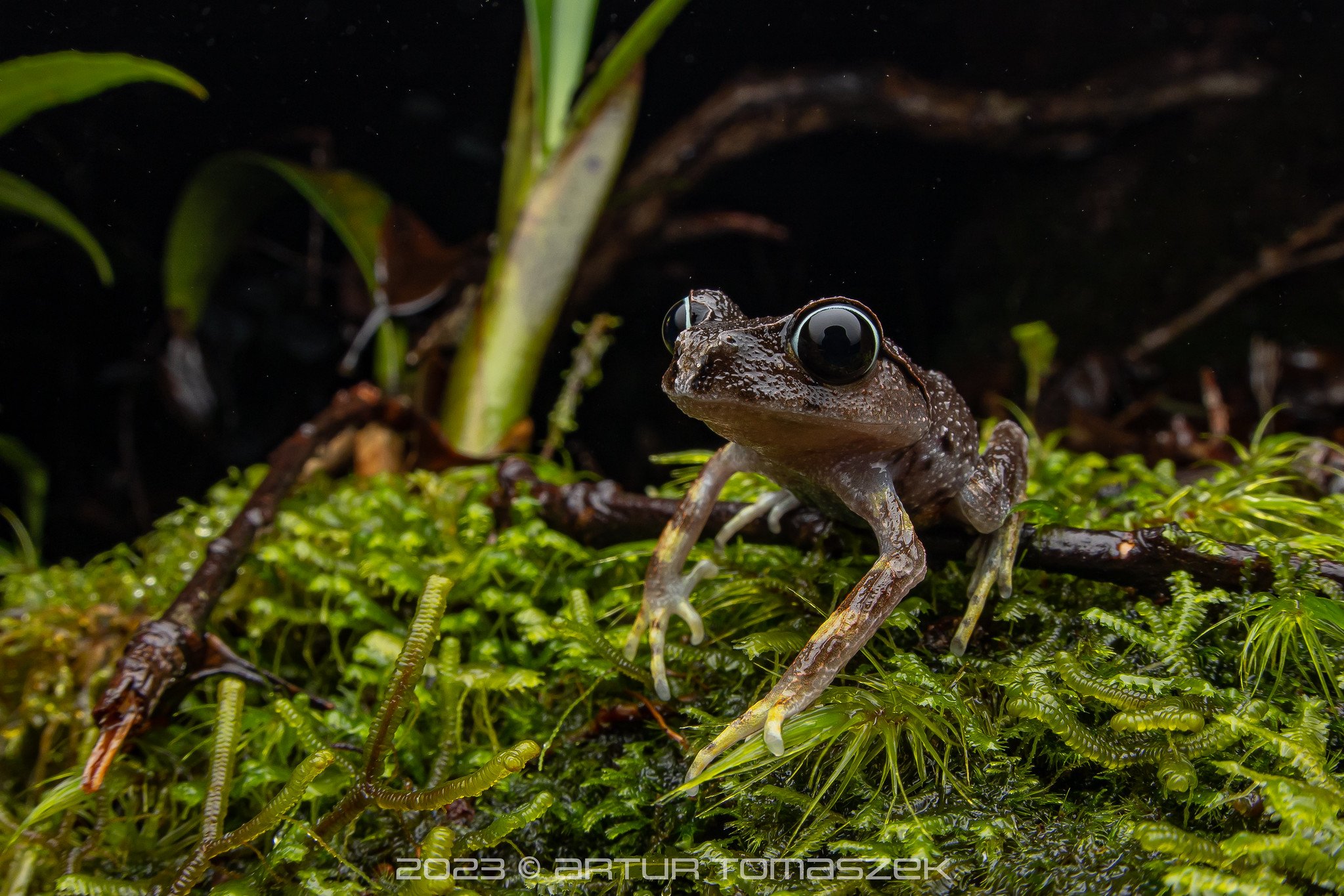
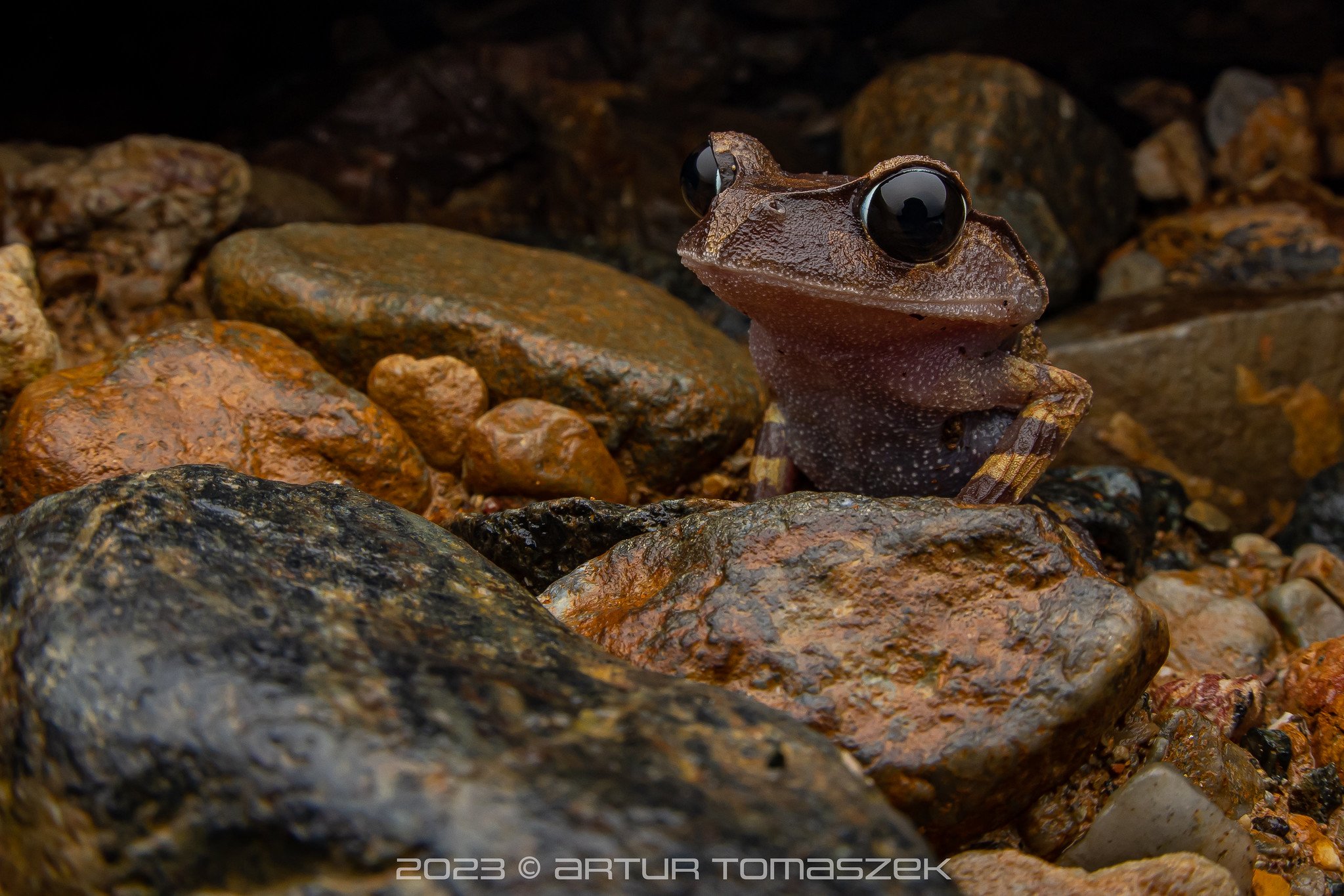

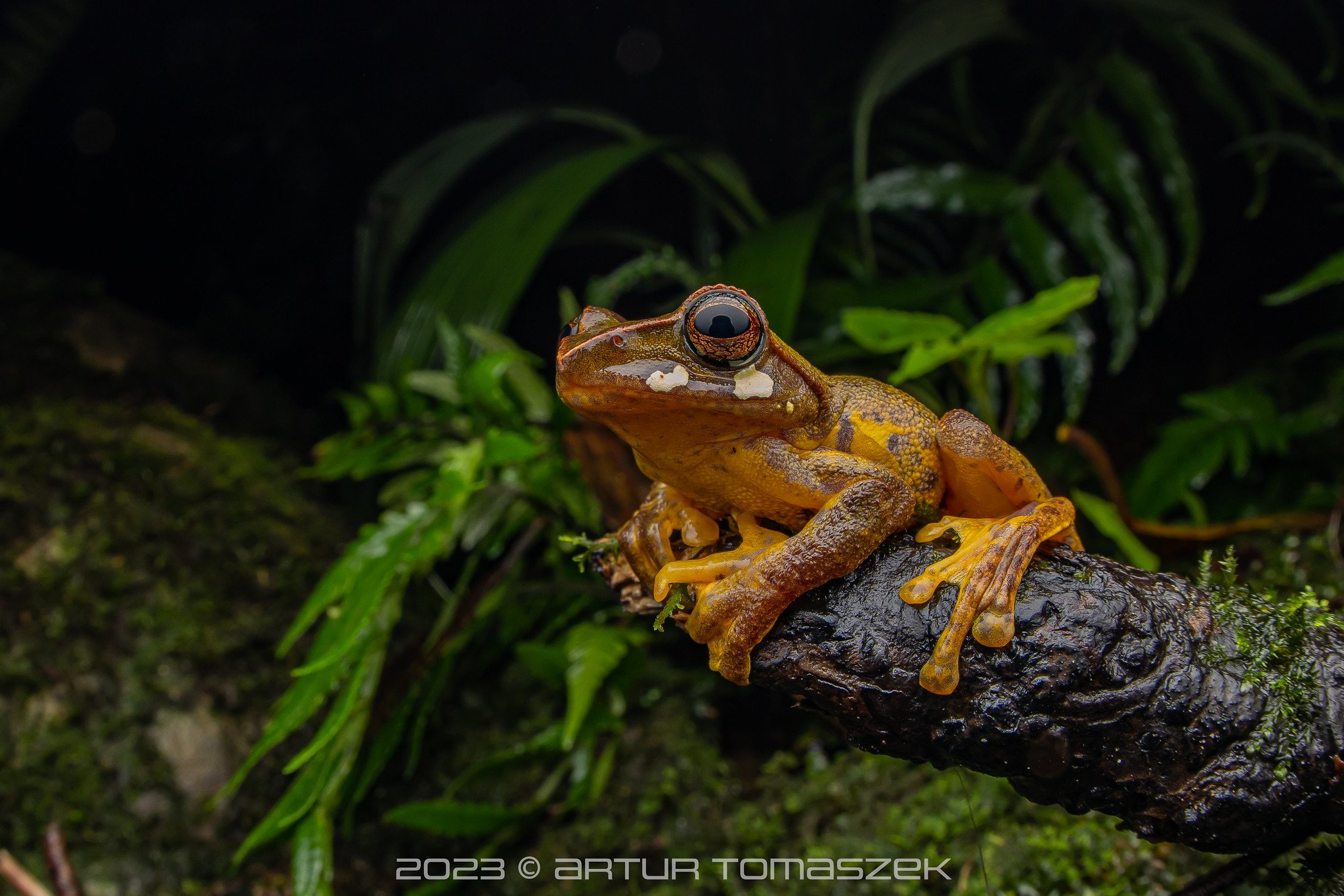
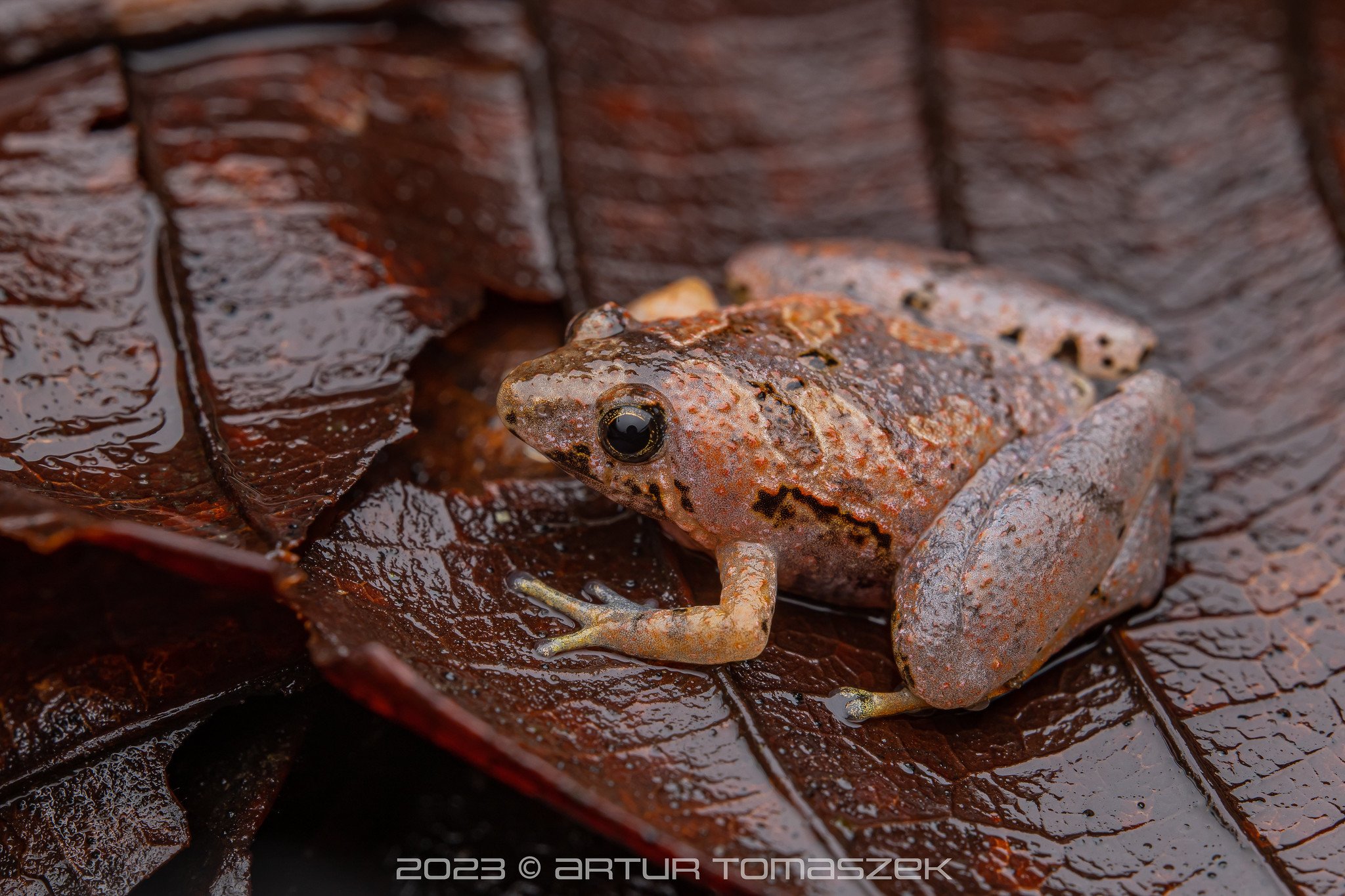
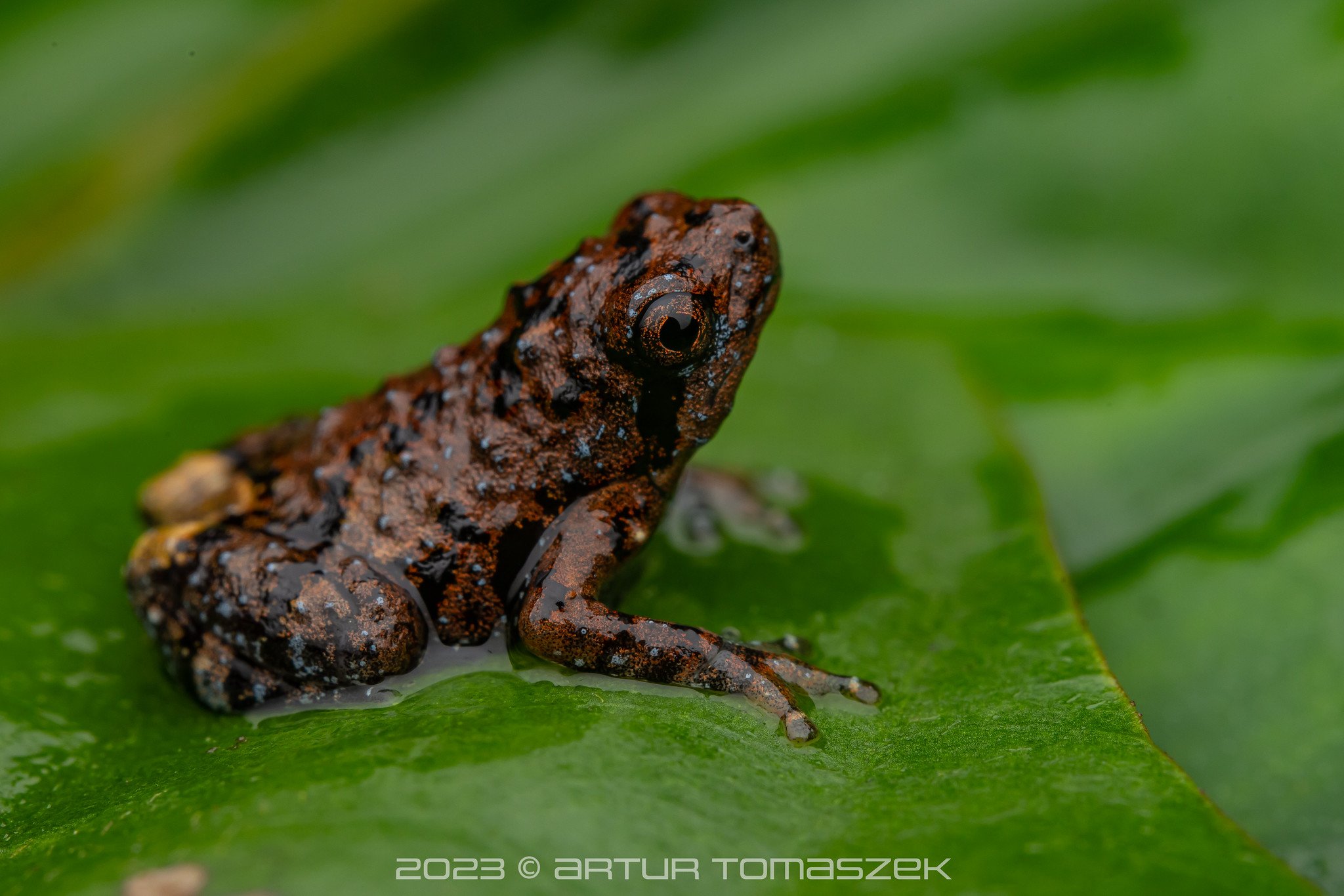

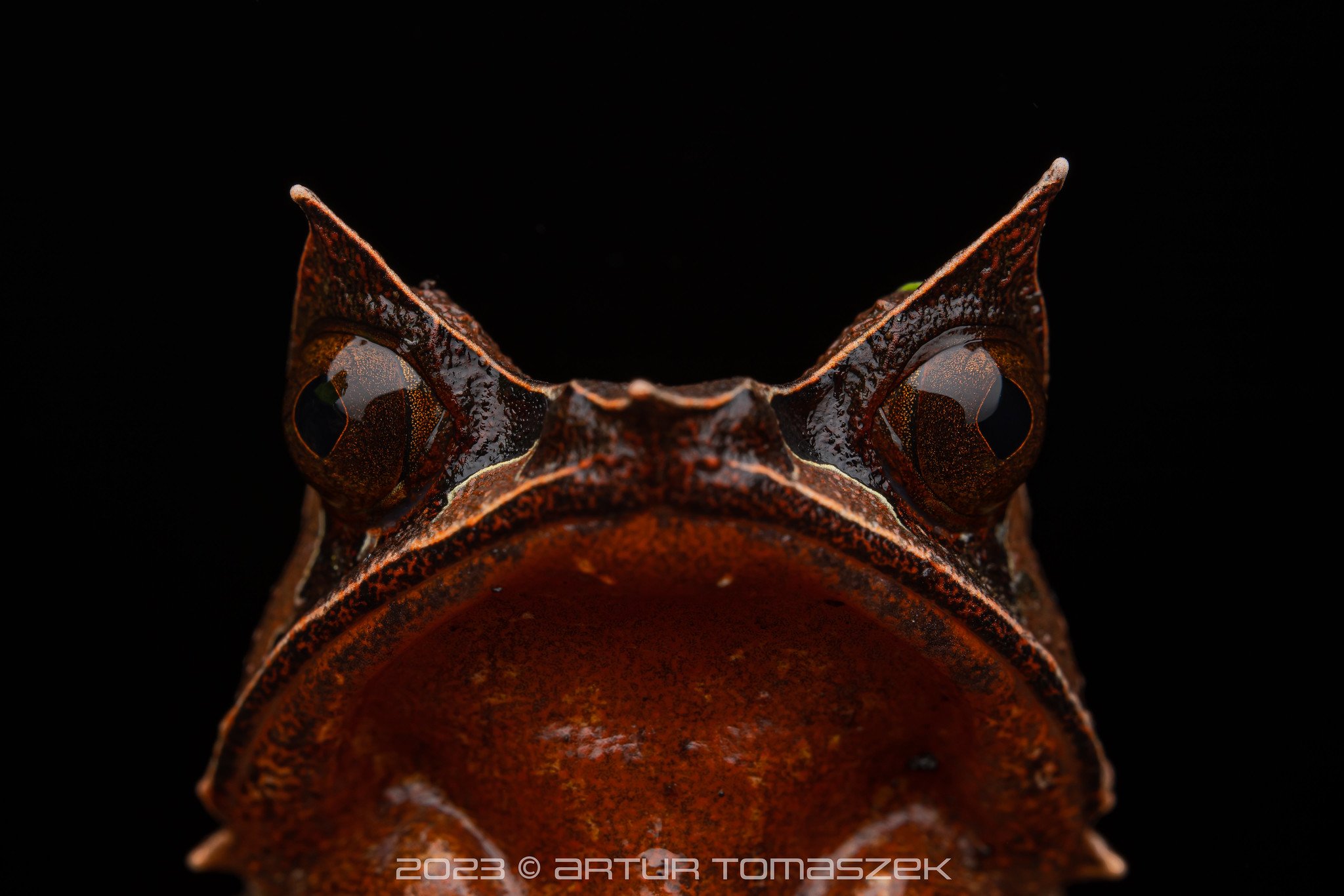
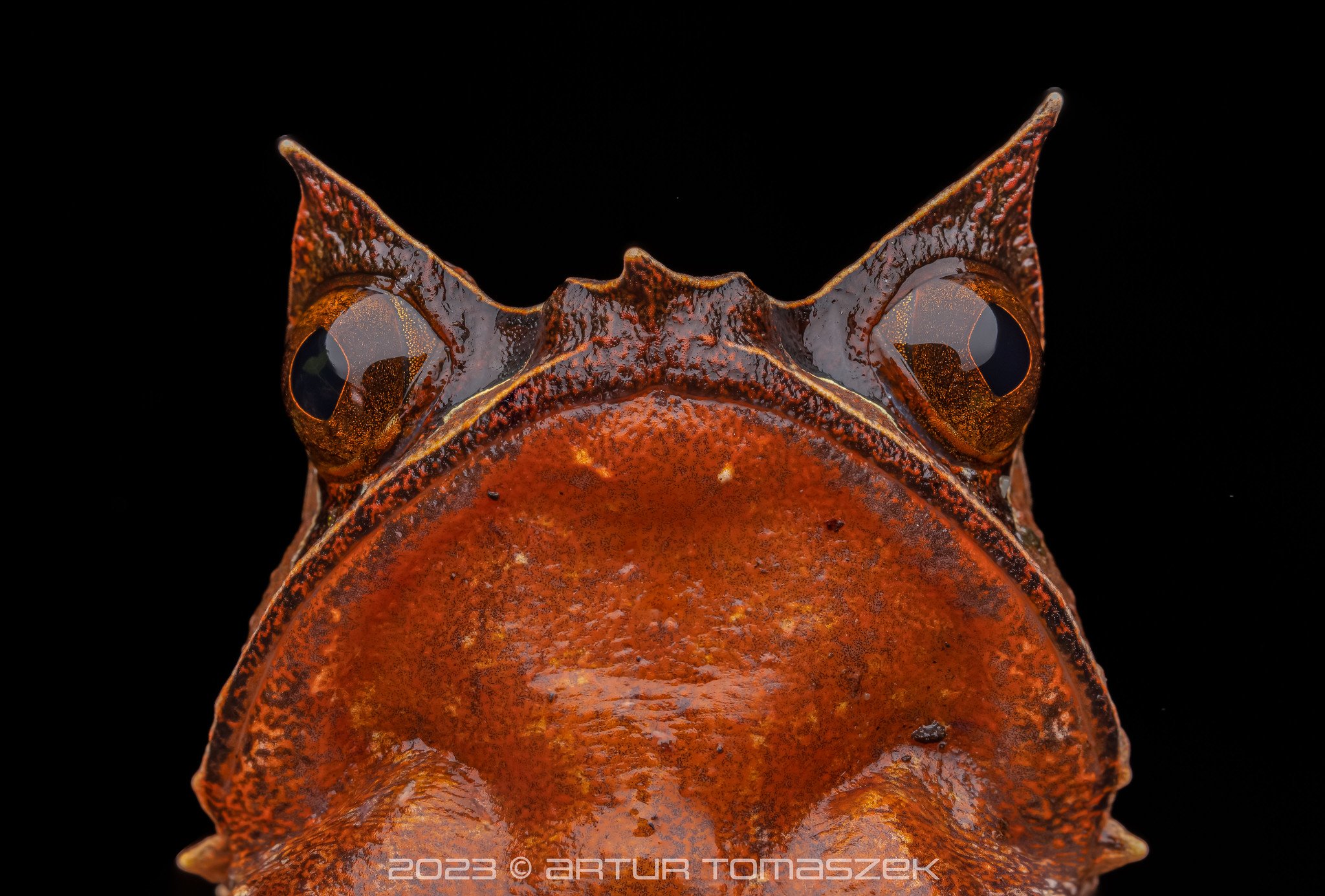
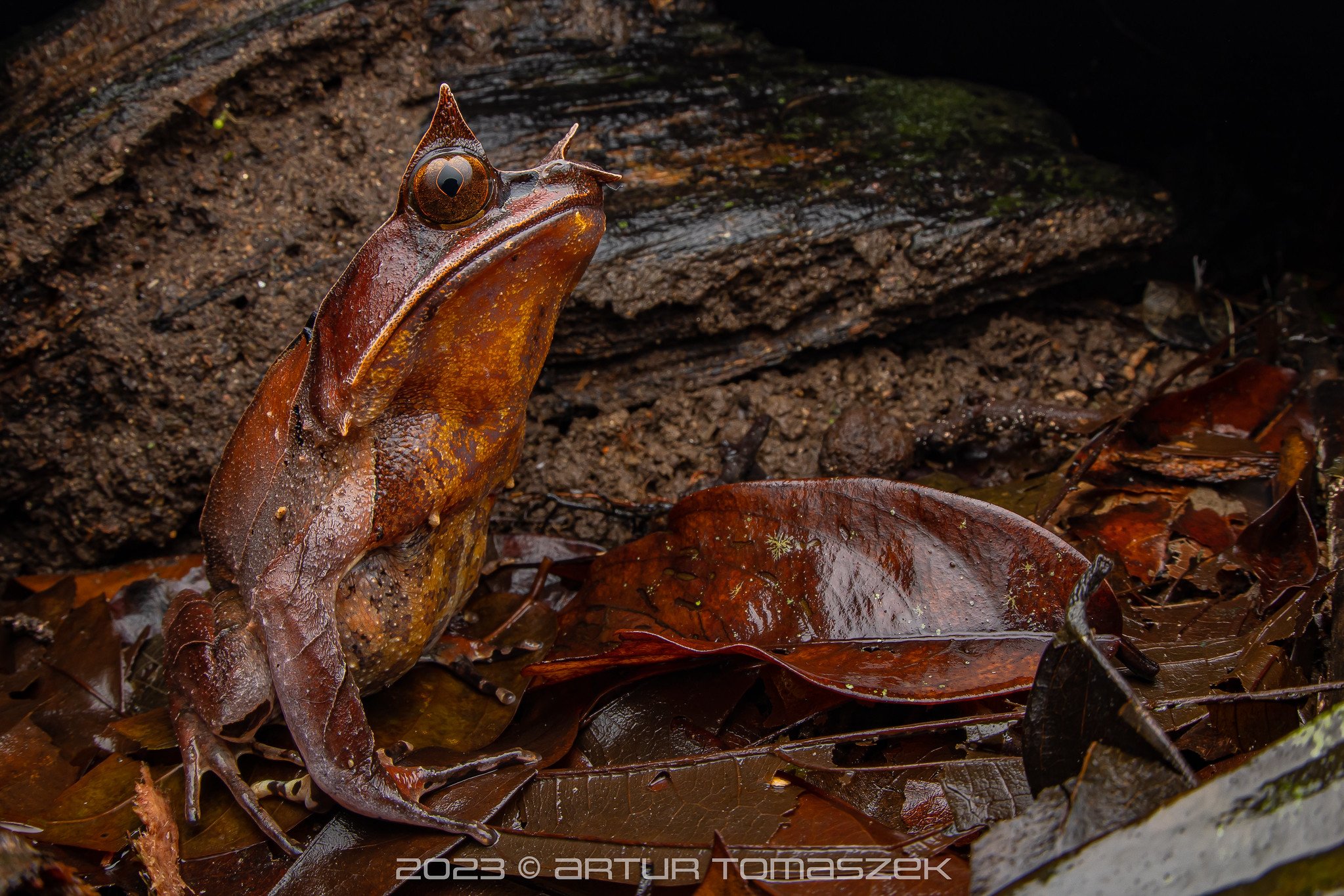
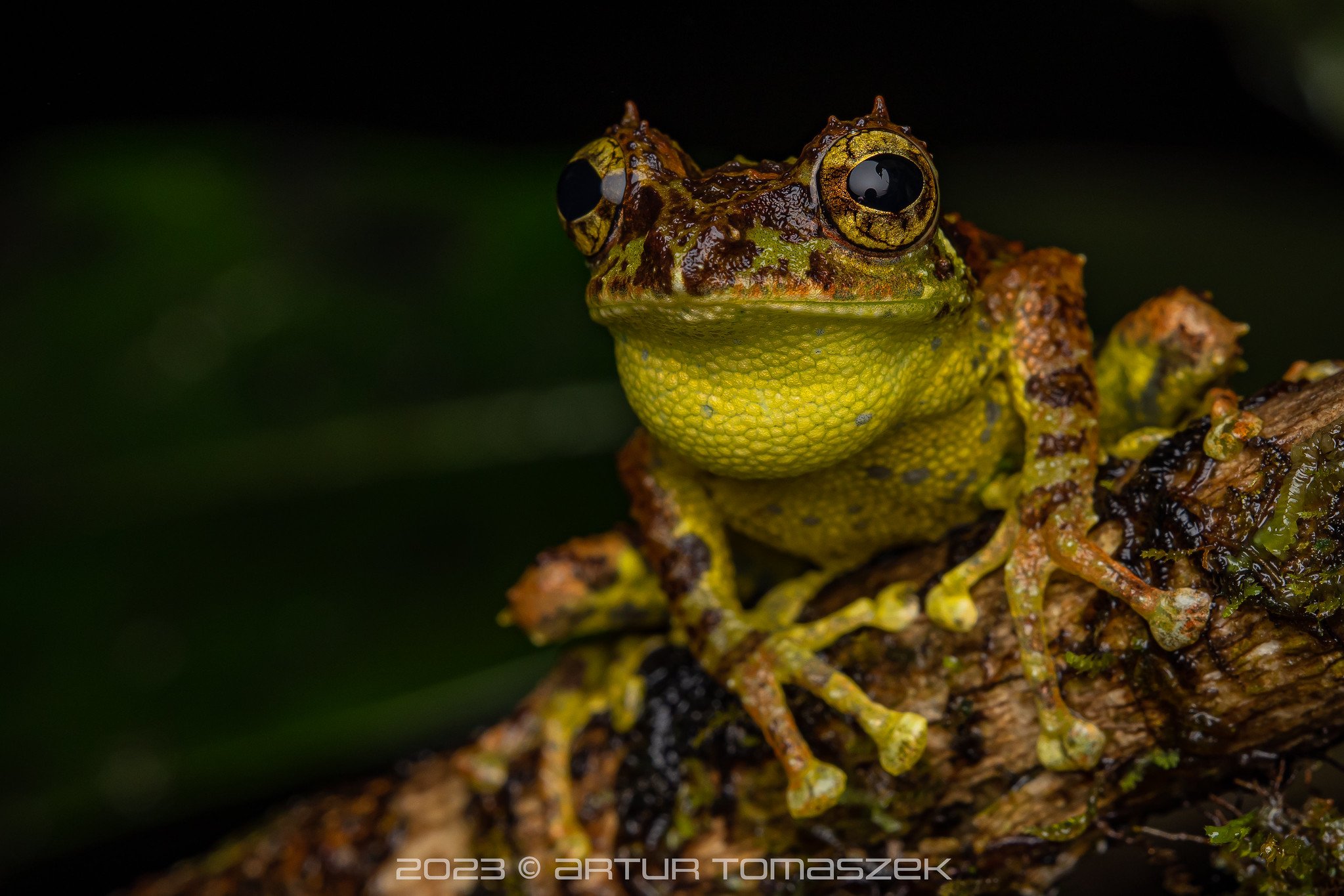

Phrynoidis juxtasper (giant river toad)
Phrynoidis juxtasper (giant river toad) and shocked Karolina. This toad was the size of a small cat.
Another highlight of our lowland walks was a wild Rafflesia keithii, avidly protected by the local community. An incredible plant, although it definitely doesn’t smell as bad as they say.
Rafflesia keithii, a parasitic flowering plant growing up to 1 metre in diameter. The Rafflesia flower takes about five years to bloom but only lasts five to seven days after it does.
The highlands also provided us with some lovely bird encounters, although birds were not our main focus and photographing in the rain without any cover and good visibility proved very tricky. Below our favourite sightings: a gorgeous Aethopyga temminckii (Temminck's sunbird) male and a Cissa jefferyi (Bornean green magpie), endemic to montane forests of Borneo.
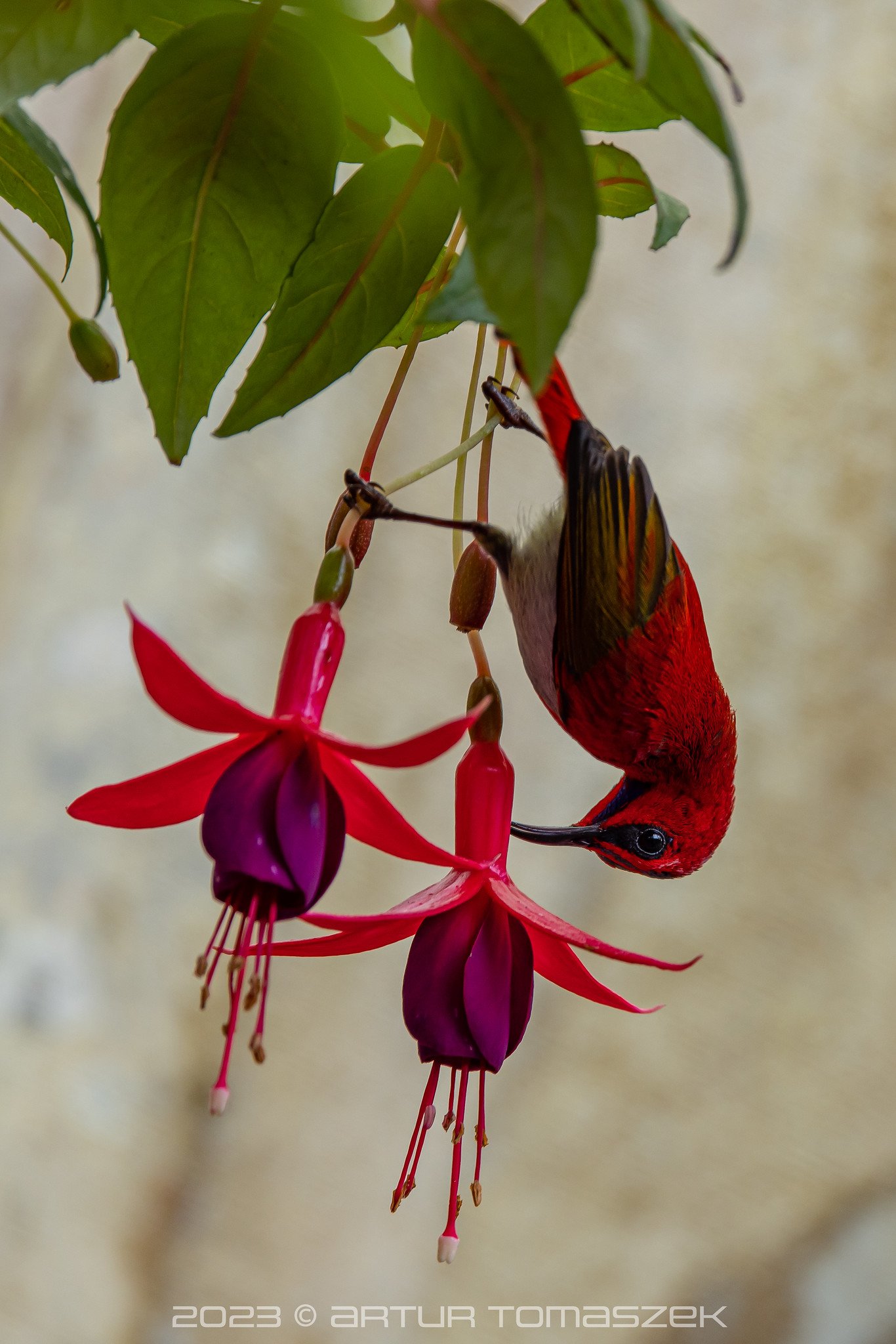
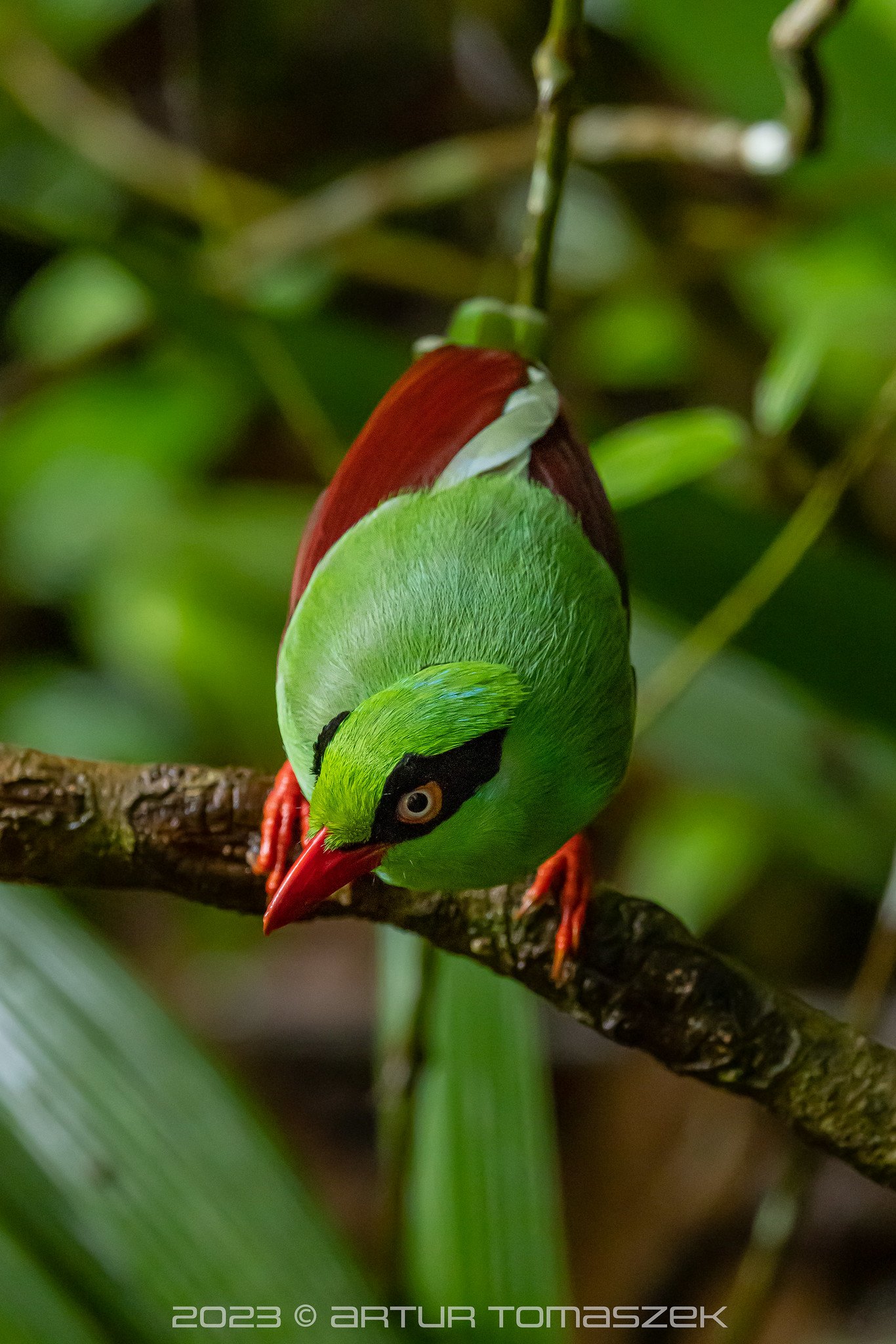
It is time to introduce you to the Kinabalu moths. We were lucky to have a very convenient white wall situated just outside our room, therefore our LepiLED could run most nights and attract some incredible species. A few examples below, more can be browsed on our Flickr.
The “moth” wall outside our room
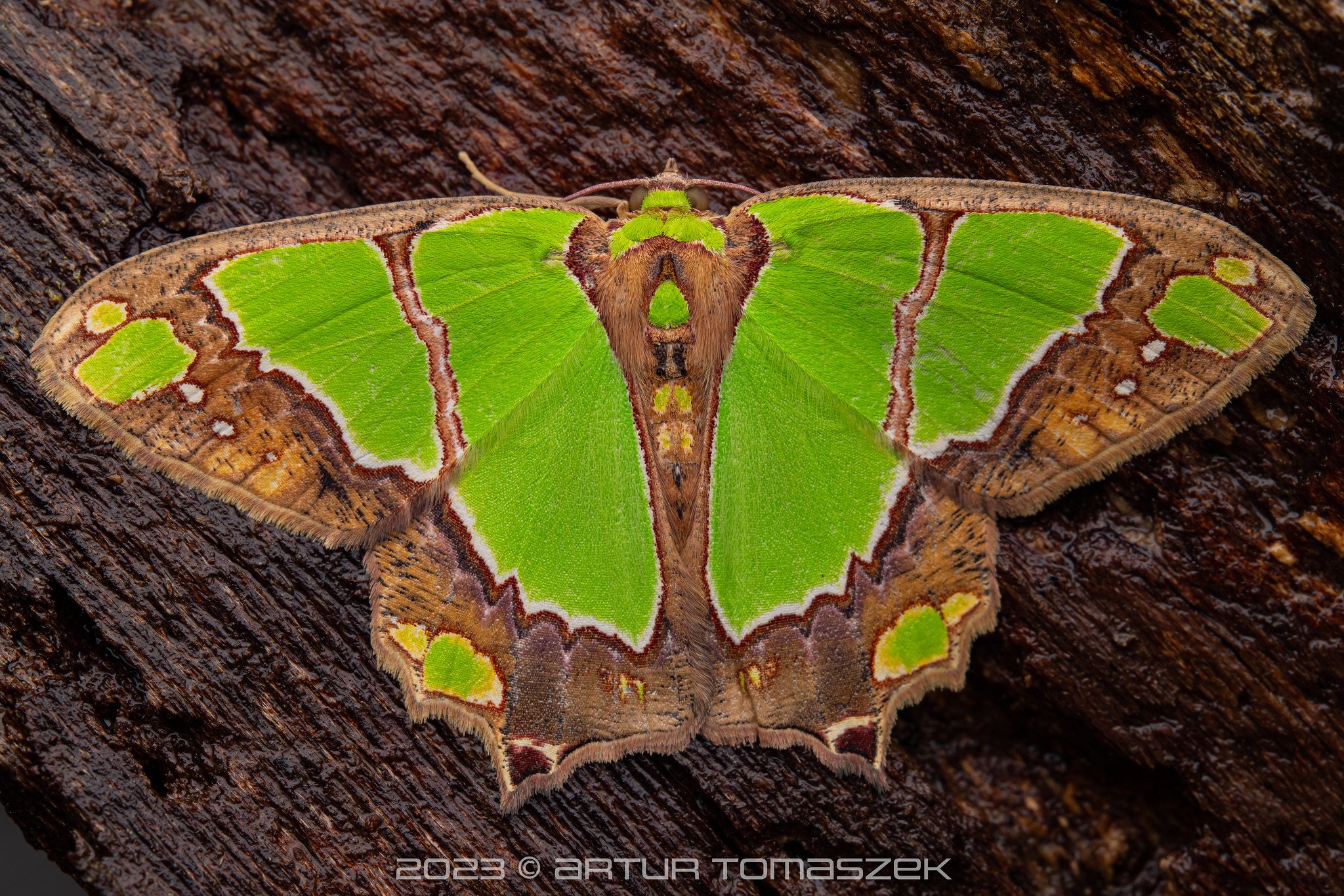
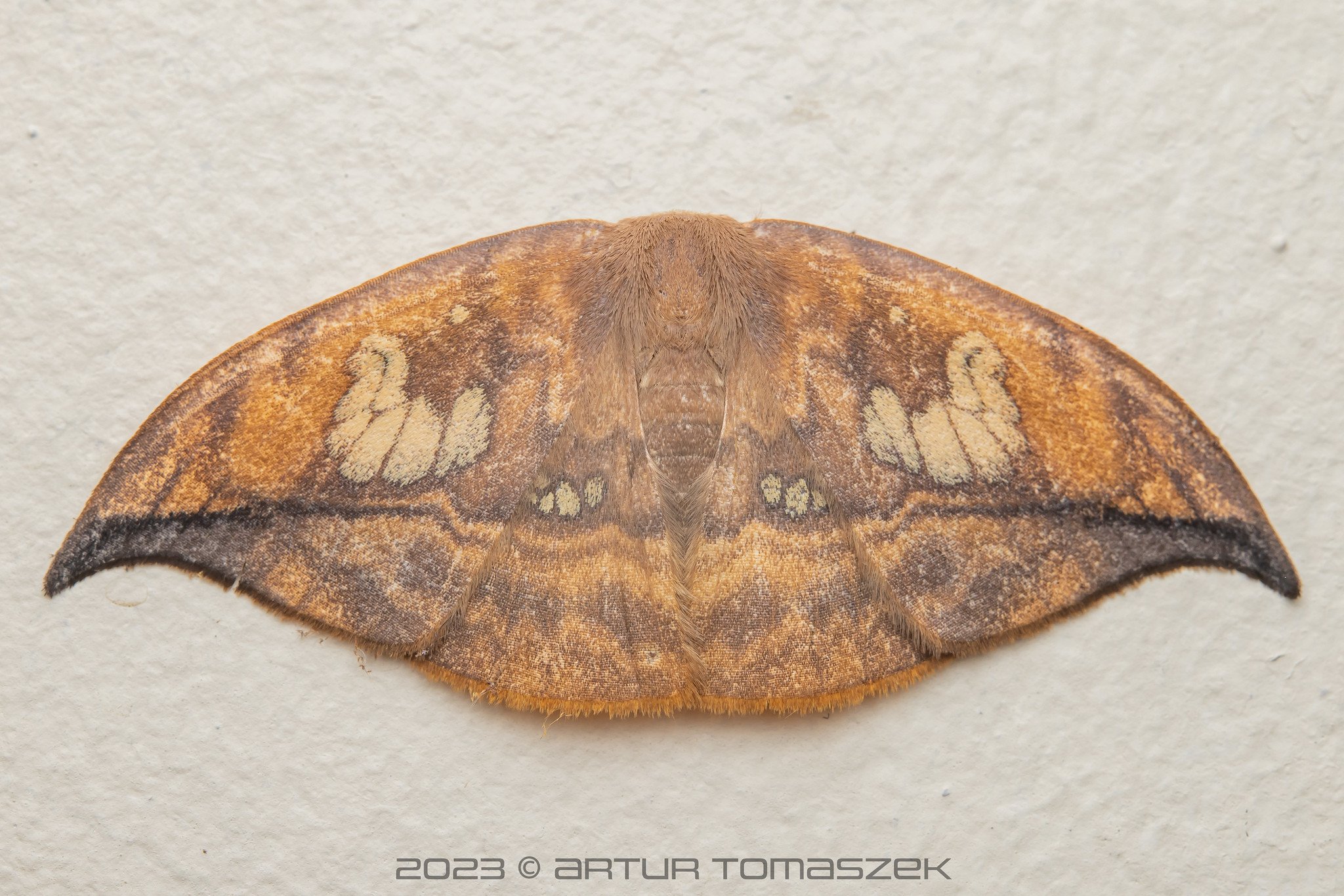
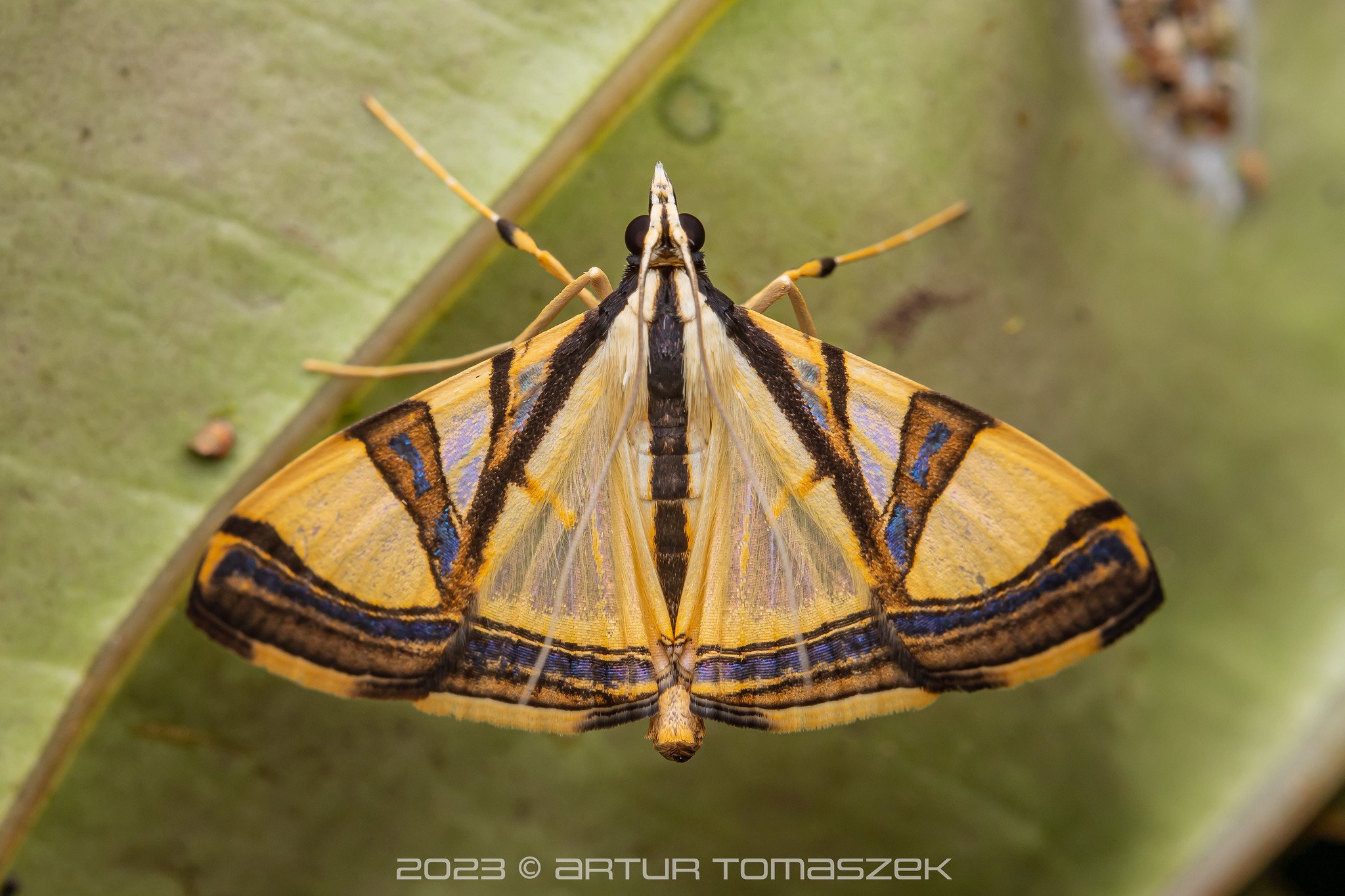
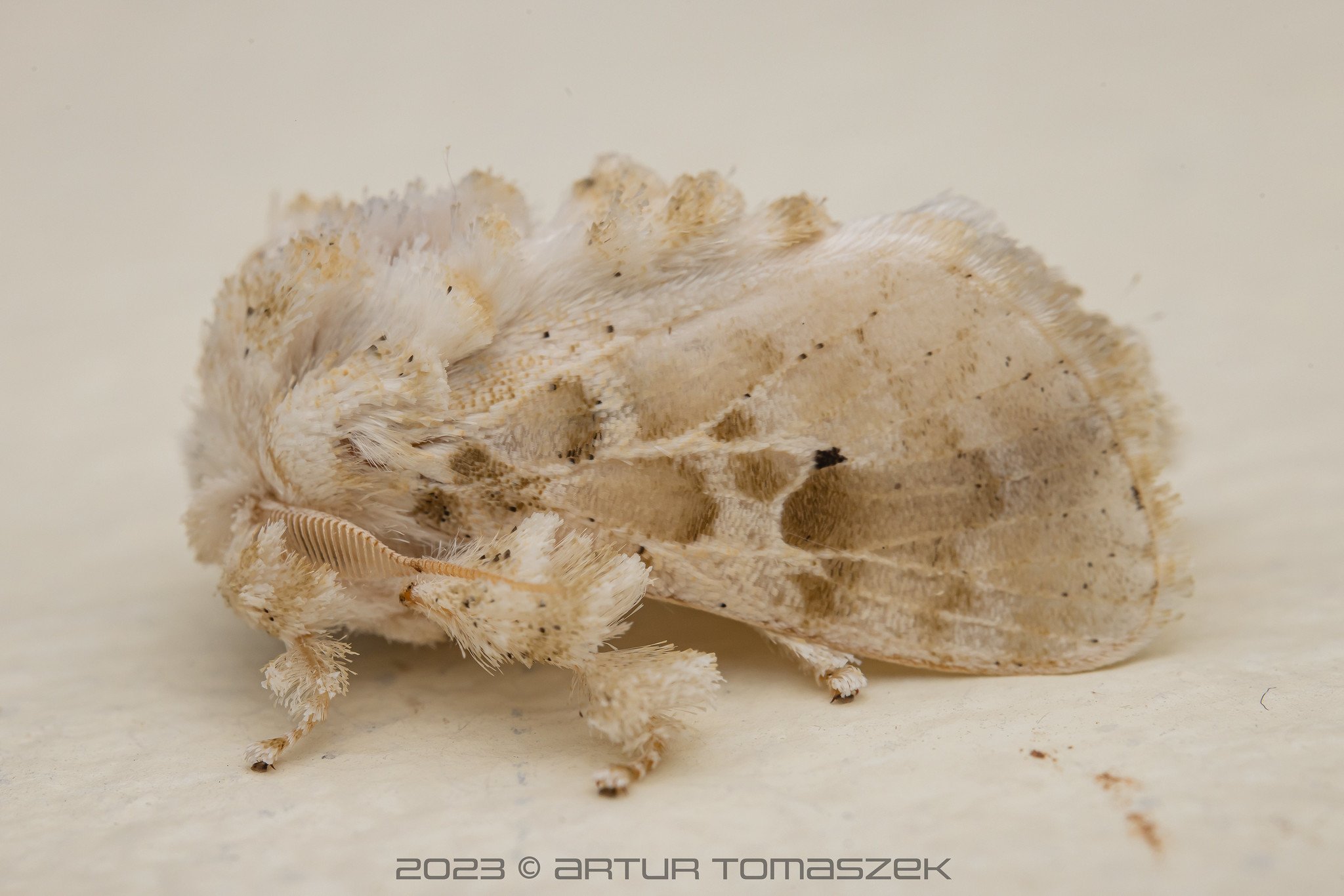
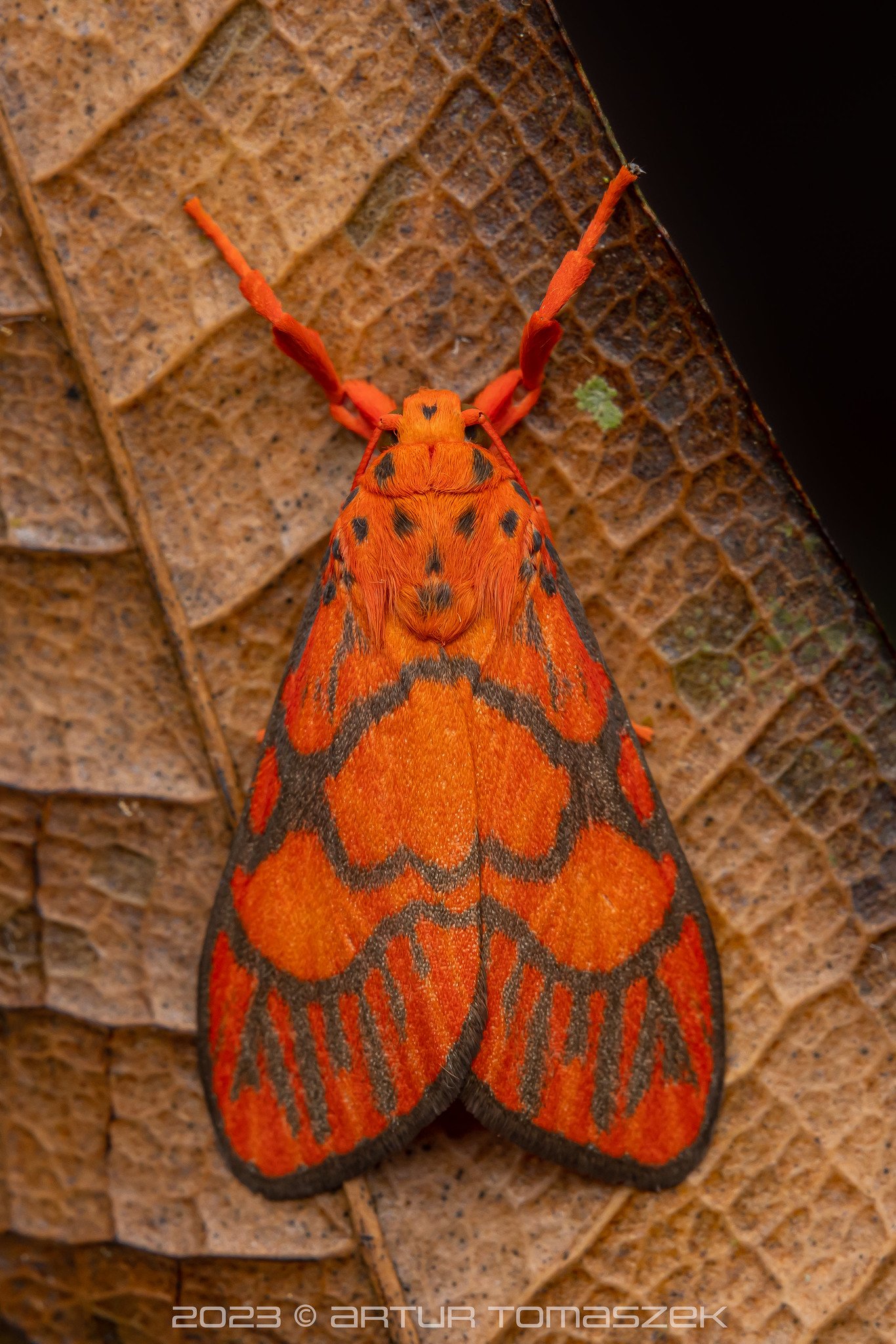
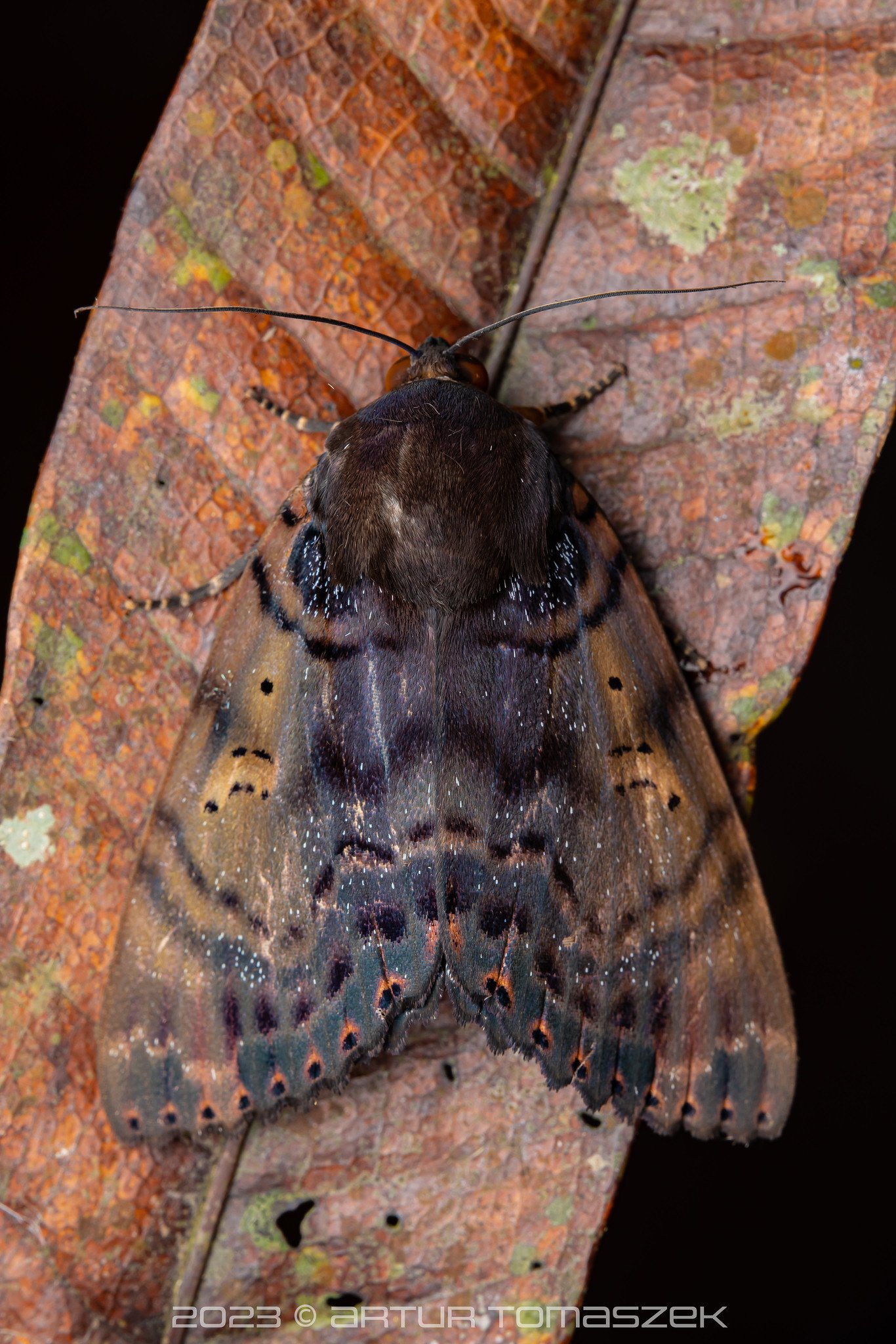
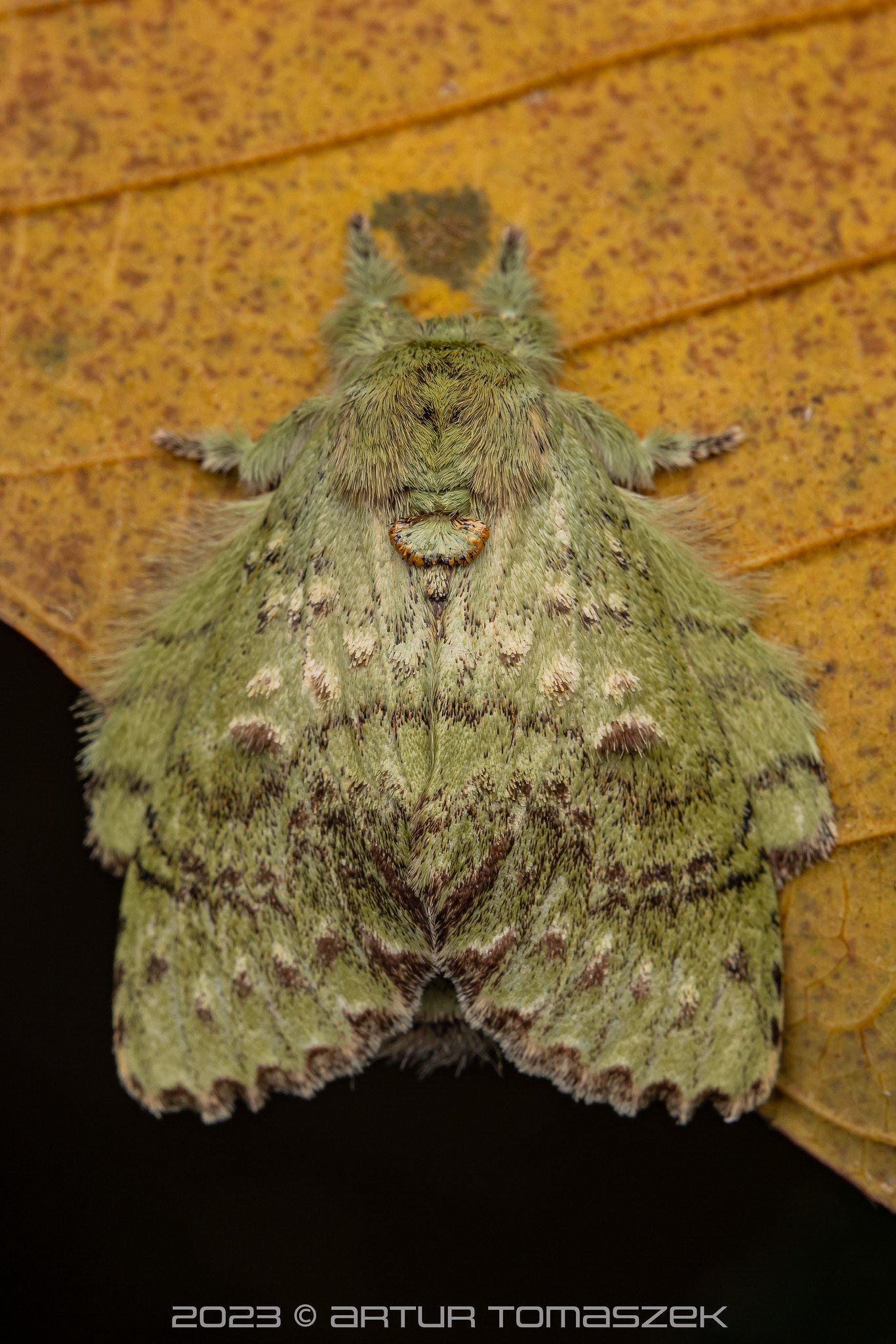

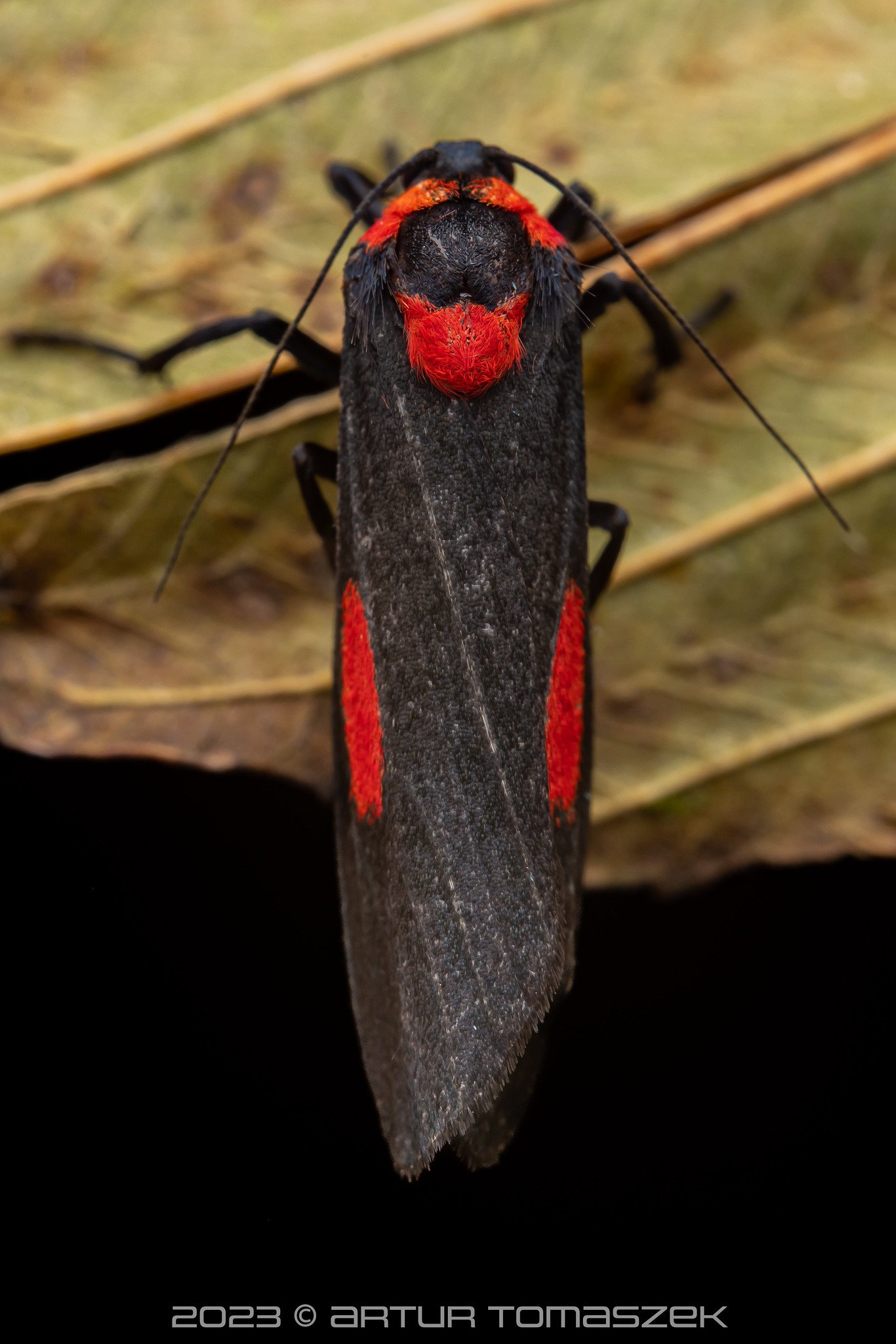
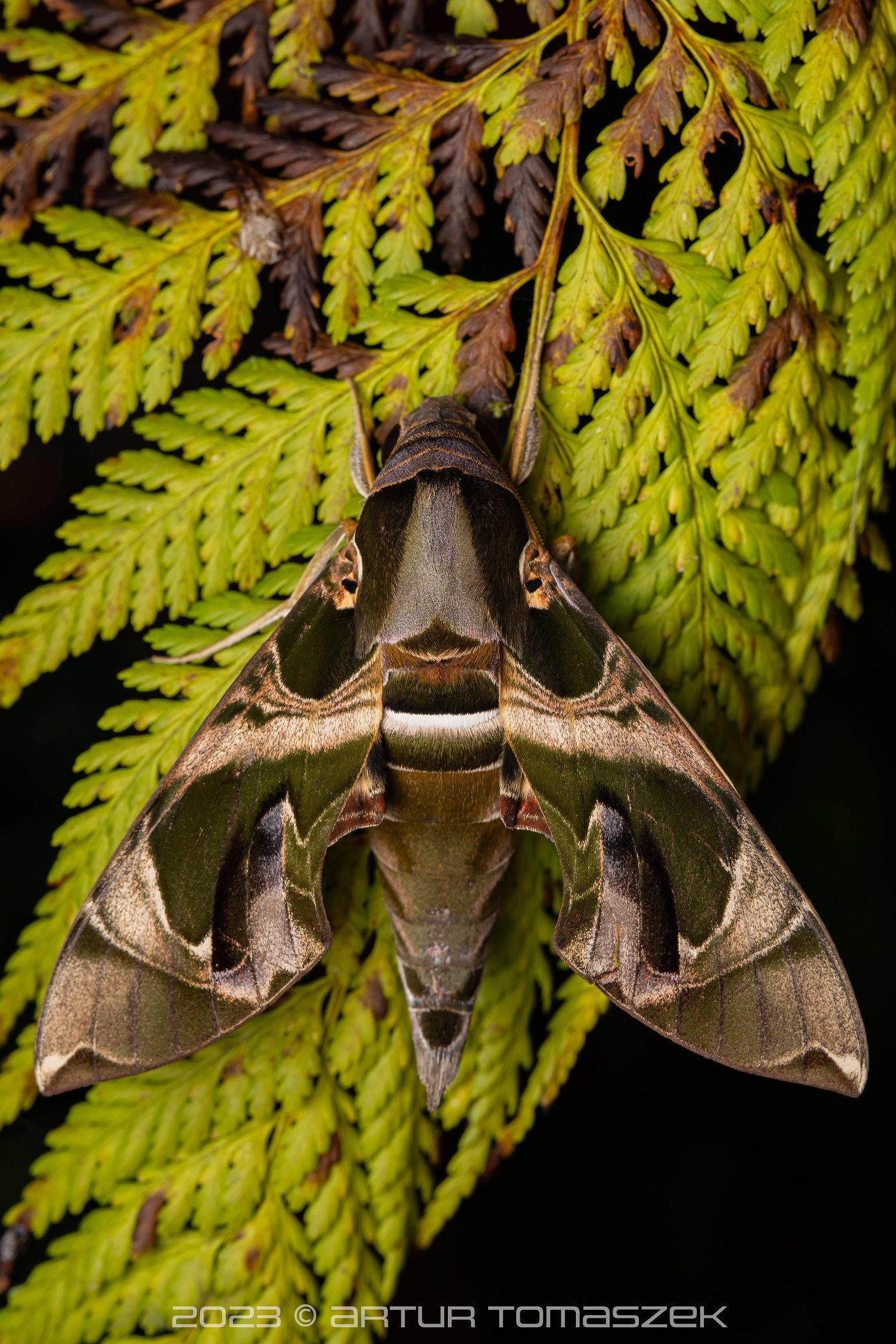
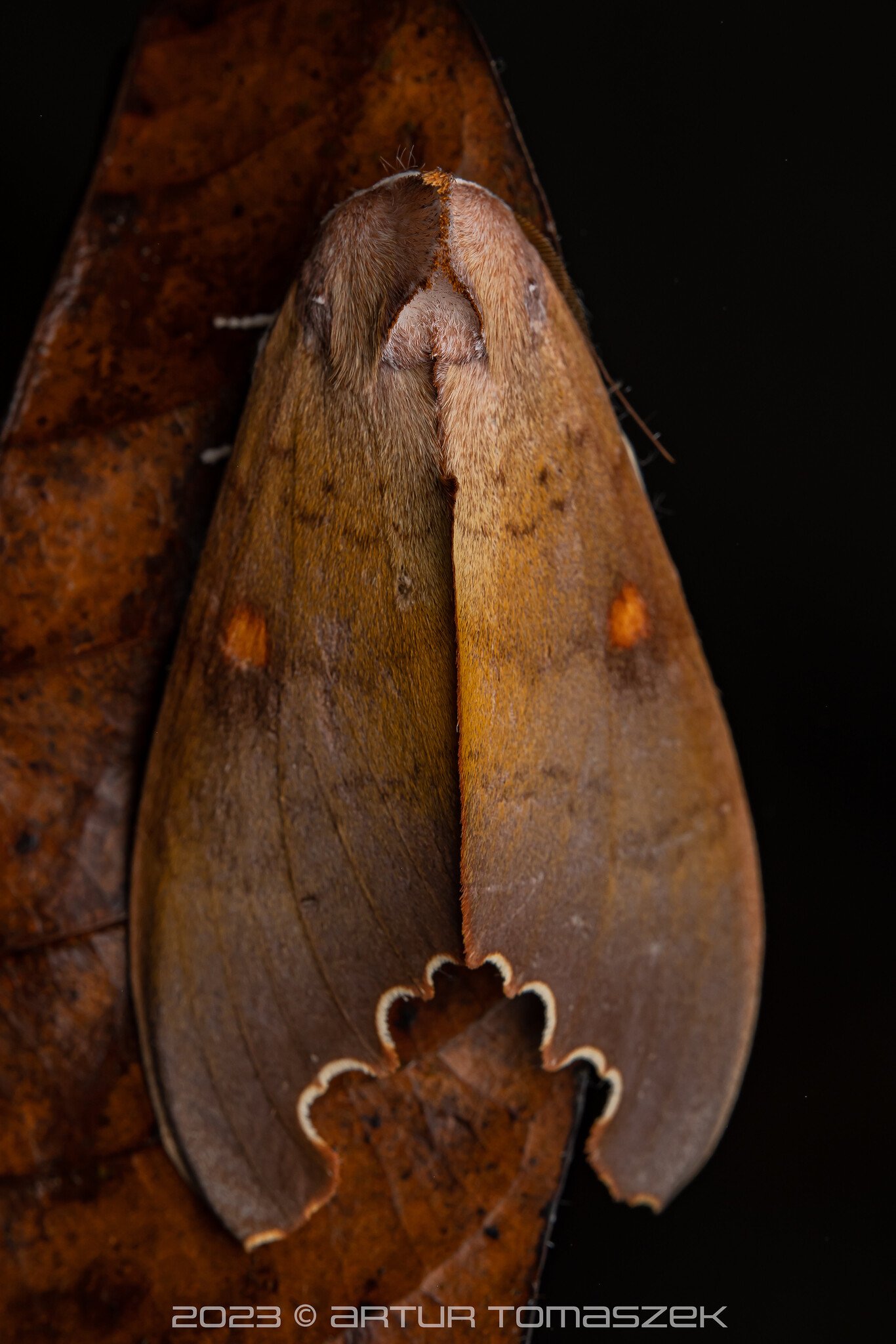
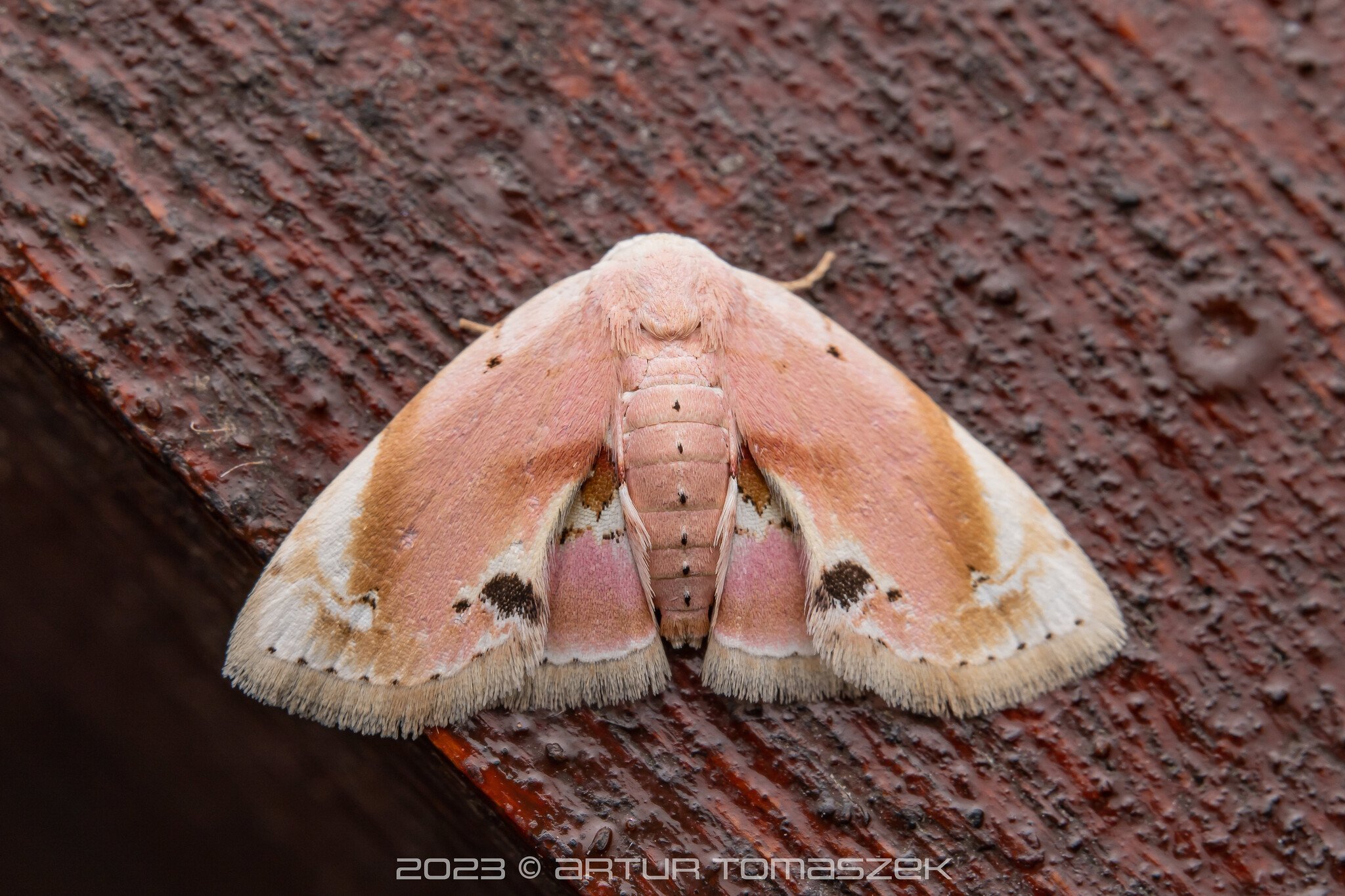
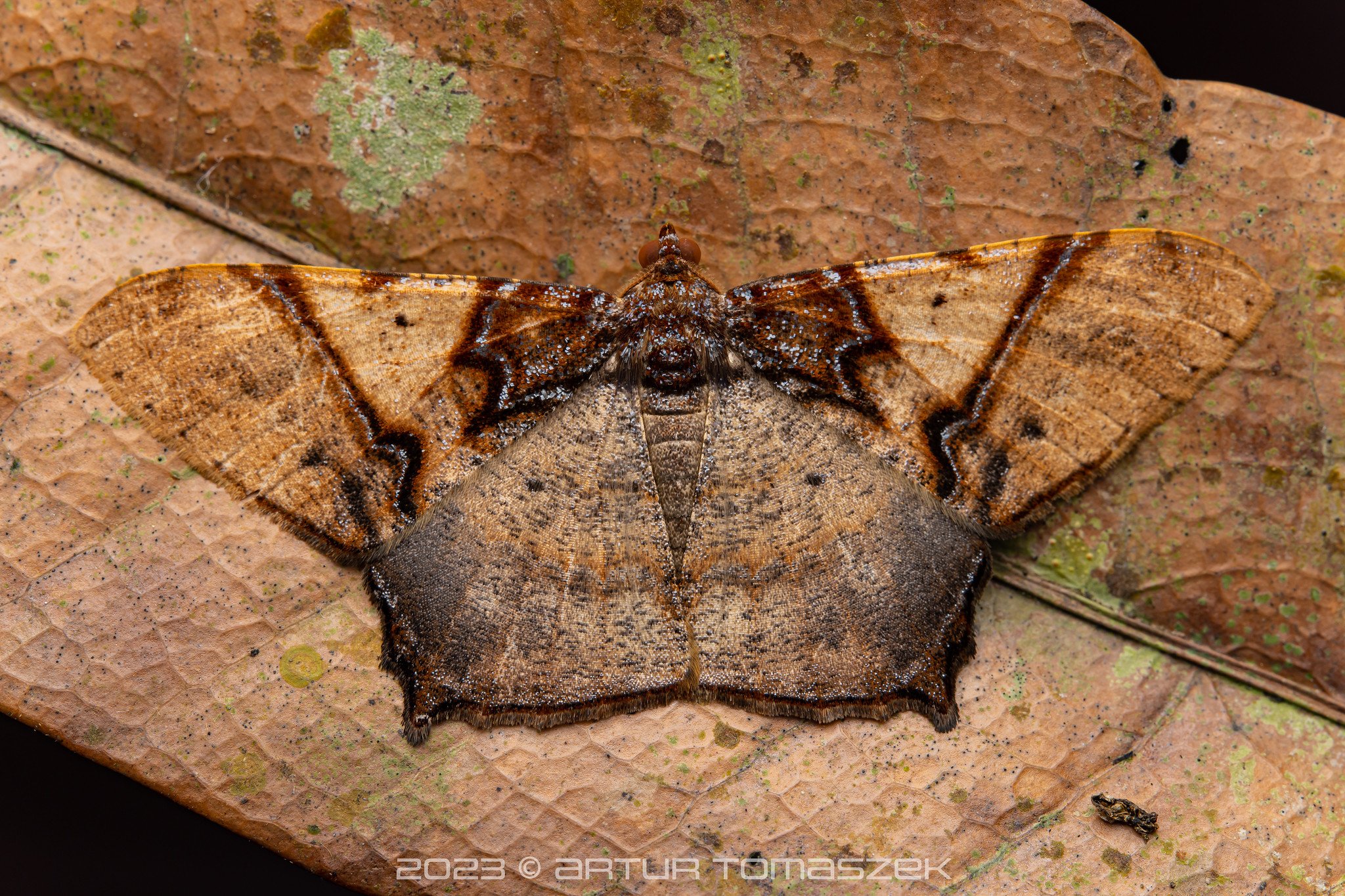
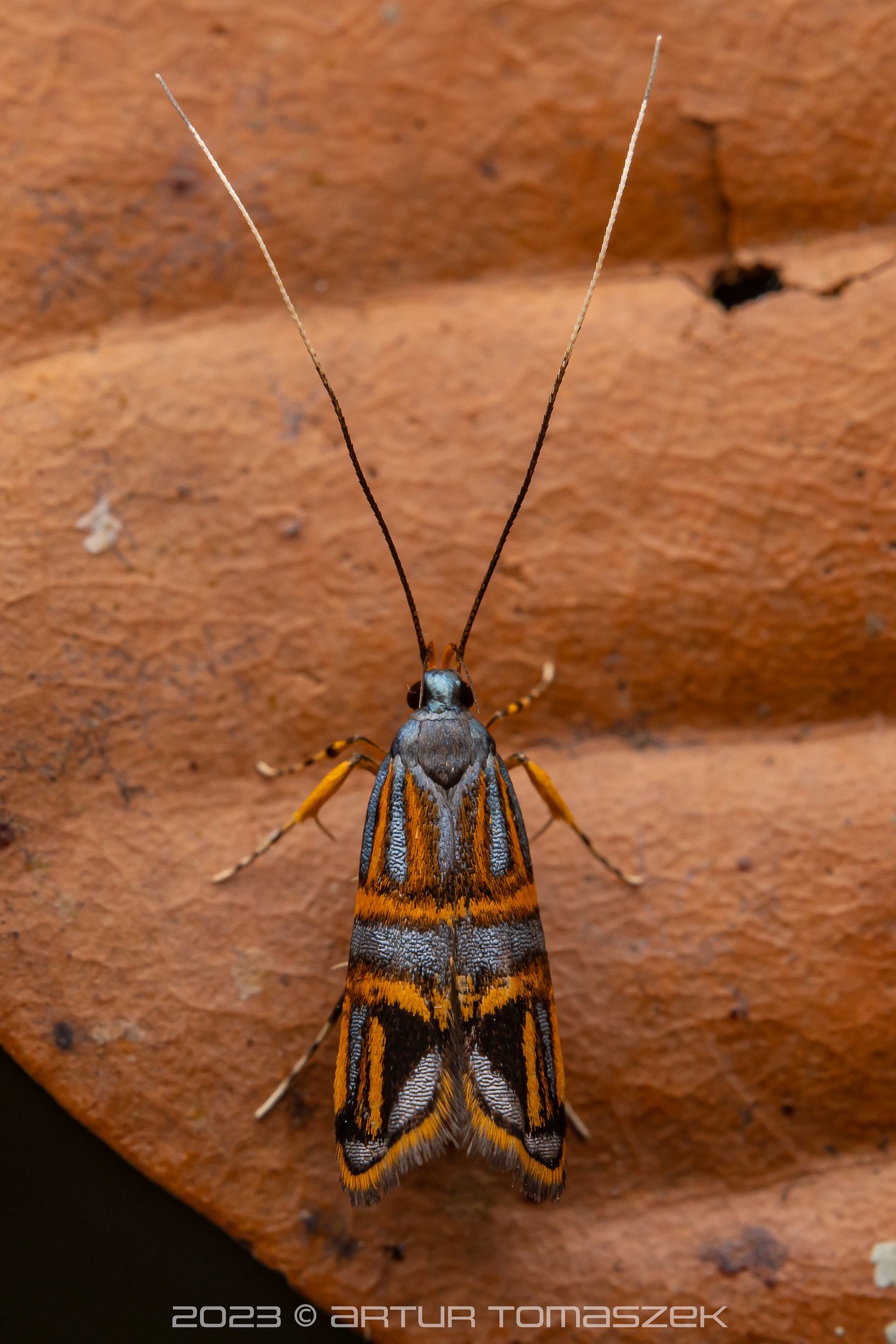
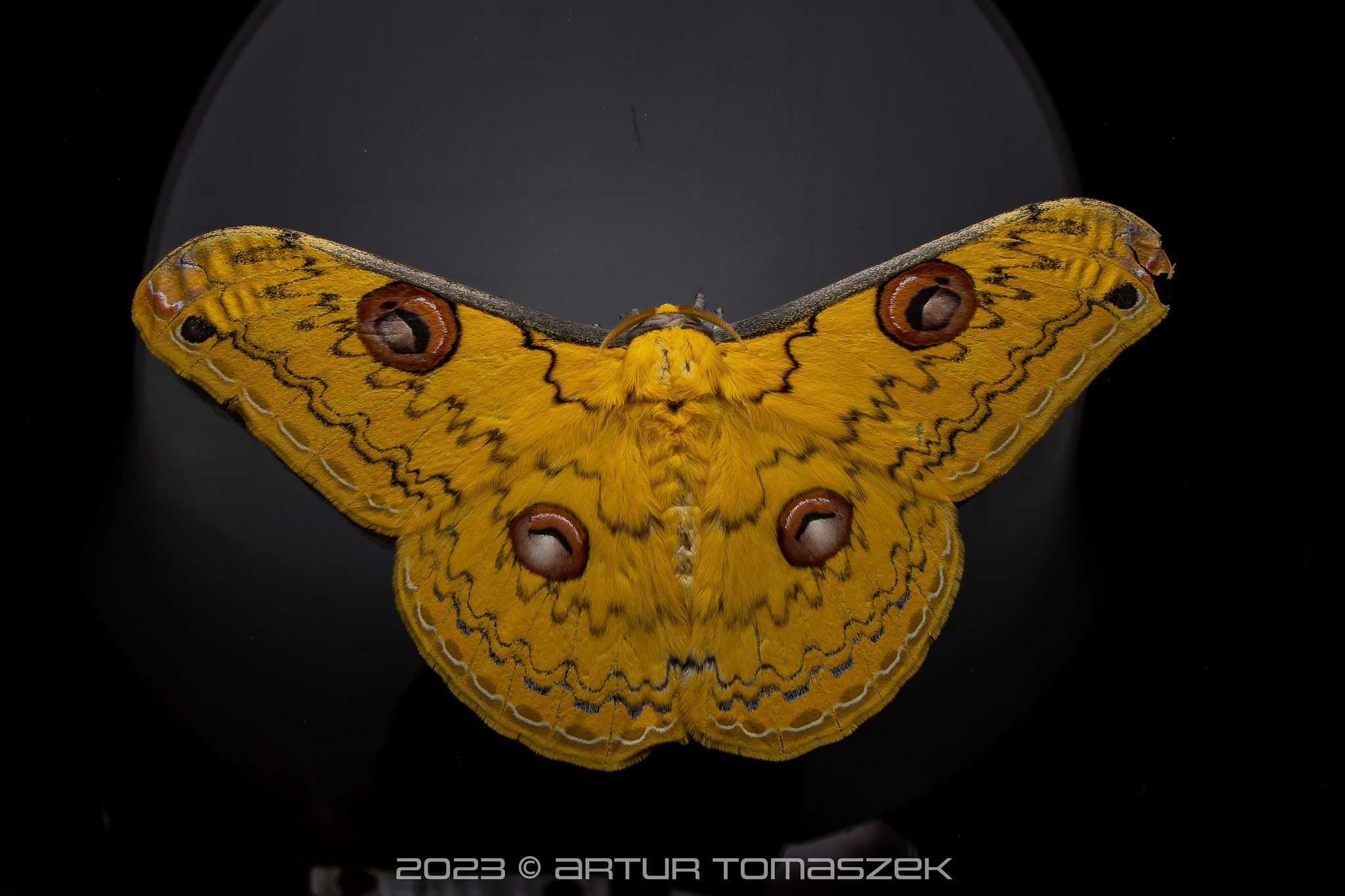


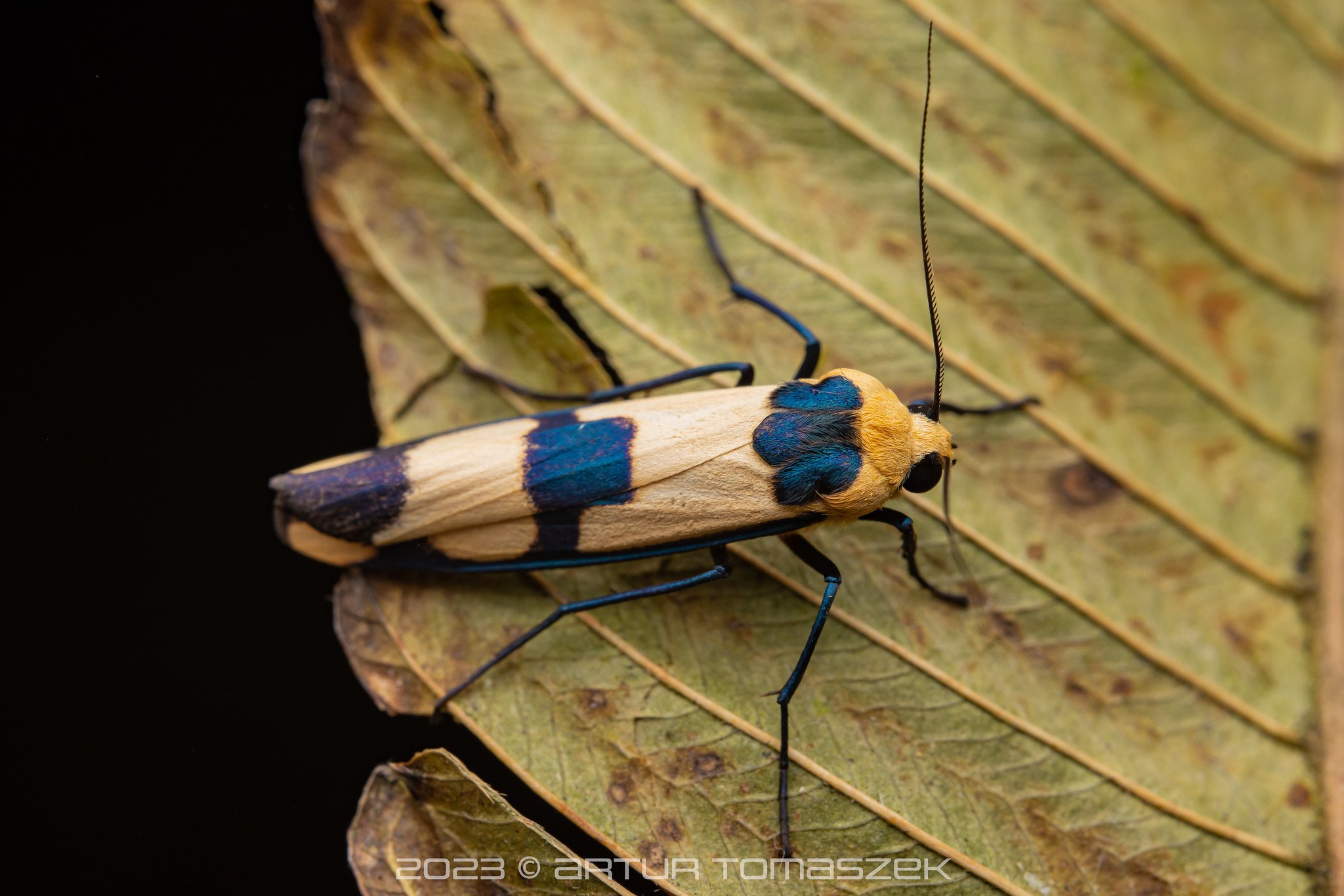
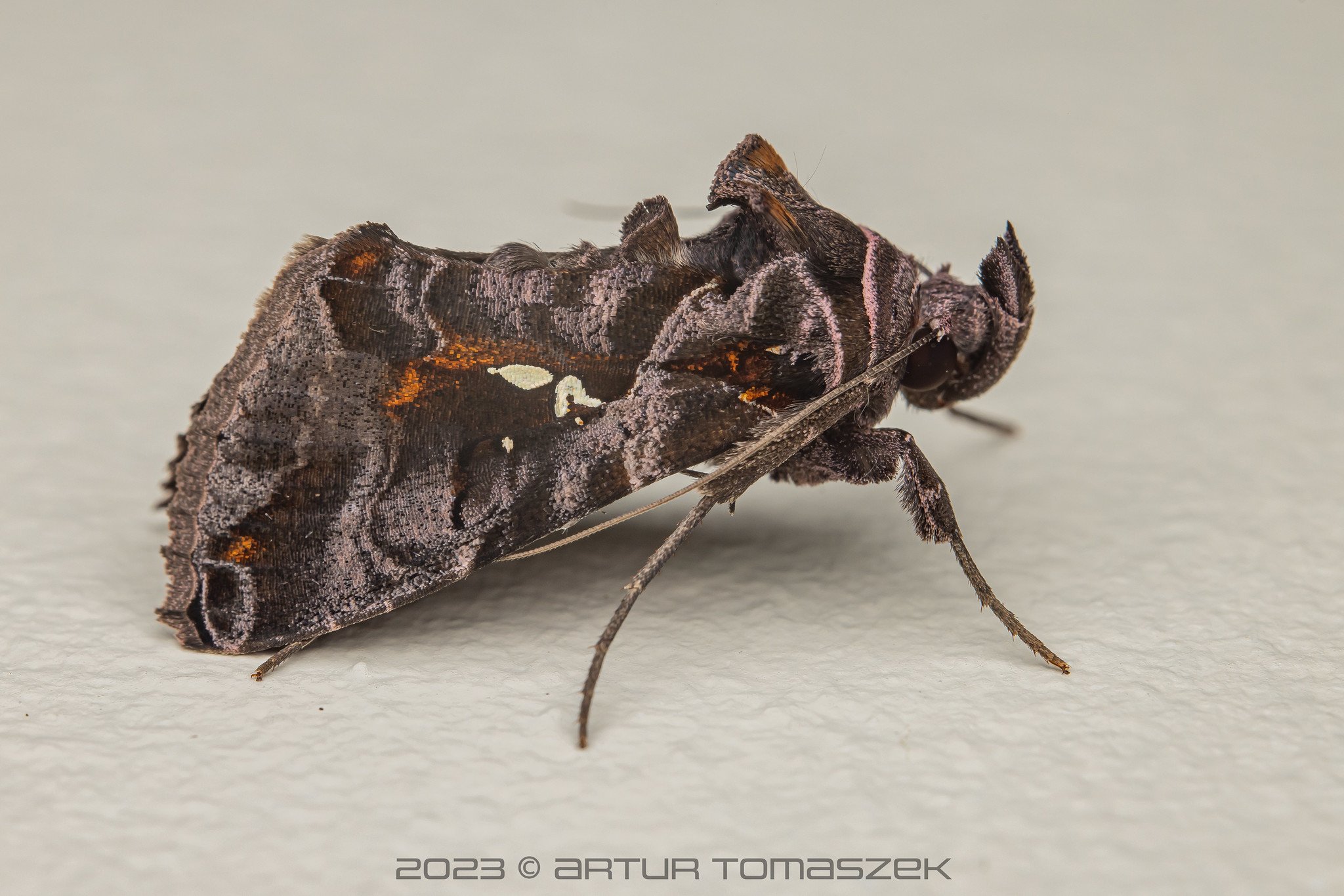
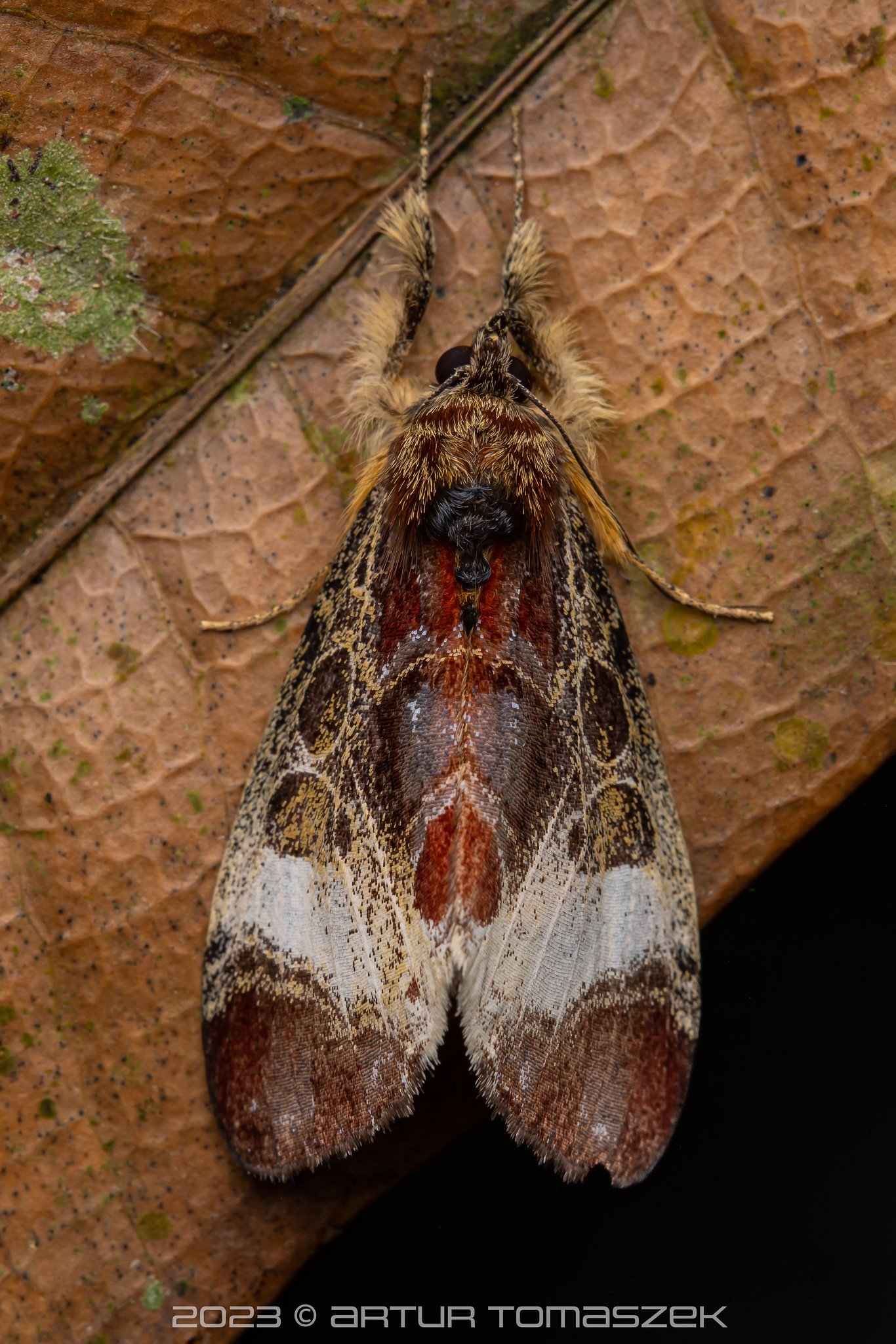
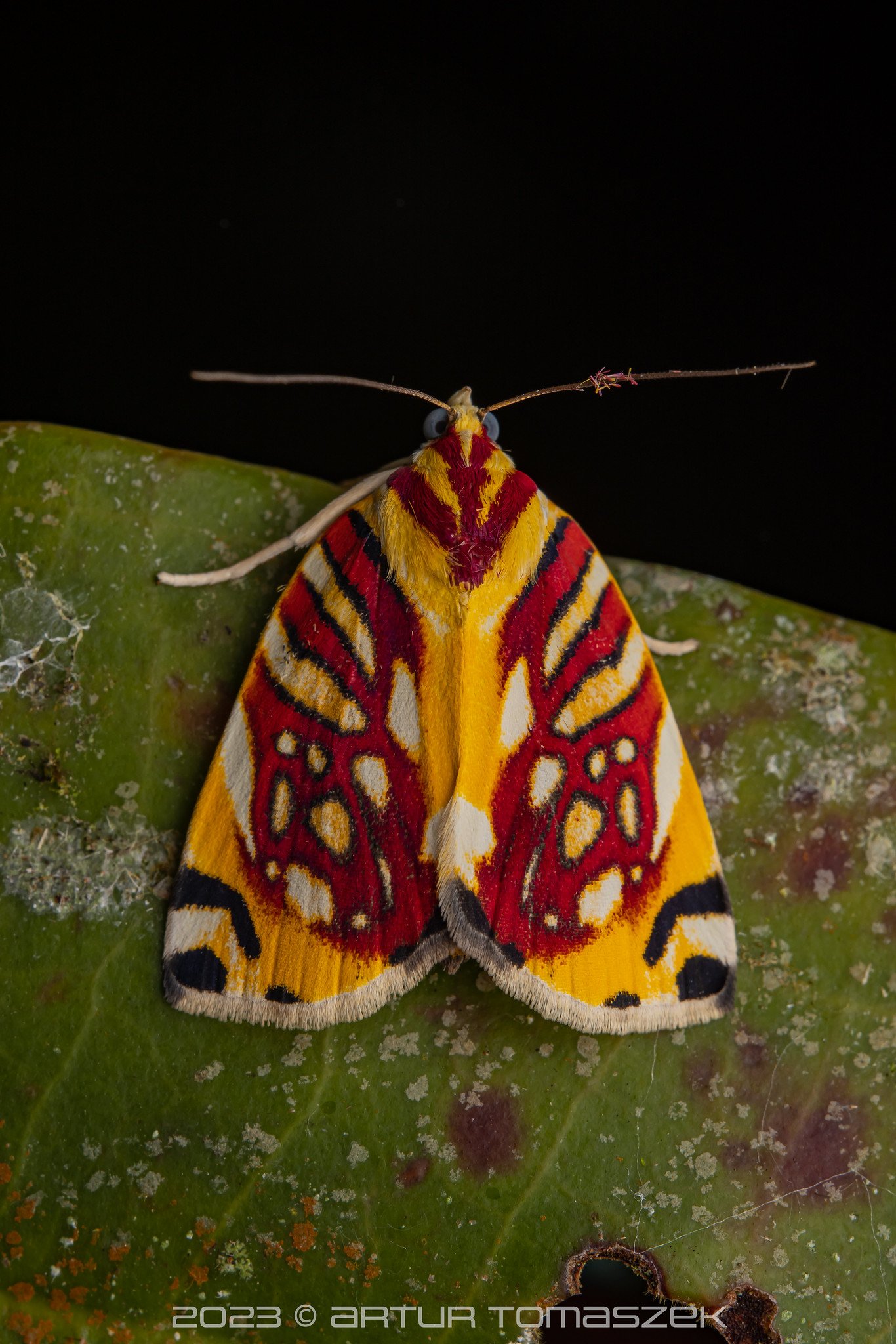
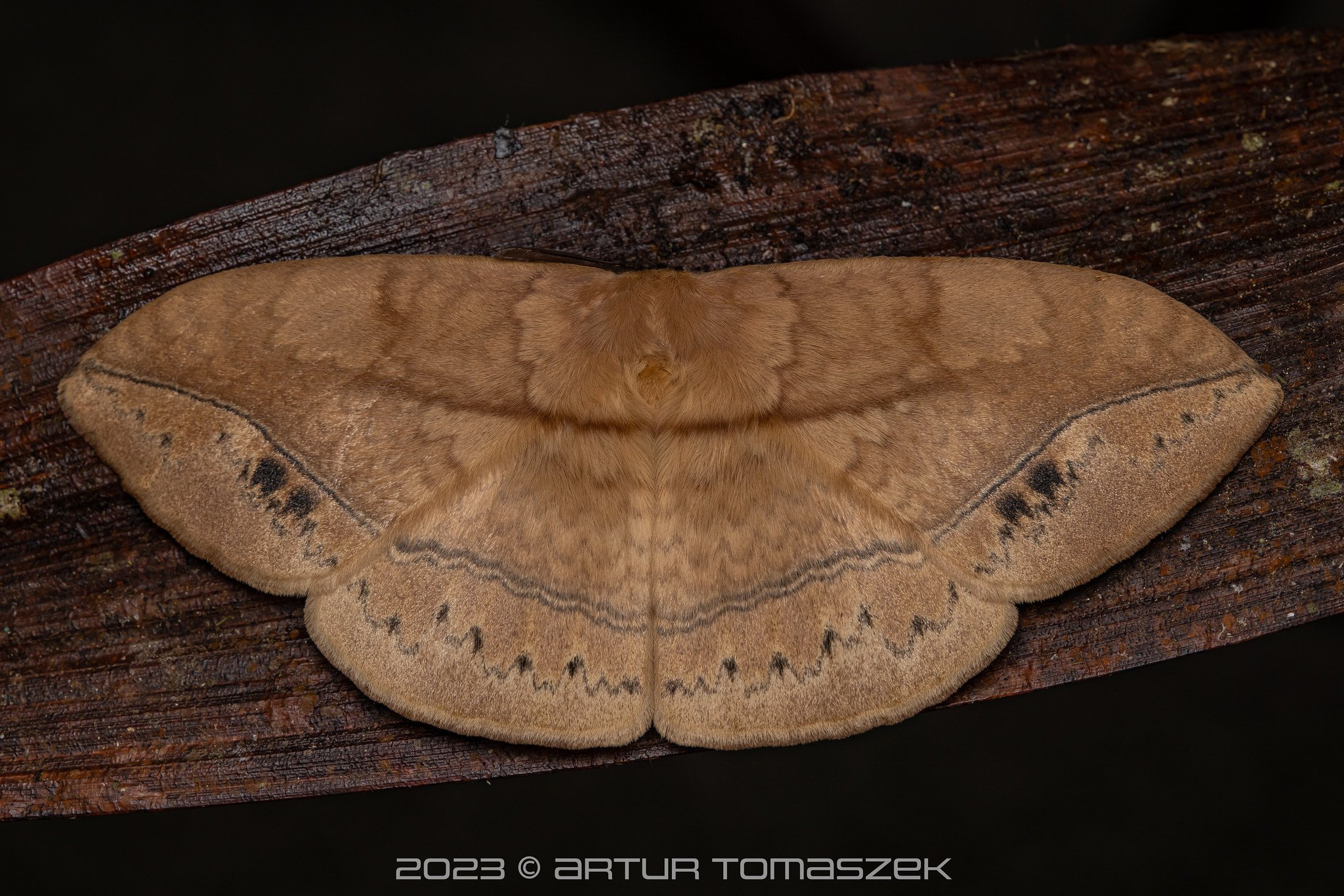
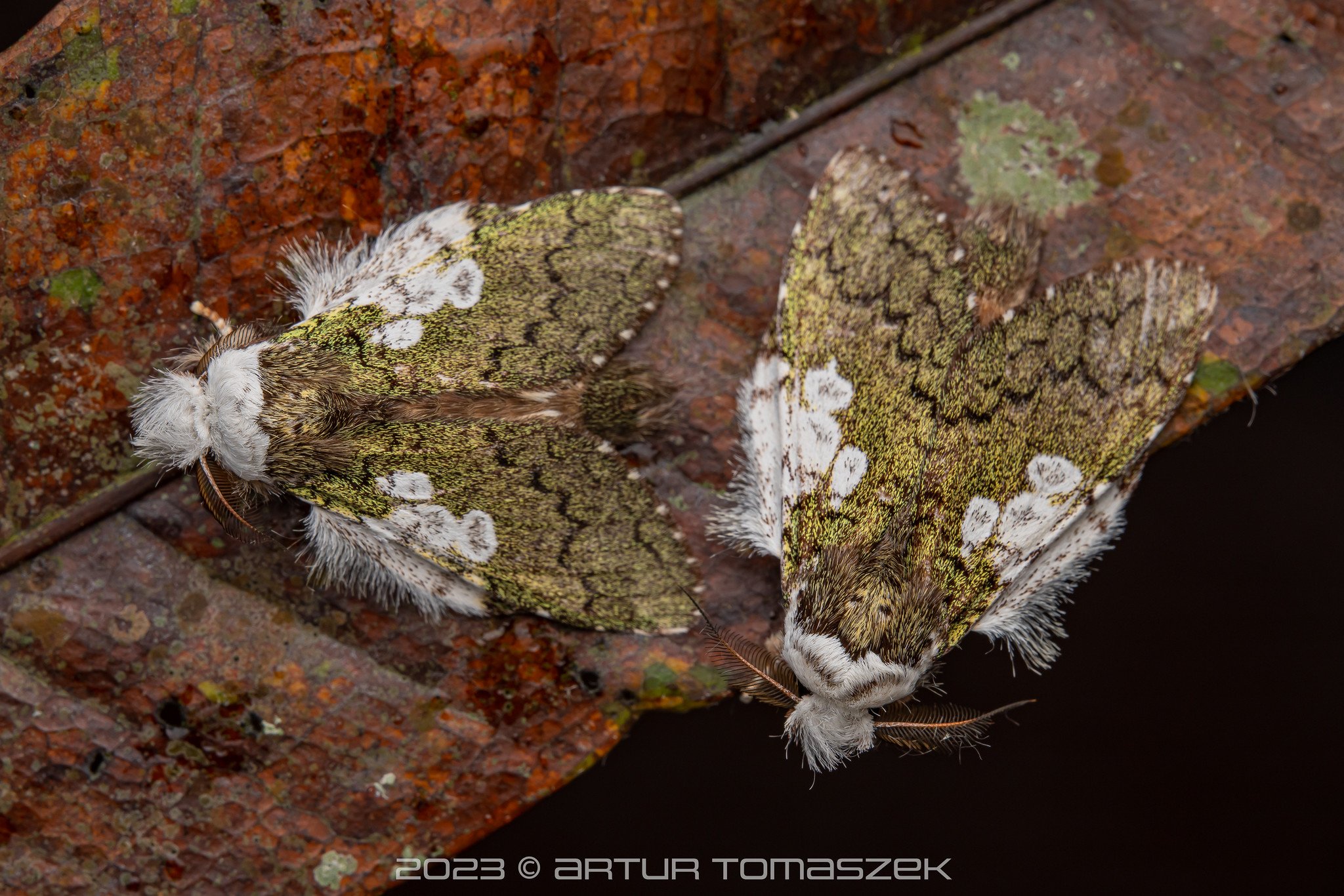
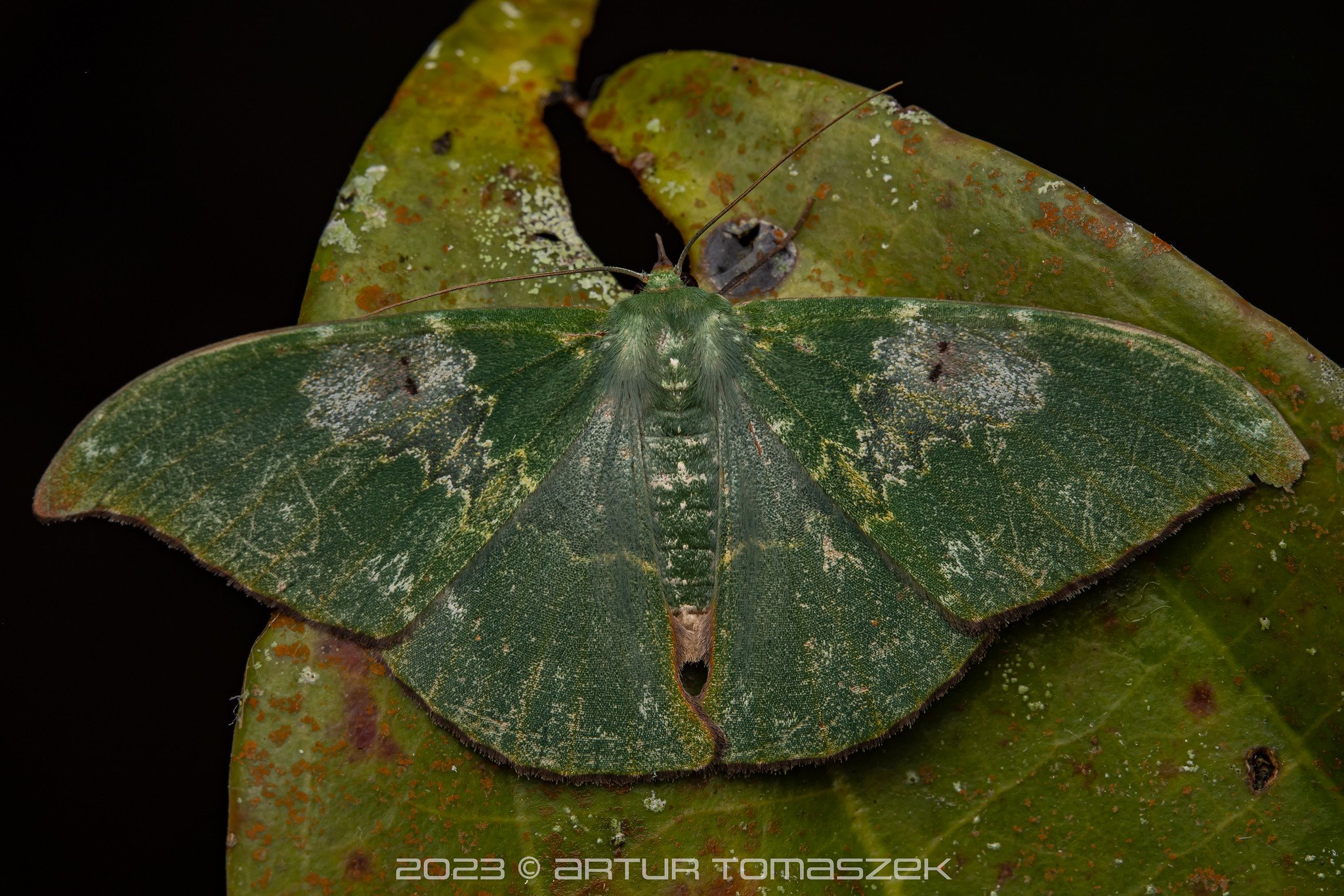
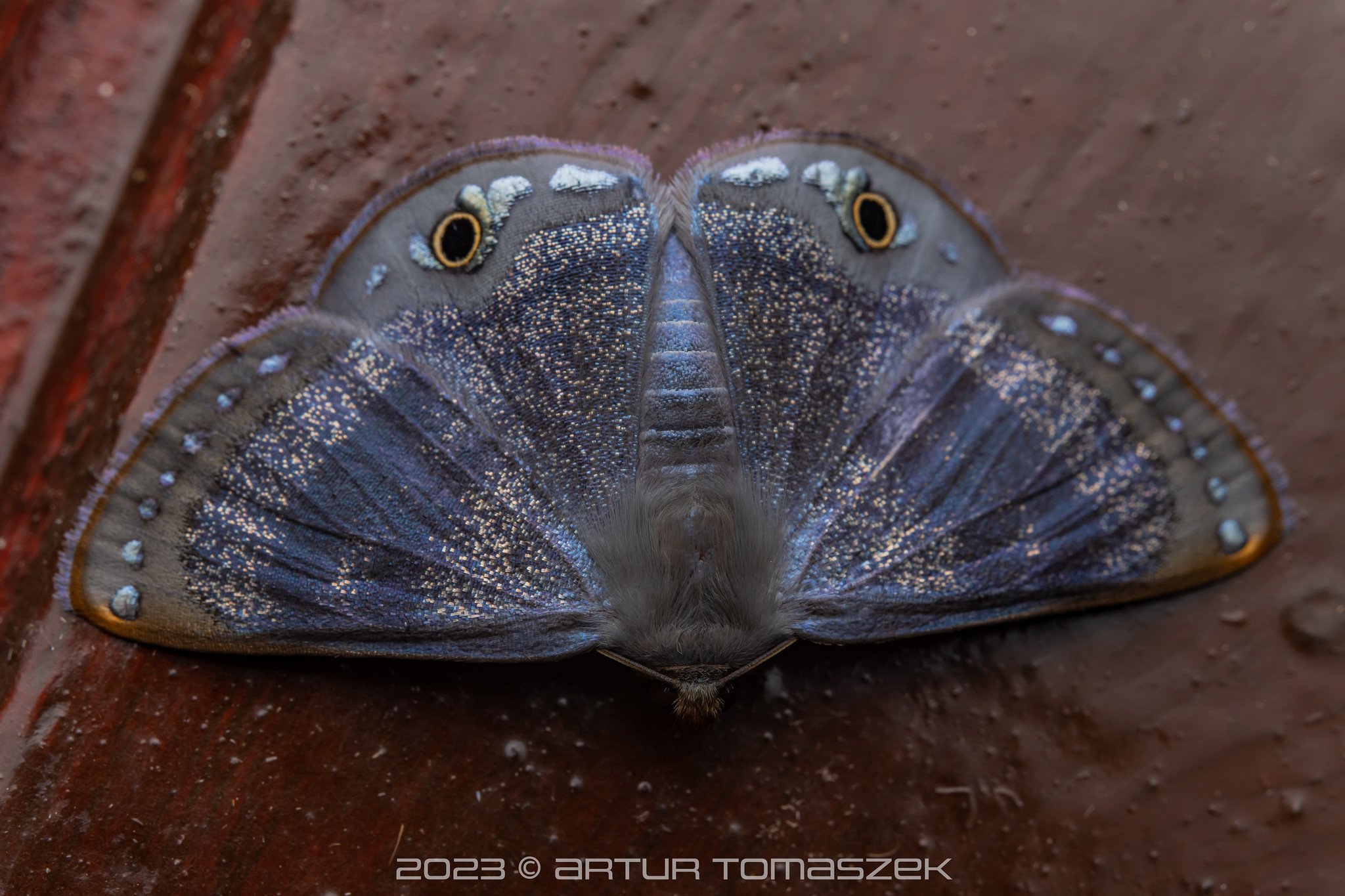
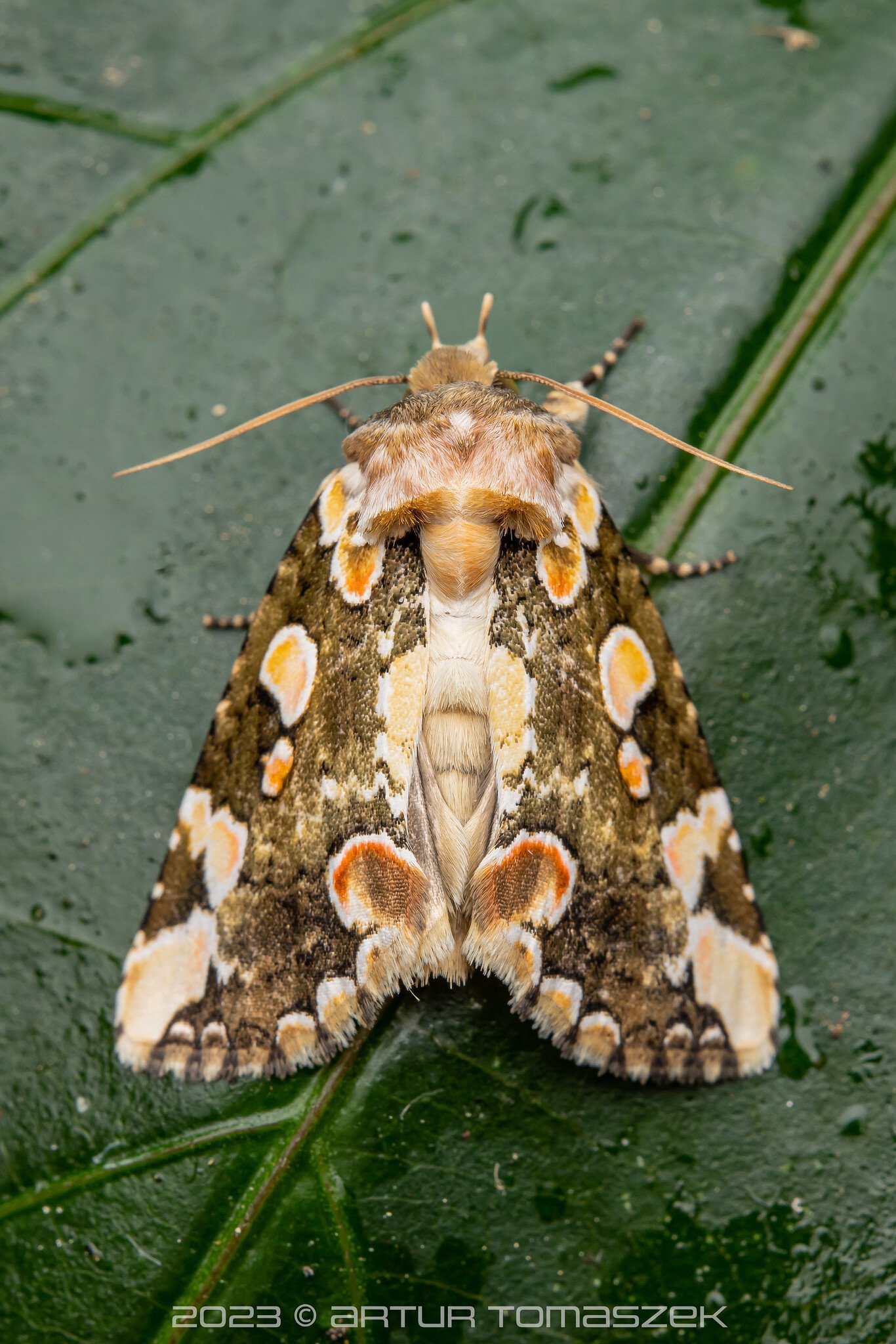
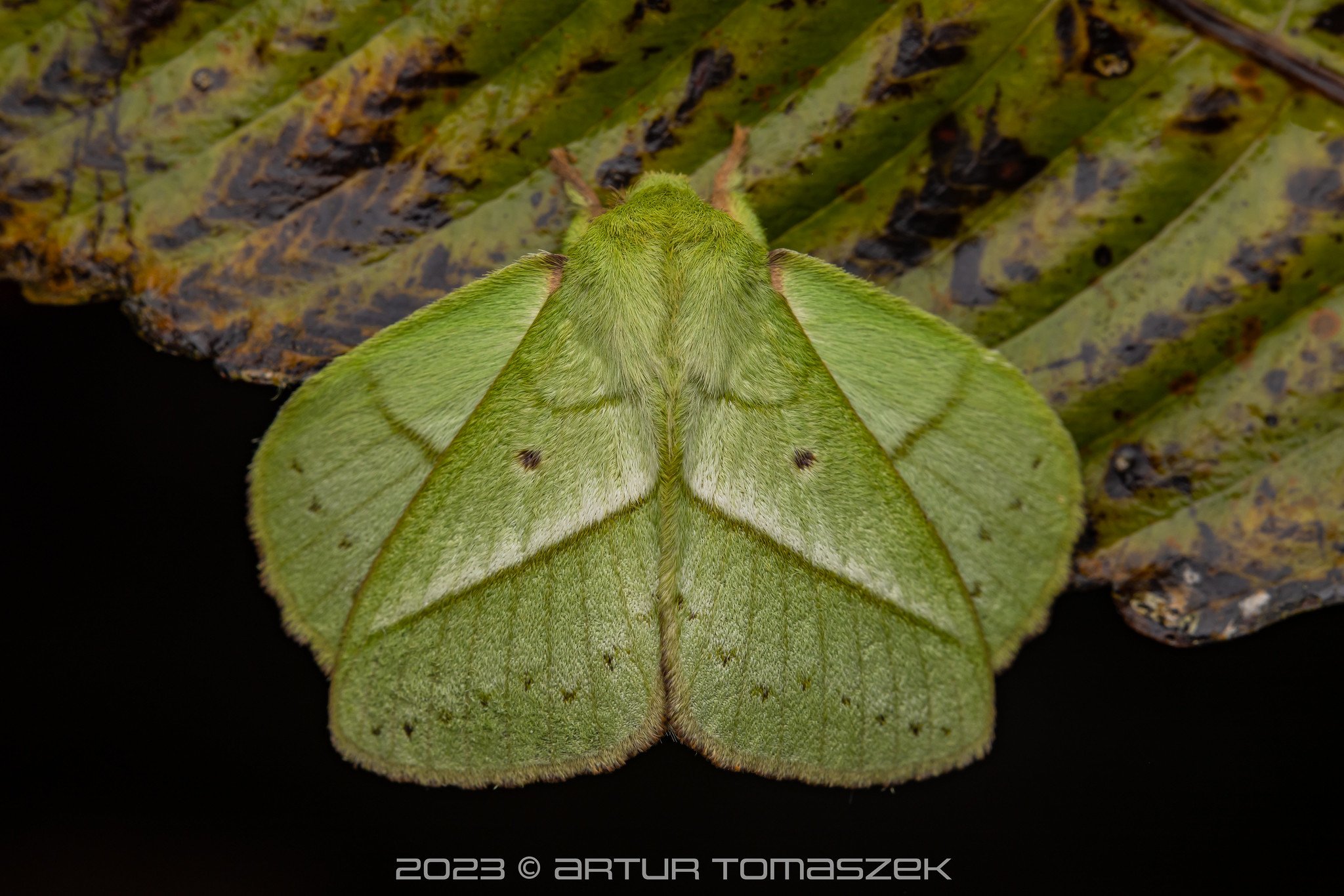
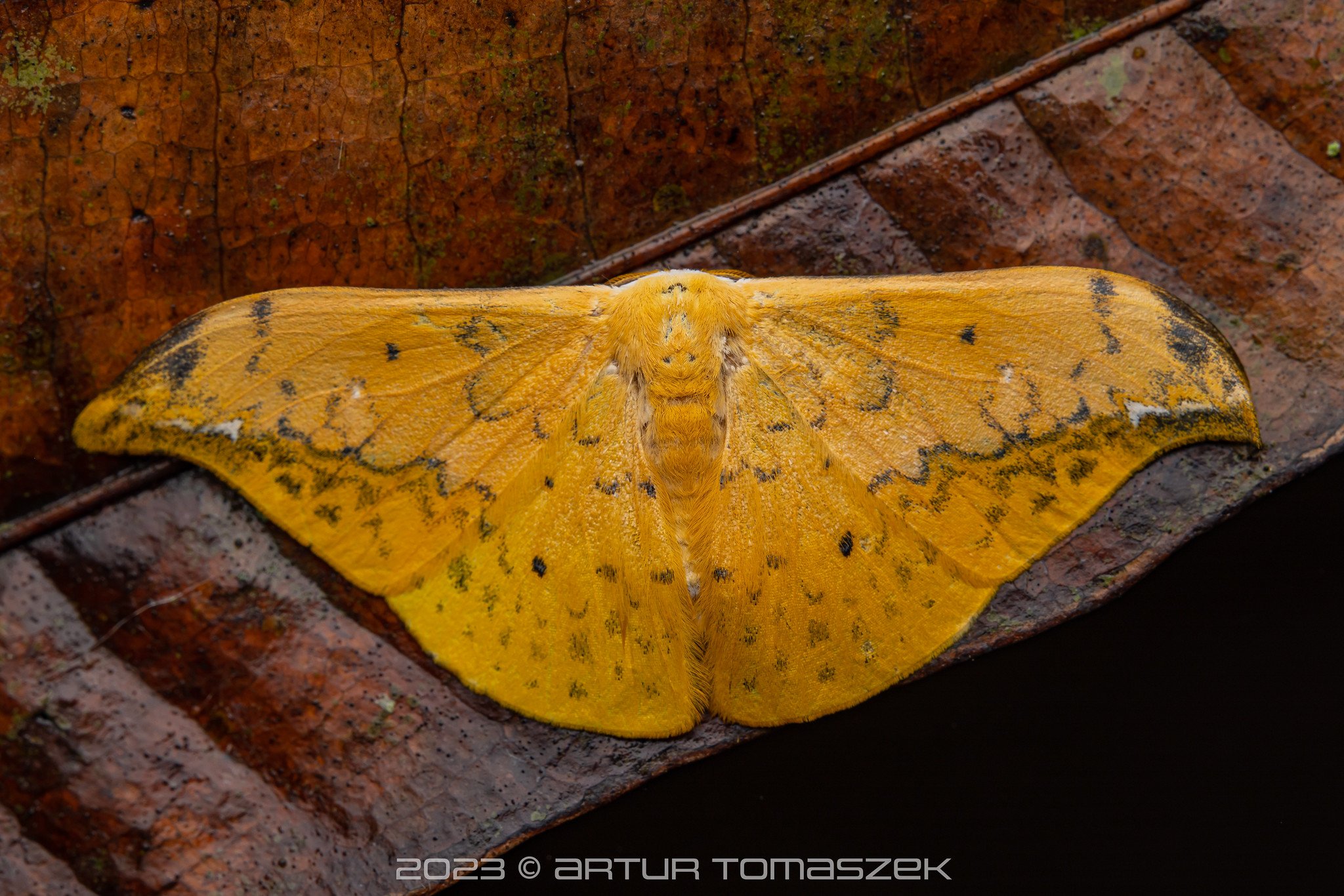
The stunning Mount Kinabalu on one of the last days
Although the weather wasn’t kind to us, hiking one of the oldest rainforests on our planet was a breath-taking experience and seeing its wild gems was a huge privilege. Until the next time, Borneo!
The lush rainforest in Kinabalu Park
More photos in our Flickr albums:




